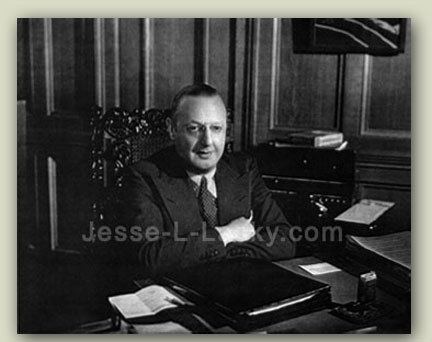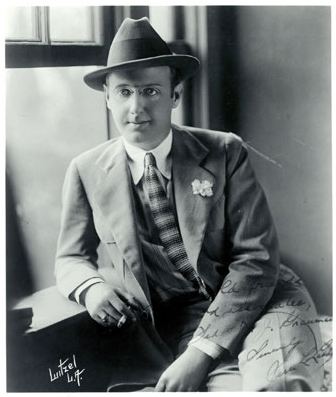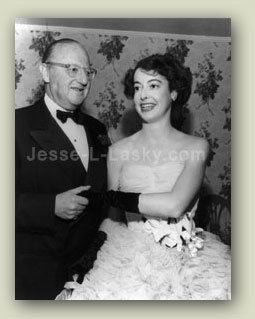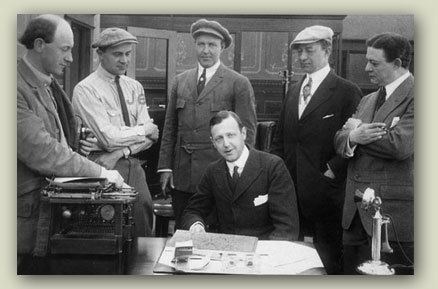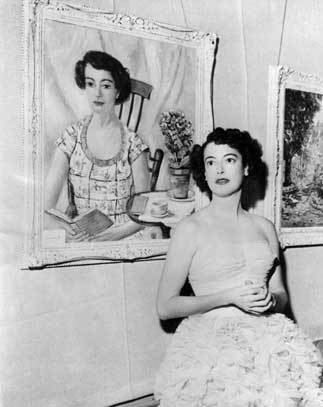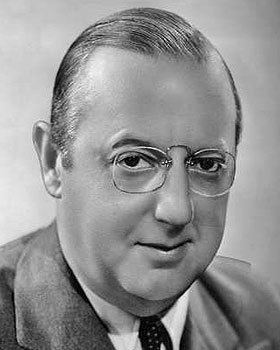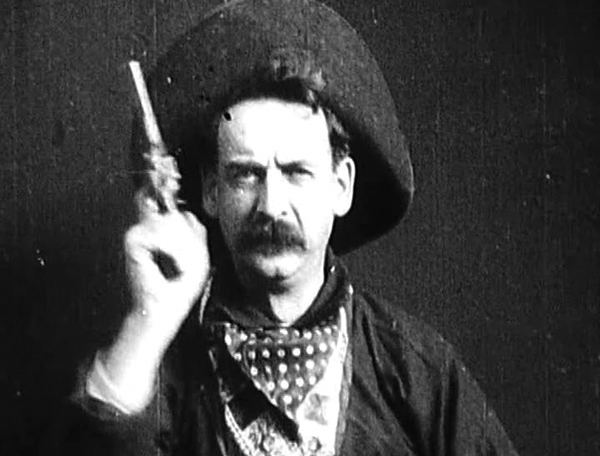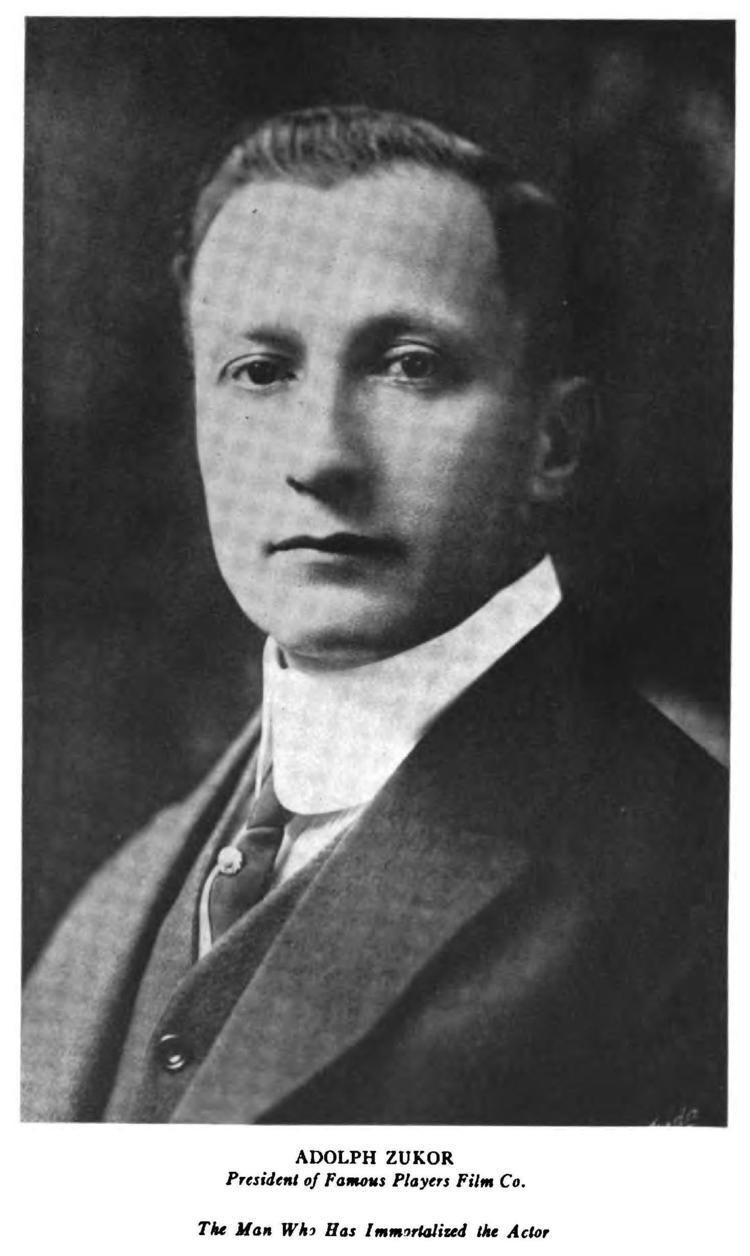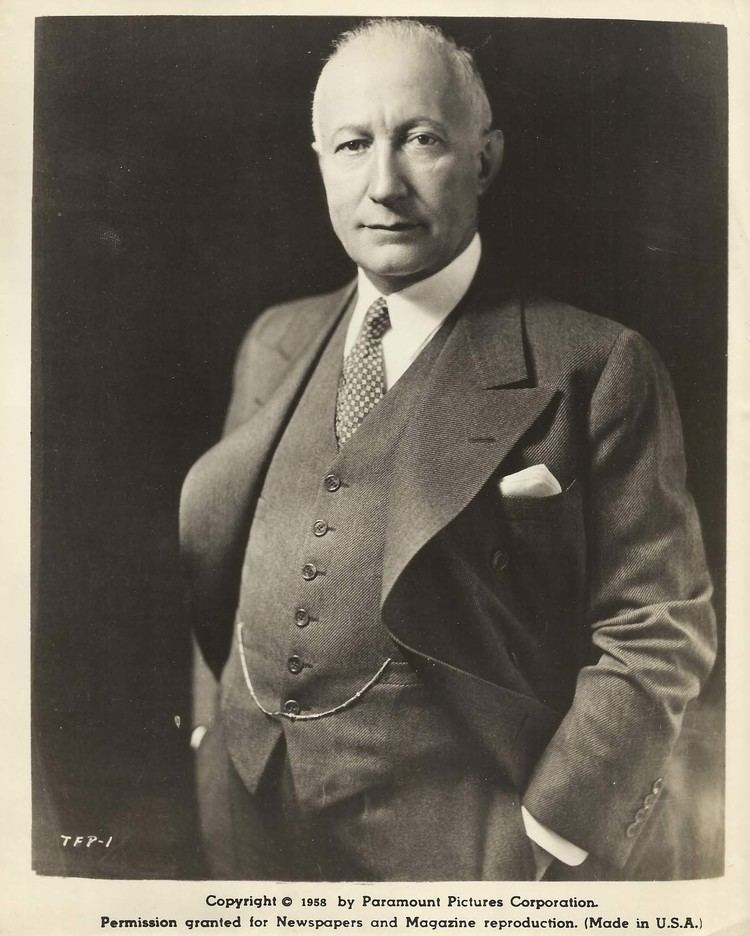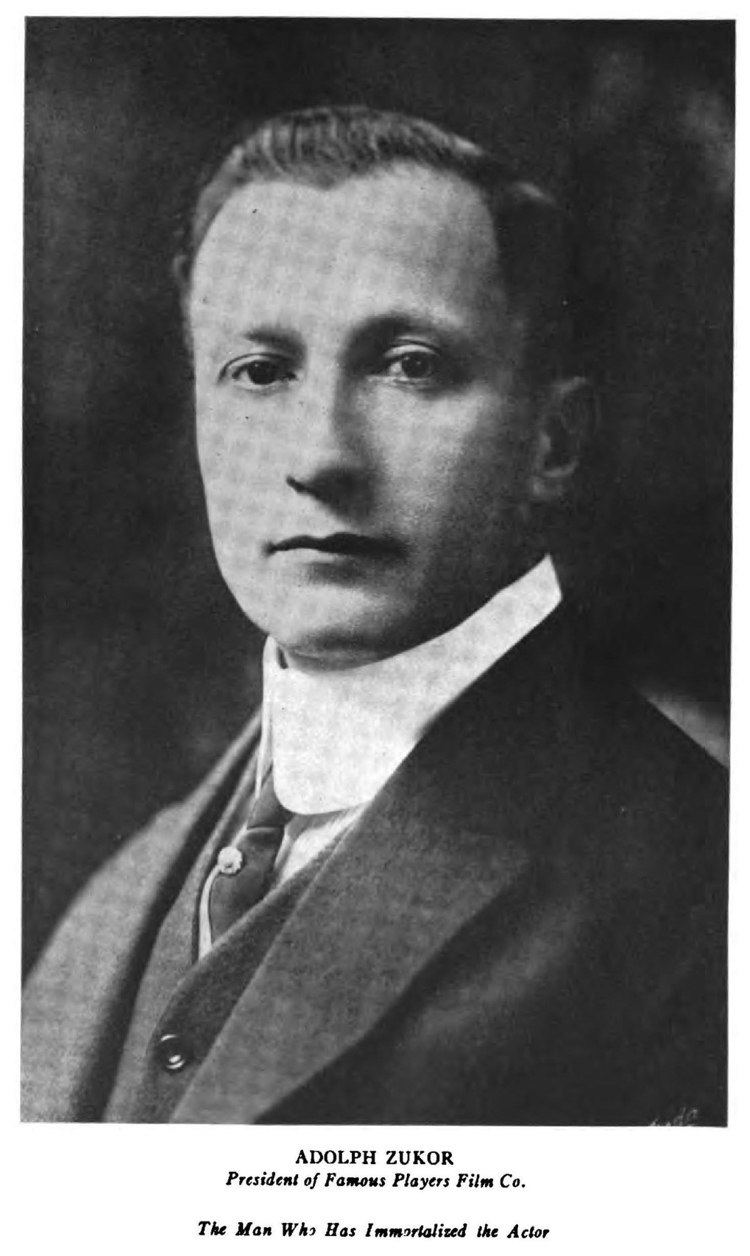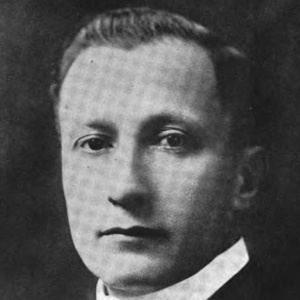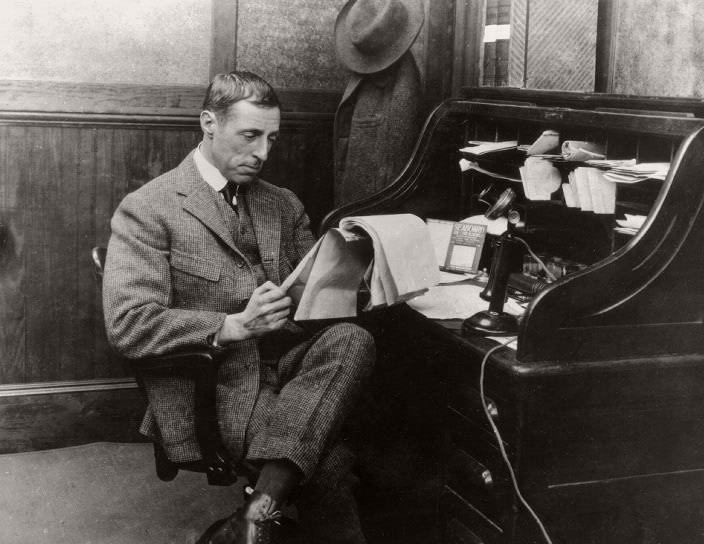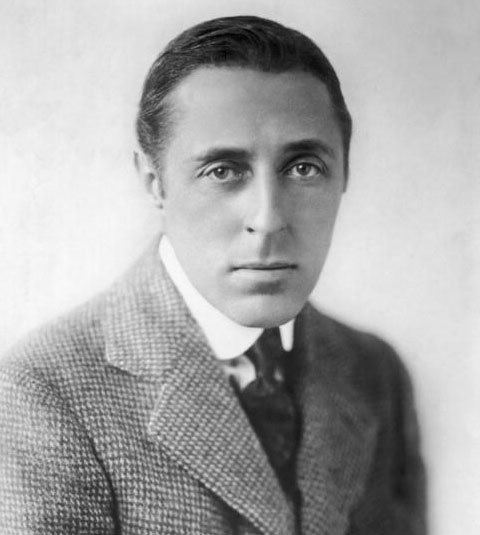|
|
محل درج آگهی و تبلیغات
نوشته شده در تاريخ پنجشنبه 13 شهريور 1399
توسط elmiraluong
Jesse Lasky Producer
|
|
Blanche Lasky |
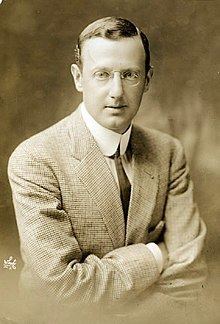 |
January 13, 1958, Beverly Hills, California, United States Bessie Ida Ginsberg (m. 1909–1958) Jesse L. Lasky, Jr., Betty Lasky, Billy Lasky, Burton Lasky The Squaw Man, Sergeant York, The Covered Wagon, Joan the Woman, Why Change Your Wife?
Adolph Zukor, Cecil B DeMille, Wallace Reid, Douglas Fairbanks, Mary Pickford |
Born in to a Jewish family in San Francisco, California, he worked at a variety of jobs but began his entertainment career as a vaudeville performer that led to the motion picture business. In 1911 Lasky was the producer of two Broadway musicals, Hello, Paris and A La Broadway. Presumably this is how Cecil B. DeMille knew him before they both ventured into motion pictures in 1913. Lasky's sister, Blanche, married Samuel Goldwyn and in 1913 Lasky and Goldwyn teamed with Cecil B. DeMille and Oscar Apfel to form the Jesse L. Lasky Feature Play Company. With limited funds, they rented a barn near Los Angeles where they made Hollywood's first feature film, DeMille's The Squaw Man. Known today as the Lasky-DeMille Barn, it is home to the Hollywood Heritage Museum. In 1916, their company merged with Adolph Zukor's Famous Players Film Company to create the Famous Players-Lasky Corporation. In 1920, Famous Players-Lasky built a large studio facility in Astoria, New York, now known as the Kaufman Astoria Studios. In 1927, Lasky was one of the thirty-six people who founded the Academy of Motion Picture Arts and Sciences.
Financial problems arose within the industry as a result of the Great Depression and the Famous Players-Lasky Company went into receivership in 1933. Lasky then partnered with Mary Pickford to produce films but within a few years she dissolved their business relationship. Lasky then found work as a producer at one of the big studios until 1945 when he formed his own production company. He made his last film in 1951 and in 1957 published his autobiography, I Blow My Own Horn.
Jesse L. Lasky died at age 77 from a heart attack in Beverly Hills. He is interred in Hollywood Forever Cemetery, adjacent to Paramount Studios, in Hollywood.
For his contribution to the motion picture industry, Lasky has a star on the Hollywood Walk of Fame at 6433 Hollywood Boulevard. Lasky Drive in Beverly Hills was named in his honor.
Jesse L. Lasky Wikipedia
نوشته شده در تاريخ پنجشنبه 13 شهريور 1399
توسط elmiraluong
James Rennie Film actor
|
|
University of Toronto |
 |
July 31, 1965, New York City, New York, United States Sarah Eldon McConnell (m. 1939–1965), Dorothy Gish (m. 1920–1935) Illicit, Now - Voyager, Remodeling Her Husband, The Bad Man, Wilson
Dorothy Gish, Archie Mayo, Mary Gish, Clarence G Badger, Irving Rapper |
In 1815 he graduated M.A. from Glasgow University where he had previously studied natural sciences, and took holy orders. In 1821 he moved to London. From 1830 to 1834 he was professor of natural history and zoology at King's College. From then on he made his living as a natural history author.
Rennie emigrated to Australia, 1840, where he ran the College High School in Elizabeth Street, Sydney, with an emphasis on the arts and natural history.
Rennie wrote, among many other books, The Natural History of Insects published by John Murray (1829) and co-authored with John Obadiah Westwood; Insect Architecture (1830), a popular work originally in the Library of Entertaining Knowledge but reissued in 1857 by John Murray; and Alphabet of Botany For Use of Beginners (1834).
Among the books that Rennie edited was Gilbert White's The Natural History and Antiquities of Selborne in 1833. He also gave lectures, including the 1831 Royal Institution Christmas Lecture.
- Rennie, James. 1831. The Architecture of Birds. The Library of Entertaining Knowledge. London: Charles Knight, Pall Mall East.
James Rennie Wikipedia
نوشته شده در تاريخ پنجشنبه 13 شهريور 1399
توسط elmiraluong
Harold Clayton Lloyd Charlie Chaplin Charlie Chaplin Slapstick Buster Keaton
|
|
1913–1963 Actor American Harold Lloyd |
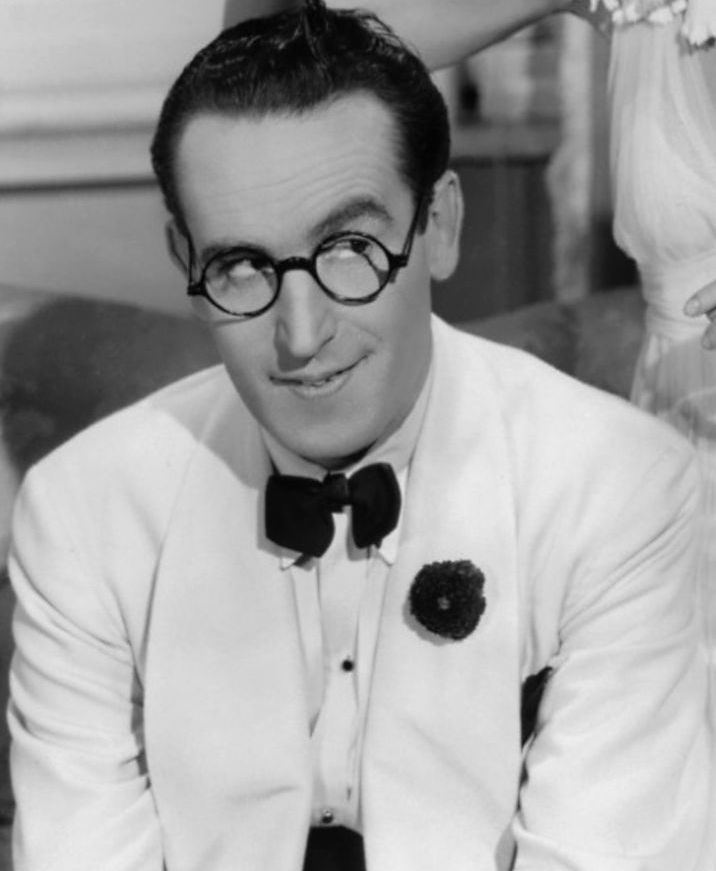 |
April 20, 1893 Burchard, Nebraska, United States (1893-04-20) Motion pictures (silent and sound) March 8, 1971, Beverly Hills, California, United States Mildred Davis (m. 1923–1969) Safety Last!, The Freshman, Girl Shy, The Kid Brother, Why Worry?
Buster Keaton, Charlie Chaplin, Mildred Davis, Hal Roach, Fred C Newmeyer |
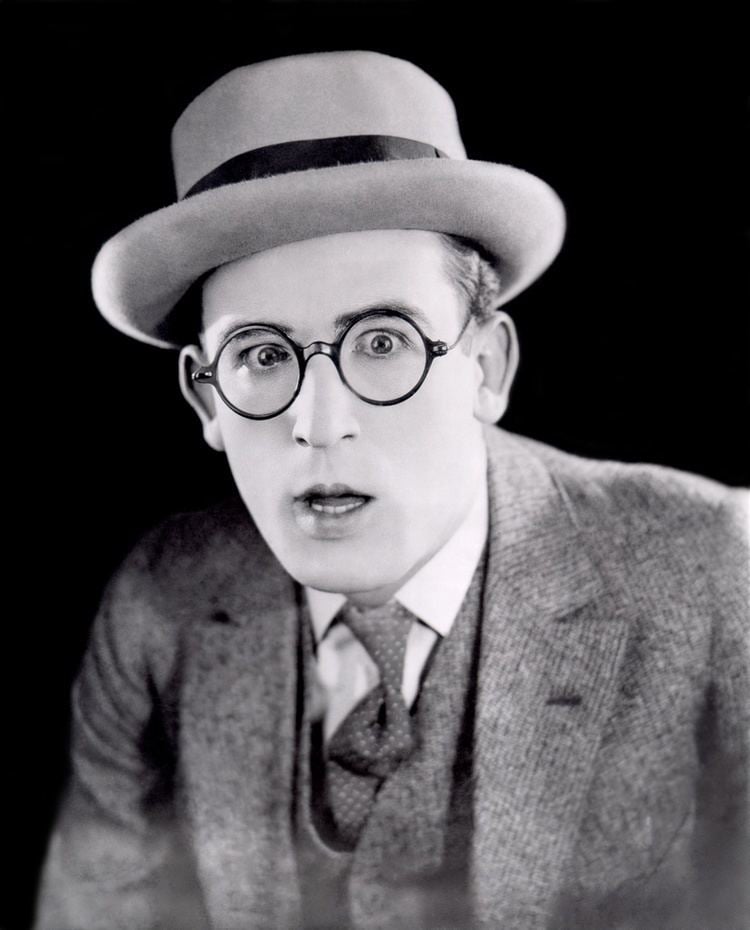
Harold Lloyd ranks alongside Charlie Chaplin and Buster Keaton as one of the most popular and influential film comedians of the silent film era. Lloyd made nearly 200 comedy films, both silent and "talkies", between 1914 and 1947. He is best known for his bespectacled "Glass" character, a resourceful, success-seeking go-getter who was perfectly in tune with 1920s-era United States. 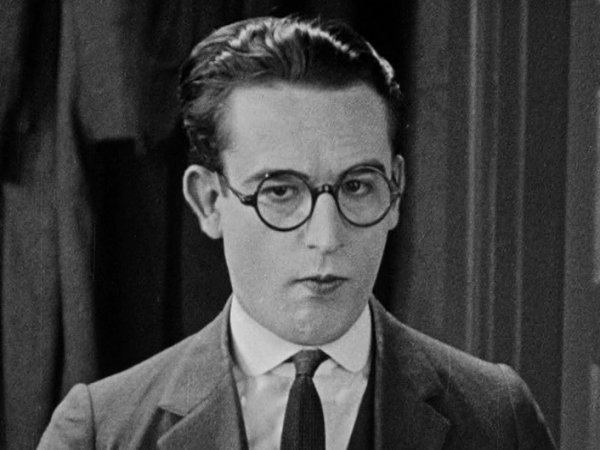
His films frequently contained "thrill sequences" of extended chase scenes and daredevil physical feats, for which he is best remembered today. Lloyd hanging from the hands of a clock high above the street (in reality a trick shot) in Safety Last! (1923) is one of the most enduring images in all of cinema. Lloyd did many dangerous stunts himself, despite having injured himself in August 1919 while doing publicity pictures for the Roach studio. An accident with a bomb mistaken as a prop resulted in the loss of the thumb and index finger of his right hand (the injury was disguised on future films with the use of a special prosthetic glove, though the glove often did not go unnoticed). 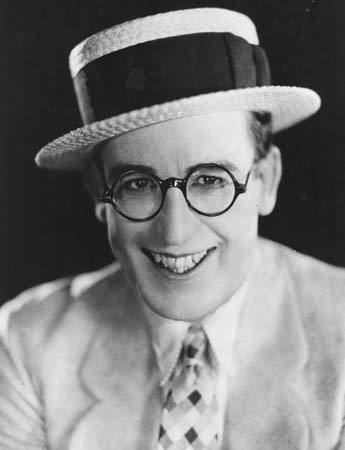
Although Lloyd's individual films were not as commercially successful as Chaplin's on average, he was far more prolific (releasing twelve feature films in the 1920s while Chaplin released just four), and made more money overall ($15.7 million to Chaplin's $10.5 million). 
Lloyd was born in Burchard, Nebraska, on April 20, 1893, to James Darsie Lloyd and Sarah Elisabeth Fraser; his paternal great-grandparents were from Wales.
In 1910, after his father had several business ventures fail, Lloyd's parents divorced and his father moved with his son to San Diego. Lloyd had acted in theater since a child, but in California he began acting in one-reel film comedies around 1912. Lloyd worked with Thomas Edison's motion picture company, and his first role was a small part as a Yaqui Indian in the production of The Old Monk's Tale. At the age of 20, Harold moved to Los Angeles, and took up roles in several Keystone comedies. He was also hired by Universal as an extra and soon became friends with aspiring filmmaker, Hal Roach. Lloyd began collaborating with Roach who had formed his own studio in 1913. Roach and Lloyd created "Lonesome Luke", similar to and playing off the success of Charlie Chaplin films.
Lloyd hired Bebe Daniels as a supporting actress in 1914; the two of them were involved romantically and were known as "The Boy" and "The Girl." In 1919, she left Lloyd to pursue her dramatic aspirations. Lloyd replaced Daniels with Mildred Davis in 1919. Lloyd was tipped off by Hal Roach to watch Davis in a movie. Reportedly, the more Lloyd watched Davis the more he liked her. Lloyd's first reaction in seeing her was that "she looked like a big French doll!" By 1918, Lloyd and Roach had begun to develop his character beyond an imitation of his contemporaries. Harold Lloyd would move away from tragicomic personas, and portray an everyman with unwavering confidence and optimism. The persona Lloyd referred to as his "Glass" character (often named "Harold" in the silent films) was a much more mature comedy character with greater potential for sympathy and emotional depth, and was easy for audiences of the time to identify with. The "Glass" character is said to have been created after Roach suggested that Harold was too handsome to do comedy without some sort of disguise. To create his new character Lloyd donned a pair of lensless horn-rimmed eyeglasses but wore normal clothing; previously, he had worn a fake mustache and ill-fitting clothes as the Chaplinesque "Lonesome Luke". "When I adopted the glasses," he recalled in a 1962 interview with Harry Reasoner, "it more or less put me in a different category because I became a human being. He was a kid that you would meet next door, across the street, but at the same time I could still do all the crazy things that we did before, but you believed them. They were natural and the romance could be believable." Unlike most silent comedy personae, "Harold" was never typecast to a social class, but he was always striving for success and recognition. Within the first few years of the character's debut, he had portrayed social ranks ranging from a starving vagrant in From Hand to Mouth to a wealthy socialite in Captain Kidd's Kids. Lloyd's career was not all laughs, however. In August 1919, while posing for some promotional still photographs in the Los Angeles Witzel Photography Studio, he was seriously injured holding a prop bomb thought merely to be a smoke pot. It exploded and mangled his hand, causing him to lose a thumb and forefinger. The blast was severe enough that the cameraman and prop director nearby were also seriously injured. Lloyd was in the act of lighting a cigarette from the fuse of the bomb when it exploded, also badly burning his face and chest and injuring his eye. Despite the proximity of the blast to his face, he retained his sight. As he recalled in 1930, "I thought I would surely be so disabled that I would never be able to work again. I didn't suppose that I would have one five-hundredth of what I have now. Still I thought, 'Life is worth while. Just to be alive.' I still think so." Beginning in 1921, Roach and Lloyd moved from shorts to feature-length comedies. These included the acclaimed Grandma's Boy, which (along with Chaplin's The Kid) pioneered the combination of complex character development and film comedy, the highly popular Safety Last! (1923), which cemented Lloyd's stardom (and is the oldest film on the American Film Institute's List of 100 Most Thrilling Movies), and Why Worry? (1923). Lloyd and Roach parted ways in 1924, and Lloyd became the independent producer of his own films. These included his most accomplished mature features Girl Shy, The Freshman (his highest-grossing silent feature), The Kid Brother, and Speedy, his final silent film. Welcome Danger (1929) was originally a silent film but Lloyd decided late in the production to remake it with dialogue. All of these films were enormously successful and profitable, and Lloyd would eventually become the highest paid film performer of the 1920s. They were also highly influential and still find many fans among modern audiences, a testament to the originality and film-making skill of Lloyd and his collaborators. From this success he became one of the wealthiest and most influential figures in early Hollywood. In 1924, Lloyd formed his own independent film production company, the Harold Lloyd Film Corporation, with his films distributed by Pathé and later Paramount and Twentieth Century-Fox. Lloyd was a founding member of the Academy of Motion Picture Arts and Sciences. Released a few weeks before the start of the Great Depression, Welcome Danger was a huge financial success, with audiences eager to hear Lloyd's voice on film. Lloyd's rate of film releases, which had been one or two a year in the 1920s, slowed to about one every two years until 1938. The films released during this period were: Feet First, with a similar scenario to Safety Last which found him clinging to a skyscraper at the climax; Movie Crazy with Constance Cummings; The Cat's-Paw, which was a dark political comedy and a big departure for Lloyd; and The Milky Way, which was Lloyd's only attempt at the fashionable genre of the screwball comedy film. To this point the films had been produced by Lloyd's company. However, his go-getting screen character was out of touch with Great Depression movie audiences of the 1930s. As the length of time between his film releases increased, his popularity declined, as did the fortunes of his production company. His final film of the decade, Professor Beware, was made by the Paramount staff, with Lloyd functioning only as actor and partial financier. On March 23, 1937, Lloyd sold the land of his studio, Harold Lloyd Motion Picture Company, to The Church of Jesus Christ of Latter-day Saints. The location is now the site of the Los Angeles California Temple. Lloyd produced a few comedies for RKO Radio Pictures in the early 1940s but otherwise retired from the screen until 1947. He returned for an additional starring appearance in The Sin of Harold Diddlebock, an ill-fated homage to Lloyd's career, directed by Preston Sturges and financed by Howard Hughes. This film had the inspired idea of following Harold's Jazz Age, optimistic character from The Freshman into the Great Depression years. Diddlebock opened with footage from The Freshman (for which Lloyd was paid a royalty of $50,000, matching his actor's fee) and Lloyd was sufficiently youthful-looking to match the older scenes quite well. Lloyd and Sturges had different conceptions of the material and fought frequently during the shoot; Lloyd was particularly concerned that while Sturges had spent three to four months on the script of the first third of the film, "the last two thirds of it he wrote in a week or less". The finished film was released briefly in 1947, then shelved by producer Hughes. Hughes issued a recut version of the film in 1951 through RKO under the title Mad Wednesday. Such was Lloyd's disdain that he sued Howard Hughes, the California Corporation and RKO for damages to his reputation "as an outstanding motion picture star and personality", eventually accepting a $30,000 settlement. Lloyd married his leading lady, Mildred Davis, on Saturday, February 10, 1923 in Los Angeles. They had two children together: Gloria Lloyd (1923-2012) and Harold Clayton Lloyd, Jr.. They also adopted Gloria Freeman (1924—1986) in September 1930, whom they renamed Marjorie Elizabeth Lloyd but was known as "Peggy" for most of her life. Lloyd discouraged Davis from continuing her acting career. He later relented but by that time her career momentum was lost. Davis died from a heart attack in 1969, two years before Lloyd's death. Though her real age was a guarded secret, a family spokesperson at the time indicated she was 66 years old. Lloyd's son was gay and, according to Annette D'Agostino Lloyd (no relation) in the book Harold Lloyd: Master Comedian, Harold Sr. took this in good spirit. Harold Jr. died from complications of a stroke three months after his father. In 1925, at the height of his movie career, Lloyd entered into Freemasonry at the Alexander Hamilton Lodge No. 535 of Hollywood, advancing quickly through both the York Rite and Scottish Rite, and then joined Al Malaikah Shrine in Los Angeles. He took the degrees of the Royal Arch with his father. In 1926, he became a 32° Scottish Rite Mason in the Valley of Los Angeles, California. He was vested with the Rank and Decoration of Knight Commander Court of Honor (KCCH) and eventually with the Inspector General Honorary, 33rd degree. Lloyd's Beverly Hills home, "Greenacres", was built in 1926–1929, with 44 rooms, 26 bathrooms, 12 fountains, 12 gardens, and a nine-hole golf course. A portion of Lloyd's personal inventory of his silent films (then estimated to be worth $2 million) was destroyed in August 1943 when his film vault caught fire. Seven firemen were overcome while inhaling chlorine gas from the blaze. Lloyd himself was saved by his wife, who dragged him to safety outdoors after he collapsed at the door of the film vault. The fire spared the main house and outbuildings. After attempting to maintain the home as a museum of film history, as Lloyd had wished, the Lloyd family sold it to a developer in 1975. The grounds were subsequently subdivided but the main house and the estate's principal gardens remain and are frequently used for civic fundraising events and as a filming location, appearing in films like Westworld and The Loved One. It is listed on the National Register of Historic Places. Greenacres was built in the 1920s in Beverly Hills, one of Los Angeles's all-white planned communities. The area had restrictive covenants prohibiting non-whites (this also included Jews) from living there unless they were in the employment of a white resident (typically as a domestic servant). In 1940, Lloyd supported a neighborhood improvement association in Beverly Hills that attempted to enforce the all-white covenant in court after a number of black actors and businessmen had begun buying properties in the area. However, in his decision, federal judge Thurmond Clarke dismissed the action stating that it was time that "members of the Negro race are accorded, without reservations or evasions, the full rights guaranteed to them under the 14th amendment." In 1948 the United States Supreme Court declared in Shelley v. Kraemer that all racially restrictive covenants in the United States were unenforceable. In October 1944, Lloyd emerged as the director and host of The Old Gold Comedy Theater, an NBC radio anthology series, after Preston Sturges, who had turned the job down, recommended him for it. The show presented half-hour radio adaptations of recently successful film comedies, beginning with Palm Beach Story with Claudette Colbert and Robert Young. Some saw The Old Gold Comedy Theater as being a lighter version of Lux Radio Theater, and it featured some of the best-known film and radio personalities of the day, including Fred Allen, June Allyson, Lucille Ball, Ralph Bellamy, Linda Darnell, Susan Hayward, Herbert Marshall, Dick Powell, Edward G. Robinson, Jane Wyman, and Alan Young. But the show's half-hour format—which meant the material might have been truncated too severely—and Lloyd's sounding somewhat ill at ease on the air for much of the season (though he spent weeks training himself to speak on radio prior to the show's premiere, and seemed more relaxed toward the end of the series run) may have worked against it. The Old Gold Comedy Theater ended in June 1945 with an adaptation of Tom, Dick and Harry, featuring June Allyson and Reginald Gardiner and was not renewed for the following season. Many years later, acetate discs of 29 of the shows were discovered in Lloyd's home, and they now circulate among old-time radio collectors. Lloyd remained involved in a number of other interests, including civic and charity work. Inspired by having overcome his own serious injuries and burns, he was very active as a Freemason and Shriner with the Shriners Hospital for Crippled Children. He was a Past Potentate of Al-Malaikah Shrine in Los Angeles, and was eventually selected as Imperial Potentate of the Shriners of North America for the year 1949–50. At the installation ceremony for this position on July 25, 1949, 90,000 people were present at Soldier Field, including then sitting U.S. President Harry S Truman, also a 33° Scottish Rite Mason. In recognition of his services to the nation and Freemasonry, Bro. Lloyd was invested with the Rank and Decoration of Knight Commander Court of Honour in 1955 and coroneted an Inspector General Honorary, 33°, in 1965. He appeared as himself on several television shows during his retirement, first on Ed Sullivan's variety show Toast of the Town June 5, 1949, and again on July 6, 1958. He appeared as the Mystery Guest on What's My Line? on April 26, 1953, and twice on This Is Your Life: on March 10, 1954 for Mack Sennett, and again on December 14, 1955, on his own episode. During both appearances, Lloyd's hand injury can clearly be seen. Lloyd studied colors, microscopy, and was very involved with photography, including 3D photography and color film experiments. Some of the earliest 2-color Technicolor tests were shot at his Beverly Hills home (These are included as extra material in the Harold Lloyd Comedy Collection DVD Box Set). He became known for his nude photographs of models, such as Bettie Page and stripper Dixie Evans, for a number of men's magazines. He also took photos of Marilyn Monroe lounging at his pool in a bathing suit, which were published after her death. In 2004, his granddaughter Suzanne produced a book of selections from his photographs, Harold Lloyd's Hollywood Nudes in 3D! (ISBN 1-57912-394-5). Lloyd also provided encouragement and support for a number of younger actors, such as Debbie Reynolds, Robert Wagner, and particularly Jack Lemmon, whom Harold declared as his own choice to play him in a movie of his life and work. Lloyd kept copyright control of most of his films and re-released them infrequently after his retirement. Lloyd did not grant cinematic release because most theaters could not accommodate an organist, and Lloyd did not wish his work to be accompanied by a pianist: "I just don't like pictures played with pianos. We never intended them to be played with pianos." Similarly, his features were never shown on television as Lloyd's price was high: "I want $300,000 per picture for two showings. That's a high price, but if I don't get it, I'm not going to show it. They've come close to it, but they haven't come all the way up". As a consequence, his reputation and public recognition suffered in comparison with Chaplin and Keaton, whose work has generally been more available. Lloyd's film character was so intimately associated with the 1920s era that attempts at revivals in 1940s and 1950s were poorly received, when audiences viewed the 1920s (and silent film in particular) as old-fashioned. In the early 1960s, Lloyd produced two compilation films, featuring scenes from his old comedies, Harold Lloyd's World of Comedy and The Funny Side of Life. The first film was premiered at the 1962 Cannes Film Festival, where Lloyd was fêted as a major rediscovery. The renewed interest in Lloyd helped restore his status among film historians. Throughout his later years he screened his films for audiences at special charity and educational events, to great acclaim, and found a particularly receptive audience among college audiences: "Their whole response was tremendous because they didn't miss a gag; anything that was even a little subtle, they got it right away." Following his death, and after extensive negotiations, most of his feature films were leased to Time-Life Films in 1974. As Tom Dardis confirms: "Time-Life prepared horrendously edited musical-sound-track versions of the silent films, which are intended to be shown on TV at sound speed [24 frames per second], and which represent everything that Harold feared would happen to his best films". Time-Life released the films as half-hour television shows, with two clips per show. These were often near-complete versions of the early two-reelers, but also included extended sequences from features such as Safety Last! (terminating at the clock sequence) and Feet First (presented silent, but with Walter Scharf's score from Lloyd's own 1960s re-release). Time-Life released several of the feature films more or less intact, also using some of Scharf's scores which had been commissioned by Lloyd. The Time-Life clips series included a narrator rather than intertitles. Various narrators were used internationally: the English-language series was narrated by Henry Corden. The Time-Life series was frequently repeated by the BBC in the United Kingdom during the 1980s, and in 1990 a Thames Television documentary, Harold Lloyd: The Third Genius was produced by Kevin Brownlow and David Gill, following two similar series based on Charlie Chaplin and Buster Keaton. Composer Carl Davis wrote a new score for Safety Last! which he performed live during a showing of the film with the Royal Scottish National Orchestra to great acclaim in 1993. The Brownlow and Gill documentary was shown as part of the PBS series American Masters, and created a renewed interest in Lloyd's work in the United States, but the films were largely unavailable. In 2002, the Harold Lloyd Trust re-launched Harold Lloyd with the publication of the book Harold Lloyd: Master Comedian by Jeffrey Vance and Suzanne Lloyd and a series of feature films and short subjects called “The Harold Lloyd Classic Comedies” produced by Jeffrey Vance and executive produced by Suzanne Lloyd for Harold Lloyd Entertainment. The new cable television and home video versions of Lloyd's great silent features and many shorts were remastered with new orchestral scores by Robert Israel. These versions are frequently shown on the Turner Classic Movies (TCM) cable channel. A DVD collection of these restored or remastered versions of his feature films and important short subjects was released by New Line Cinema in partnership with the Harold Lloyd Trust in 2005, along with theatrical screenings in the US, Canada, and Europe. Criterion Collection has subsequently acquired the home video rights to the Lloyd library, and have released Safety Last!, The Freshman, and Speedy.
In the June 2006 Los Angeles Chamber Orchestra Silent Film Gala program book for Safety Last!, film historian Jeffrey Vance stated that Robert A. Golden, Lloyd's assistant director, routinely doubled for Harold Lloyd between 1921 and 1927. According to Vance, Golden doubled Lloyd in the bit with Harold shimmy shaking off the building's ledge after a mouse crawls up his trousers.
In 1953, Lloyd received an Academy Honorary Award for being a "master comedian and good citizen". The second citation was a snub to Chaplin, who at that point had fallen foul of McCarthyism and who had had his entry visa to the United States revoked. Regardless of the political overtones, Lloyd accepted the award in good spirit.
Lloyd died at age 77 from prostate cancer on March 8, 1971, in Beverly Hills, California. He was interred in a crypt in the Great Mausoleum at Forest Lawn Memorial Park Cemetery in Glendale, California. His co-star Bebe Daniels died 8 days after him and his son Harold Lloyd Jr. died 3 months after him.
In 1927 his was only the fourth concrete ceremony at Grauman's Chinese Theatre, preserving his handprints, footprints, and autograph, along with the outline of his famed glasses (which were actually a pair of sunglasses with the lenses removed). The ceremony took place directly in front of the Hollywood Masonic Temple, which was the meeting place of the Masonic lodge to which he belonged.
Harold Lloyd was honored in 1960 for his contribution to motion pictures with a star on the Hollywood Walk of Fame located at 1503 Vine Street. In 1994, he was honored with his image on a United States postage stamp designed by caricaturist Al Hirschfeld.
Harold Lloyd Wikipedia
نوشته شده در تاريخ پنجشنبه 13 شهريور 1399
توسط elmiraluong
Heart failure Film actress Natalie Talmadge
|
|
1916–23 Actress |
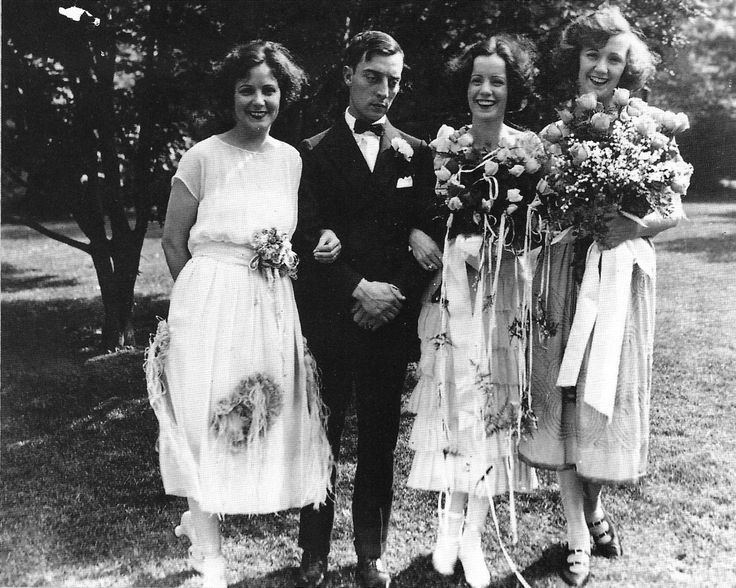 |
April 29, 1896 (1896-04-29) Brooklyn, New York, United States Hollywood Forever Cemetery Norma Talmadge (sister) Constance Talmadge (sister) June 19, 1969, Santa Monica, California, United States Buster Keaton (m. 1921–1932) Buster Keaton Jr., Bob Talmadge Margaret Talmadge, Frederick L. Talmadge Our Hospitality, Intolerance, The Haunted House, Out West, Yes or No
Buster Keaton, Norma Talmadge, Joe Keaton, Eleanor Keaton, Joseph M Schenck |
Natalie Talmadge (April 29, 1896 – June 19, 1969) was an American silent film actress who was best known as the wife of Buster Keaton, and sister of her movie star siblings, Norma and Constance Talmadge. She retired from acting in 1923. 

Talmadge was born in Brooklyn, New York to Margaret L. "Peg" and Frederick O. Talmadge. She was the younger sister of Norma Talmadge and the older sister of Constance Talmadge, both of whom became successful film actresses. 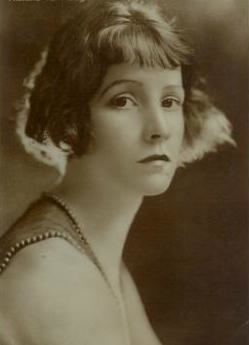
She appeared in D.W. Griffith's Intolerance (1916), The Passion Flower (1921) with her sister Norma, and Buster Keaton's Our Hospitality (1923), her final film appearance. 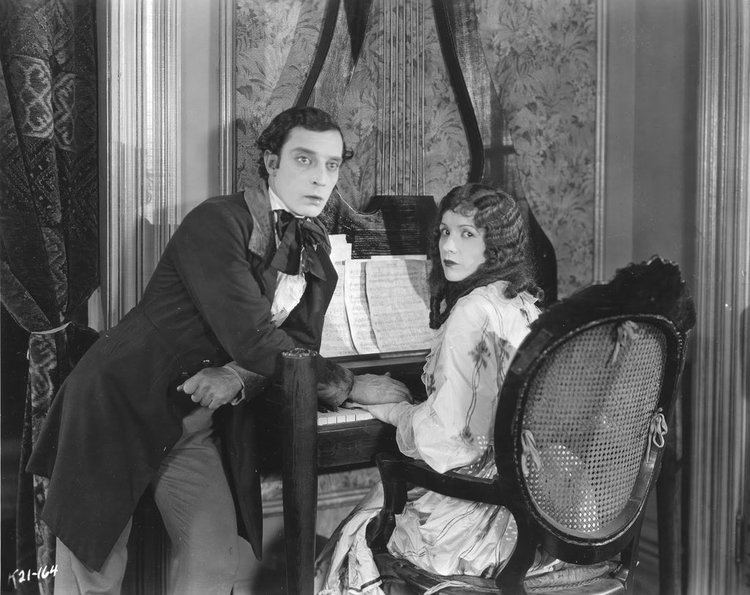
Talmadge married Buster Keaton on May 31, 1921. She proposed to him in a letter in January of that year by saying, "I am alone now with Mother. If you still care for me just send for me." Keaton went east from Hollywood by train and married her. It's possible that Joe Schenck, Keaton's producer and Norma's husband and producer, influenced the match, possibly arguing that it would solve several problems at once and keep the business all in the family, although Keaton and Talmadge had dated in the past. 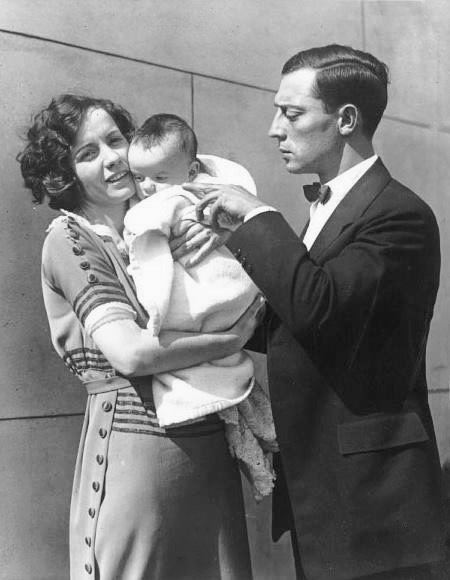
Talmadge was Roman Catholic, but the marriage was performed as a civil ceremony. Their marriage resulted in two sons, Joseph Talmadge Keaton aka Buster Keaton Jr. (June 2, 1922 – February 14, 2007), and Robert "Bob" Talmadge Keaton (February 3, 1924 – July 19, 2009). Talmadge spent prodigious amounts on clothes and the Keatons lived in ever more elaborate Beverly Hills homes. After the birth of their second son Talmadge decided not to have any more children, resulting in the couple staying in separate rooms. Keaton was accepting of this, and the Talmadges agreed that he should keep any affairs discreet. Late in the marriage, Keaton's career began to suffer after his contract with Schenck was sold to Metro-Goldwyn-Mayer, and in the early '30s he began to struggle with alcoholism and become more open about his affairs with other women. Following the much-publicized divorce in 1932, Talmadge legally changed their boys' names to Talmadge and denied them any contact with their father. The name change was especially awkward for Joseph, who was ten years old and already accustomed to his last name. She became involved with the actor Larry Kent. They lived together for a while in a house bought for her by her sister Constance after the famous Italian villa mansion which Keaton had built for her had been sold in 1933. They also took vacations together on occasion, but the romance did not last.
She never remarried, and in her solitary existence also developed a drinking problem (consuming up to a quart of whiskey every day) in addition to chain smoking. Talmadge carried a vengeful hatred of her husband for the rest of her life and would not allow him to be mentioned in her presence. This eventually became a running joke in the family to the point where her grandchildren would often amuse themselves by saying Keaton's name just to enrage her.
Natalie Talmadge was in frail health during her final years and was a resident of the Santa Monica Convalescent Home. She died of heart failure on June 19, 1969 at Santa Monica Hospital. She is buried in the Abbey of the Psalms in the Talmadge Room at Hollywood Forever Cemetery.
- Intolerance (1916)
- His Wedding Night (1917)
- A Country Hero (1917)
- The Love Expert (1920)
- Yes or No? (1920)
- The Haunted House (1921)
- The Passion Flower (1921)
- Our Hospitality (1923)
Natalie Talmadge Wikipedia
نوشته شده در تاريخ پنجشنبه 13 شهريور 1399
توسط elmiraluong
Heart attack 1899–1934 Actor Douglas Fairbanks, Jr.
|
|
American Douglas Fairbanks 1.75 m |
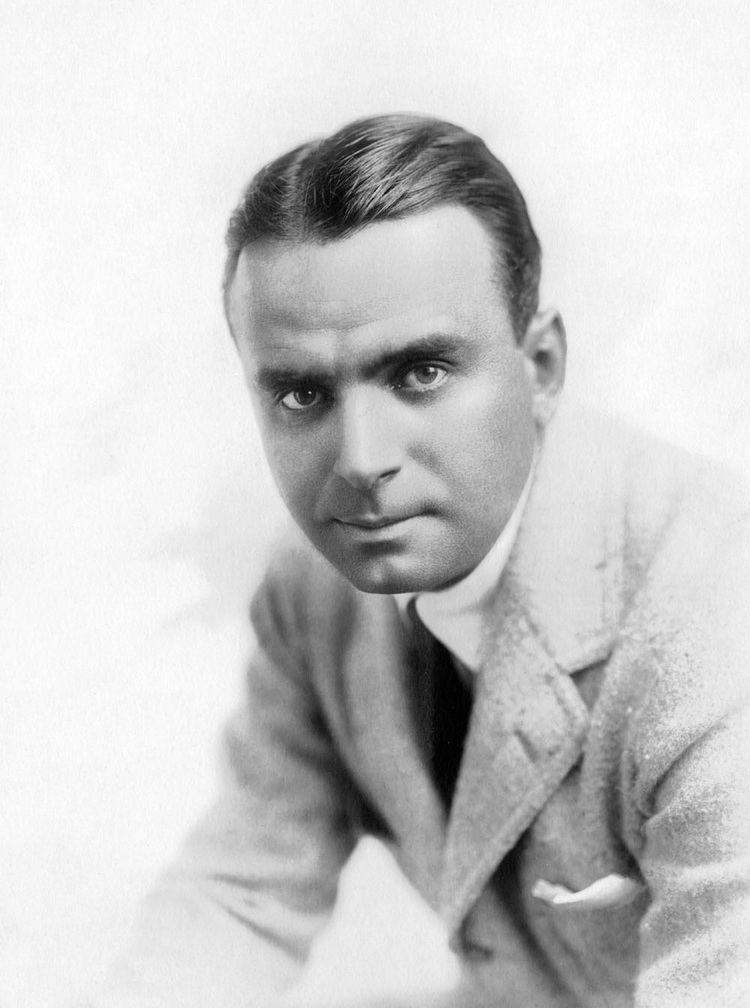 |
Douglas Elton Thomas Ullman May 23, 1883 (1883-05-23) Denver, Colorado Hollywood Forever Cemetery Denver East High School Actor, director, producer, screenwriter December 12, 1939, Santa Monica, California, United States Sylvia Ashley (m. 1936–1939), Mary Pickford (m. 1920–1936), Anna Beth Sully (m. 1907–1919) The Thief of Bagdad, The Mark of Zorro, The Black Pirate, Robin Hood, The Three Musketeers
Mary Pickford, Charlie Chaplin, D W Griffith, Sylvia Ashley, Rudolph Valentino
|
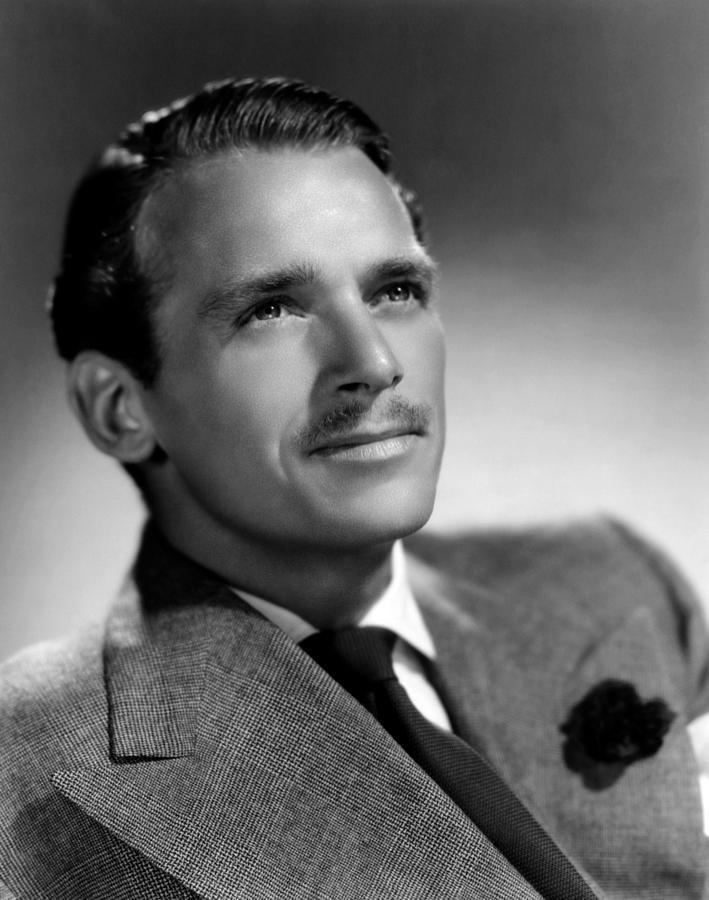
An astute businessman, Fairbanks was a founding member of United Artists. Fairbanks was also a founding member of The Motion Picture Academy and hosted the first Oscars Ceremony in 1929. With his marriage to Mary Pickford in 1920, the couple became Hollywood royalty and Fairbanks was referred to as "The King of Hollywood", a nickname later passed on to actor Clark Gable. His career rapidly declined however with the advent of the "talkies". His final film was The Private Life of Don Juan (1934). 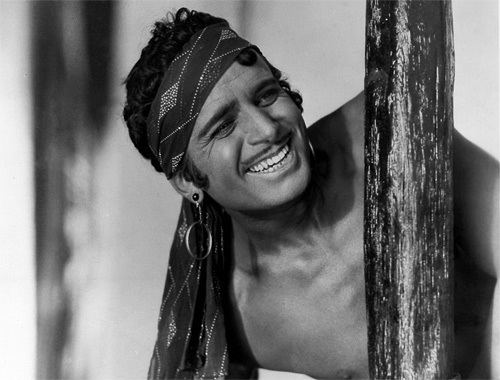

Fairbanks was born Douglas Elton Thomas Ullman (spelled "Ulman" by Douglas Fairbanks, Jr. in his memoirs) in Denver, Colorado, the son of H. Charles Ullman (born September 15, 1833) and Ella Adelaide (nee Marsh; born 1847). He had two half-brothers, John Fairbanks, Jr. (born 1873) and Norris Wilcox (February 20, 1876 - October 21, 1946), and a full brother, Robert Payne Ullman (March 13, 1882 – February 22, 1948). 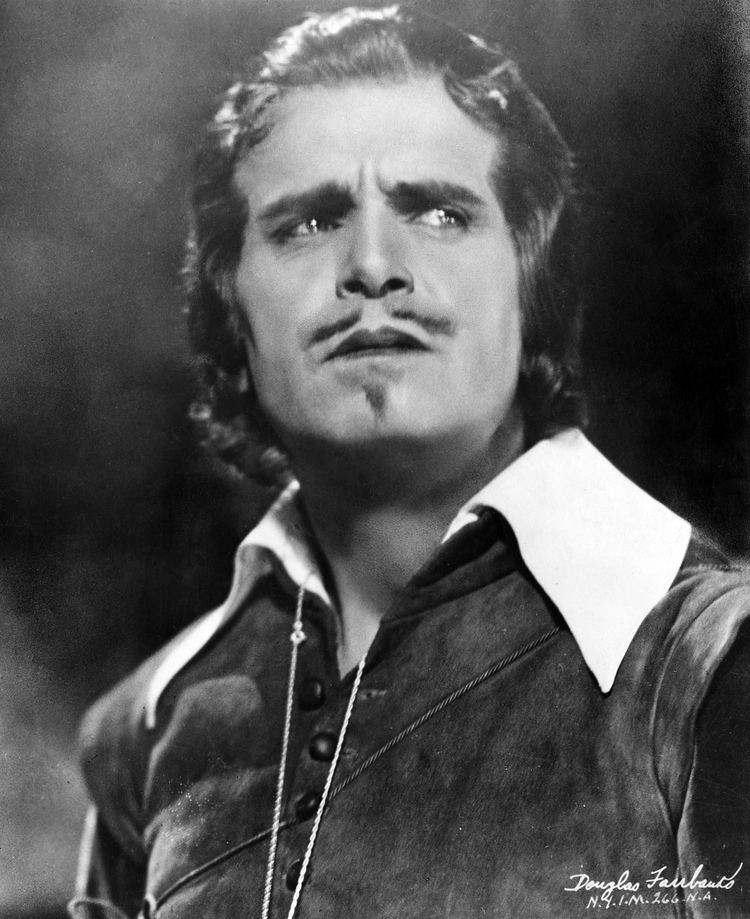
Douglas Fairbanks's father, Hezekiah Charles Ullman (1833–1915) was born in Berrysburg, Pennsylvania, but raised in Williamsport. He was the fourth child in a Jewish family consisting of six sons and four daughters. Charles's parents, Lazarus Ullman and Lydia Abrahams, had immigrated to the U.S. in 1830 from Baden, Germany. When he was 17, Charles started a small publishing business in Philadelphia. Two years later, he left for New York to study law. He was admitted to the Pennsylvania bar in 1856 and began building a substantial practice. At the onset of the Civil War, Charles joined the Union forces. He engaged in several battles, was wounded, and later became a captain of the 5th Pennsylvania Reserves. Charles left the service in 1864 and returned to his law practice. He subsequently founded the U.S. Law Association, a forerunner of the American Bar Association. Charles met Ella Adelaide Marsh (1847–1915), after she married his friend and client John Fairbanks, a wealthy New Orleans sugar mill and plantation owner. The Fairbankses had a son, John, and shortly thereafter John Senior died of tuberculosis. Ella, born into a wealthy southern Catholic family, was overprotected and knew little of her husband's business. Consequently, she was swindled out of her fortune by her husband's partners. Even the efforts of Charles Ullman, acting on her behalf, failed to regain any of the family fortune for her. Distraught and lonely, she met and married a courtly Georgian, Edward Wilcox, who turned out to be an alcoholic. After they had a son, Norris, she divorced Wilcox with Charles acting as her own lawyer in the suit. The pretty southern belle soon became romantically involved with Charles and agreed to move to Denver with him to pursue mining investments. They arrived in Denver in 1881 with her son, John. (Norris was left in Georgia with relatives and was never sent for by his mother.) They were married and in 1882 had a child, Robert and then a second son, Douglas, a year later. Charles purchased several mining interests in the Rocky Mountains and he re-established his law practice. Charles Ullman, after hearing of his wife's philandering, abandoned the family when Douglas was five years old and he and his older brother Robert were brought up by their mother, who gave them the family name Fairbanks, after her first husband. Douglas Fairbanks began acting at an early age, in amateur theatre on the Denver stage, performing in summer stock at the Elitch Gardens Theatre, and becoming a sensation in his teens. He attended Denver East High School, and was once expelled for dressing up the campus statues on St. Patrick's Day. He left during his senior year. He stated that he attended Colorado School of Mines for a term but no record of attendance has been found. An article on the matter recounts a professor once saying that Fairbanks was asked to leave because of a prank not long after he began. It is also claimed he attended Harvard University. Fairbanks moved to New York in the early 1900s to pursue an acting career, joining the acting troupe of British actor Frederick Warde who had discovered Fairbanks performing in Denver. He worked in a hardware store and as a clerk in a Wall Street office before his Broadway debut in 1902. His Broadway appearances included the popular A Gentleman from Mississippi in 1908-09. On July 11, 1907, Fairbanks married Anna Beth Sully, the daughter of wealthy industrialist Daniel J. Sully, in Watch Hill, Rhode Island. They had one son, Douglas Elton Fairbanks, who later became known as actor "Douglas Fairbanks Jr." In 1915, the family moved to Los Angeles. After moving to Los Angeles, Fairbanks signed a contract with Triangle Pictures in 1915 and began working under the supervision of D.W. Griffith. His first film was titled The Lamb, in which he debuted the athletic abilities that would gain him wide attention among theatre audiences. His athleticism was not appreciated by Griffith, however, and he was brought to the attention of Anita Loos and John Emerson, who wrote and directed many of his early romantic comedies. In 1916, Fairbanks established his own company, the Douglas Fairbanks Film Corporation, and would soon get a job at Paramount. Fairbanks met actress Mary Pickford at a party in 1916, the couple beginning an affair. In 1917, they joined Fairbanks' friend Charlie Chaplin selling war bonds by train across the U.S. Pickford and Chaplin were then the two highest paid film stars in Hollywood. To curtail these stars' astronomical salaries, the large studios attempted to monopolize distributors and exhibitors. By 1918, Fairbanks was Hollywood's most popular actor, and within three years of his arrival Fairbanks' popularity and business acumen raised him to the third-highest paid. In 1917, Fairbanks capitalized on his rising popularity by publishing a self-help book, Laugh and Live which extolled the power of positive thinking and self-confidence in raising one's health, business and social prospects. To avoid being controlled by the studios and to protect their independence, Fairbanks, Pickford, Chaplin, and D. W. Griffith formed United Artists in 1919, which created their own distributorships and gave them complete artistic control over their films and the profits generated. The company was kept solvent in the years immediately after its formation largely by the success of Fairbanks' films. In late 1918, Sully was granted a divorce from Fairbanks, the judgment being finalized in early 1919. After the divorce, Fairbanks was determined to have Pickford become his wife, but she was still married to actor Owen Moore. He finally gave her an ultimatum. She then obtained a fast divorce in the small Nevada town of Minden on March 2, 1920. Fairbanks leased the Beverly Hills mansion Grayhall and was rumored to have used it during his courtship of Pickford. The couple married on March 28, 1920. Pickford's divorce from Moore was contested by Nevada legislators, however, and the dispute was not settled until 1922. Even though the lawmakers objected to the marriage, the public went wild over the idea of "Everybody's Hero" marrying "America's Sweetheart." They were greeted by large crowds in London and Paris during their European honeymoon, becoming Hollywood's first celebrity couple. During the years they were married, Fairbanks and Pickford were regarded as "Hollywood Royalty," famous for entertaining at their Beverly Hills estate, Pickfair. By 1920, Fairbanks had completed twenty-nine films (twenty-eight features and one two-reel short), which showcased his ebullient screen persona and athletic ability. By 1920, he had the inspiration of staging a new type of adventure-costume picture, a genre that was then out of favor with the public; Fairbanks had been a comic in his previous films. In The Mark of Zorro, Fairbanks combined his appealing screen persona with the new adventurous costume element. It was a smash success and parlayed the actor into the rank of superstar. For the remainder of his career in silent films he continued to produce and star in ever more elaborate, impressive costume films, such as The Three Musketeers (1921), Douglas Fairbanks in Robin Hood (1922), The Thief of Bagdad (1924), The Black Pirate (1926, the first full-length Technicolor film), and The Gaucho (1927). Fairbanks spared no expense and effort in these films, which established the standard for all future swashbuckling films. In 1921, he, Pickford, Chaplin, and others, helped to organize the Motion Picture Fund to assist those in the industry who could not work, or were unable to meet their bills. During the first ceremony of its type, on April 30, 1927, Fairbanks and Pickford placed their hand and foot prints in wet cement at the newly opened Grauman's Chinese Theatre in Hollywood. Fairbanks was elected first President of the Motion Picture Academy of Arts and Sciences that same year, and he presented the first Academy Awards at the Roosevelt Hotel. Today, Fairbanks also has a star on the Hollywood Walk of Fame at 7020 Hollywood Boulevard. While Fairbanks had flourished in the silent genre, the restrictions of early sound films dulled his enthusiasm for film-making. His athletic abilities and general health also began to decline at this time, in part due to his years of chain-smoking. On March 29, 1929, at Pickford's bungalow, United Artists brought together Pickford, Fairbanks, Charles Chaplin, Norma Talmadge, Gloria Swanson, John Barrymore, D.W. Griffith and Dolores del Rio to speak on the radio show The Dodge Brothers Hour to prove Fairbanks could meet the challenge of talking movies. Fairbanks's last silent film was the lavish The Iron Mask (1929), a sequel to 1921's The Three Musketeers. The Iron Mask included an introductory prologue spoken by Fairbanks. He and Pickford chose to make their first talkie as a joint venture, playing Petruchio and Kate in Shakespeare's The Taming of the Shrew (1929). This film, and his subsequent sound films, were poorly received by Depression-era audiences. The last film in which he acted was the British production The Private Life of Don Juan (1934), after which he retired from acting. Fairbanks and Pickford separated in 1933, after he began an affair with Sylvia, Lady Ashley. They divorced in 1936, with Pickford keeping the Pickfair estate. Within months Fairbanks and Ashley were married in Paris. He continued to be marginally involved in the film industry and United Artists, but his later years lacked the intense focus of his film years. His health continued to decline, and in his final years he lived at 705 Ocean Front (now Pacific Coast Highway) in Santa Monica, California, although much of his time was spent traveling abroad with third wife, Sylvia, Lady Ashley. On December 12, 1939, Fairbanks had a mild heart attack. He died later that day at his home in Santa Monica at the age of 56. Fairbanks's famous last words were, "I've never felt better." His funeral service was held at the Wee Kirk o' the Heather Church in Glendale's Forest Lawn Memorial Park Cemetery where he was placed in a crypt in the Great Mausoleum.
Two years following his death, he was removed from Forest Lawn by his widow, Sylvia, who commissioned an elaborate marble monument for him featuring a long rectangular reflecting pool, raised tomb, and classic Greek architecture in Hollywood Forever Cemetery in Los Angeles. The monument was dedicated in a ceremony held in October 1941, with Fairbanks's close friend Charles Chaplin reading a remembrance. The remains of his son, Douglas Fairbanks, Jr., were also interred there upon his death in May 2000.
In 1998, a group of Fairbanks fans started the Douglas Fairbanks Museum in Austin, Texas. The museum building was temporarily closed for mold remediation and repairs in February 2010. Plans and fundraising efforts are underway to re-open the museum to the public.
In 2002, AMPAS opened the "Fairbanks Center for Motion Picture Study" located at 333 S. La Cienega Boulevard in Beverly Hills. The building houses the Margaret Herrick Library.
On November 6, 2008, the Academy of Motion Picture Arts and Sciences celebrated the publication of their "Academy Imprints" book Douglas Fairbanks, authored by film historian Jeffrey Vance, with the screening of a new restoration print of The Gaucho with Vance introducing the film.
The following year, opening January 24, 2009, AMPAS mounted a major Douglas Fairbanks exhibition at their Fourth Floor Gallery titled, "Douglas Fairbanks: The First King of Hollywood." The exhibit featured costumes, props, pictures, and documents from his career and personal life. In addition to the exhibit, AMPAS screened The Thief of Bagdad and The Iron Mask in March 2009. Concurrently with the Academy's efforts, the Museum of Modern of Art held their first Fairbanks film retrospective in over six decades, titled "Laugh and Live: The Films of Douglas Fairbanks" which ran from December 17, 2008 – January 12, 2009. Jeffrey Vance opened the retrospective with a lecture and screening of the restoration print of The Gaucho. Recently, due to his involvement with the USC Fencing Club, a bronze statue of Fairbanks was erected in the Academy of Motion Picture Arts & Sciences Courtyard of the new School of Cinematic Arts building on the University of Southern California campus. Fairbanks was a key figure in the film school's founding in 1929, and in its curriculum development.
The 2011 film The Artist was loosely based on Fairbanks, with the film's lead portraying Zorro in a silent movie featuring a scene from the Fairbanks version. While thanking the audience in 2012 for a Golden Globe award as Best Actor for his performance in the film, actor Jean Dujardin added, "As Douglas Fairbanks would say," then moved his lips silently as a comedic homage. When Dujardin accepted the 2011 Academy Award for Best Actor in a Leading Role, Fairbanks was cited at length as the main inspiration for Dujardin's performance in The Artist.
An important accolade given to the Douglas Fairbanks legacy was a special screening of his masterpiece, The Thief of Bagdad, at the 2012 edition of the Turner Classic Movies Film Festival. On April 15, 2012, the festival concluded with a sold-out screening of the Fairbanks film held at the historic Egyptian Theatre in Hollywood. The evening was introduced by TCM host Ben Mankiewicz and Fairbanks biographer Jeffrey Vance.
Douglas Fairbanks Wikipedia
نوشته شده در تاريخ پنجشنبه 13 شهريور 1399
توسط elmiraluong
Lung cancer Actor Buster Keaton
|
|
Joe Keaton Myra Keaton 1898–1966 1.65 m |
 |
Joseph Frank Keaton October 4, 1895 (1895-10-04) Piqua, Kansas, United States Forest Lawn Memorial Park, Hollywood Hills Actor, director, producer, writer, stunt performer February 1, 1966, Woodland Hills, California, United States Buster Keaton Jr., Bob Talmadge Eleanor Keaton (m. 1940–1966), Mae Scriven (m. 1933–1935), Natalie Talmadge (m. 1921–1932) The General, Sherlock Jr, Steamboat Bill Jr, One Week, The Navigator
Charlie Chaplin, Harold Lloyd, Roscoe Arbuckle, Stan Laurel, Natalie Talmadge |
Joseph Frank "Buster" Keaton (October 4, 1895 – February 1, 1966) was an American actor, comedian, film director, producer, screenwriter, and stunt performer. He was best known for his silent films, in which his trademark was physical comedy with a consistently stoic, deadpan expression, earning him the nickname "The Great Stone Face." Critic Roger Ebert wrote of Keaton's "extraordinary period from 1920 to 1929, [when] he worked without interruption on a series of films that make him, arguably, the greatest actor–director in the history of the movies". His career declined afterward with a dispiriting loss of his artistic independence when he was hired by Metro-Goldwyn-Mayer and he descended into alcoholism, ruining his family life. He recovered in the 1940s, remarried, and revived his career to a degree as an honored comic performer for the rest of his life, earning an Academy Honorary Award in 1959.
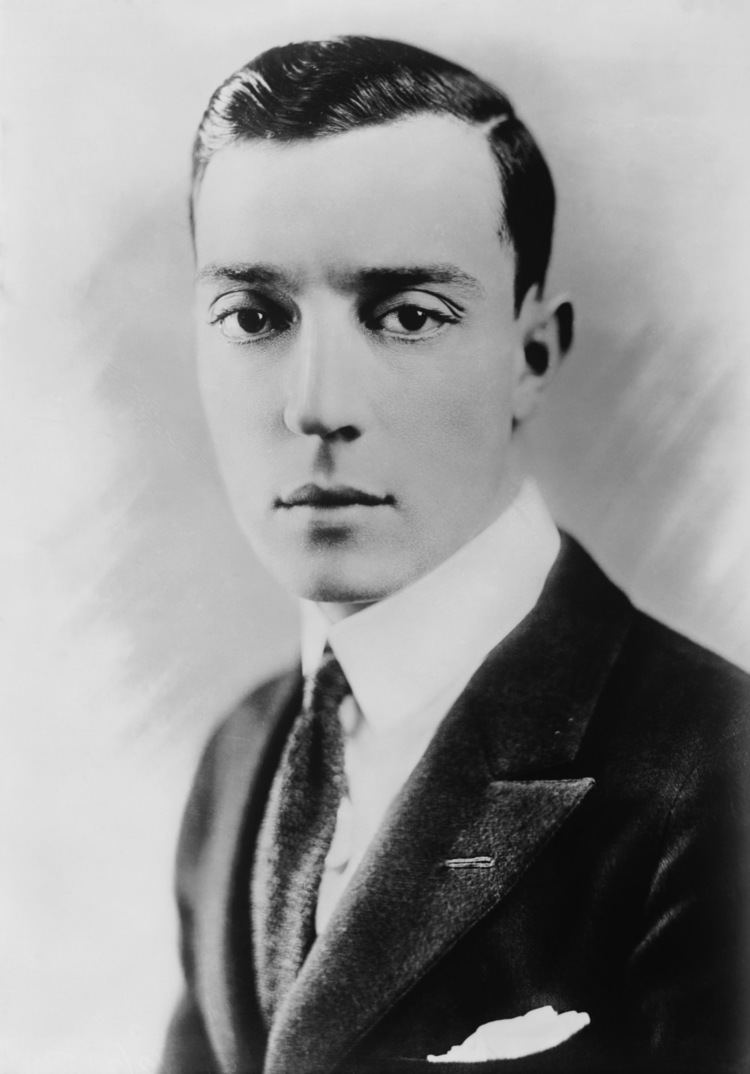
Many of Keaton's films from the 1920s, such as Sherlock Jr. (1924), The General (1926), and The Cameraman (1928), remain highly regarded, with the second of these three widely viewed as his masterpiece. Among its strongest admirers was Orson Welles, who stated that The General was cinema's highest achievement in comedy, and perhaps the greatest film ever made. Keaton was recognized as the seventh-greatest film director by Entertainment Weekly, and in 1999, the American Film Institute ranked him the 21st greatest male star of classic Hollywood cinema.

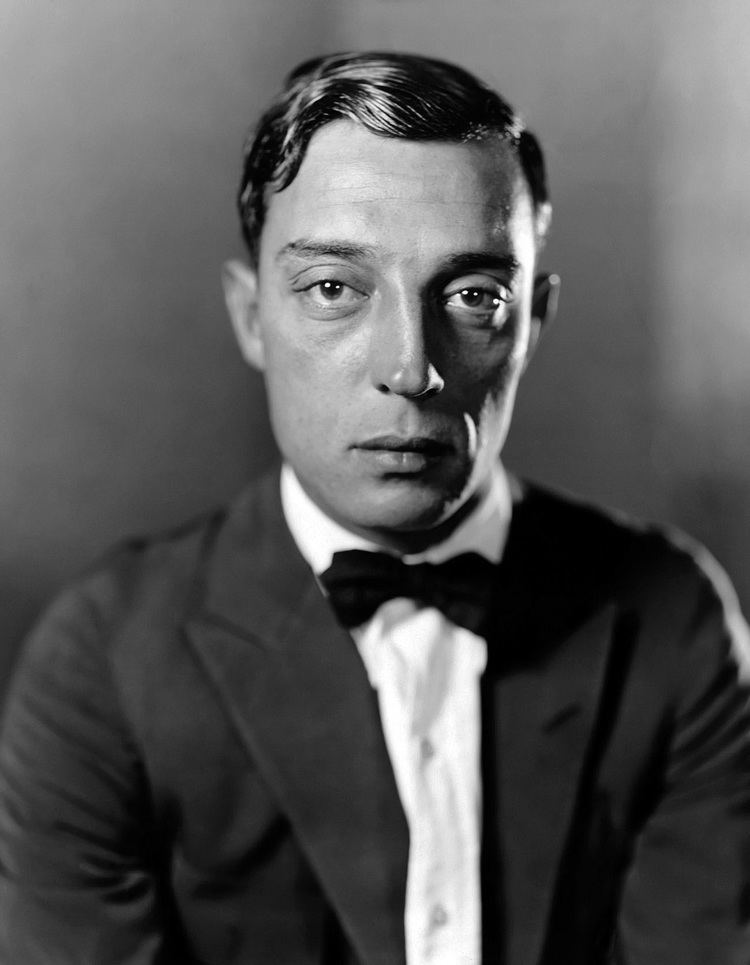
Keaton was born into a vaudeville family in Piqua, Kansas, the small town where his mother, Myra Keaton (née Cutler), was when she went into labor. He was named "Joseph" to continue a tradition on his father's side (he was sixth in a line bearing the name Joseph Keaton) and "Frank" for his maternal grandfather, who disapproved of his parents' union. Later, Keaton changed his middle name to "Francis". His father was Joseph Hallie "Joe" Keaton, who owned a traveling show with Harry Houdini called the Mohawk Indian Medicine Company, which performed on stage and sold patent medicine on the side.
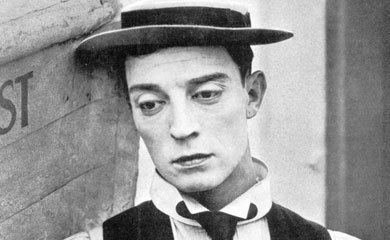
According to a frequently repeated story, which may be apocryphal, Keaton acquired the nickname "Buster" at about 18 months of age. Keaton told interviewer Fletcher Markle that Houdini was present one day when the young Keaton took a tumble down a long flight of stairs without injury. After the infant sat up and shook off his experience, Houdini remarked, "That was a real buster!" According to Keaton, in those days, the word "buster" was used to refer to a spill or a fall that had the potential to produce injury. After this, it was Keaton's father who began to use the nickname to refer to the youngster. Keaton retold the anecdote over the years, including a 1964 interview with the CBC's Telescope.
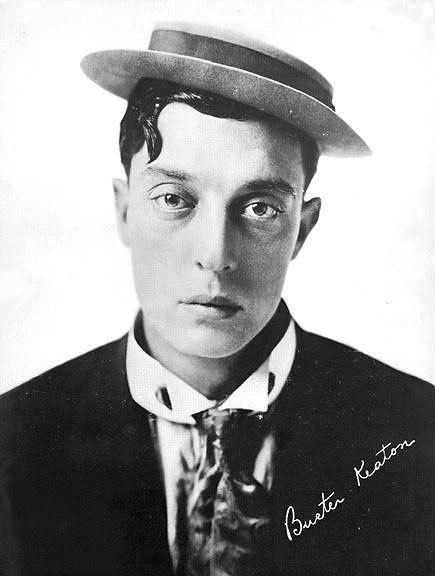
At the age of three, Keaton began performing with his parents in The Three Keatons. He first appeared on stage in 1899 in Wilmington, Delaware. The act was mainly a comedy sketch. Myra played the saxophone to one side, while Joe and Buster performed on center stage. The young Keaton would goad his father by disobeying him, and the elder Keaton would respond by throwing him against the scenery, into the orchestra pit, or even into the audience. A suitcase handle was sewn into Keaton's clothing to aid with the constant tossing. The act evolved as Keaton learned to take trick falls safely; he was rarely injured or bruised on stage. This knockabout style of comedy led to accusations of child abuse, and occasionally, arrest. However, Buster Keaton was always able to show the authorities that he had no bruises or broken bones. He was eventually billed as "The Little Boy Who Can't Be Damaged," with the overall act being advertised as "'The Roughest Act That Was Ever in the History of the Stage." Decades later, Keaton said that he was never hurt by his father and that the falls and physical comedy were a matter of proper technical execution. In 1914, Keaton told the Detroit News: "The secret is in landing limp and breaking the fall with a foot or a hand. It's a knack. I started so young that landing right is second nature with me. Several times I'd have been killed if I hadn't been able to land like a cat. Imitators of our act don't last long, because they can't stand the treatment.
Keaton claimed he was having so much fun that he would sometimes begin laughing as his father threw him across the stage. Noticing that this drew fewer laughs from the audience, he adopted his famous deadpan expression whenever he was working.
The act ran up against laws banning child performers in vaudeville. According to one biographer, Keaton was made to go to school while performing in New York, but only attended for part of one day. Despite tangles with the law and a disastrous tour of music halls in the United Kingdom, Keaton was a rising star in the theater. Keaton stated that he learned to read and write late, and was taught by his mother. By the time he was 21, his father's alcoholism threatened the reputation of the family act, so Keaton and his mother, Myra, left for New York, where Buster Keaton's career swiftly moved from vaudeville to film.
Keaton served in the United States Army in France with the 40th Infantry Division during World War I. His unit remained intact and was not broken up to provide replacements, as happened to some other late-arriving divisions. During his time in uniform, he suffered an ear infection that permanently impaired his hearing.
In February 1917, Keaton met Roscoe "Fatty" Arbuckle at the Talmadge Studios in New York City, where Arbuckle was under contract to Joseph M. Schenck. Joe Keaton disapproved of films, and Buster also had reservations about the medium. During his first meeting with Arbuckle, he asked to borrow one of the cameras to get a feel for how it worked. He took the camera back to his hotel room, dismantled and reassembled it. With this rough understanding of the mechanics of the moving pictures, he returned the next day, camera in hand, asking for work. He was hired as a co-star and gag man, making his first appearance in The Butcher Boy. Keaton later claimed that he was soon Arbuckle's second director and his entire gag department. He appeared in a total of 14 Arbuckle shorts, running into 1920. They were popular and, contrary to Keaton's later reputation as "The Great Stone Face", he often smiled and even laughed in them. Keaton and Arbuckle became close friends, and Keaton was one of few people to defend Arbuckle's character during accusations that he was responsible for the death of actress Virginia Rappe.
In 1920, The Saphead was released, in which Keaton had his first starring role in a full-length feature. It was based on a successful play, The New Henrietta, which had already been filmed once, under the title The Lamb, with Douglas Fairbanks playing the lead. Fairbanks recommended Keaton to take the role for the remake five years later, since the film was to have a comic slant.
After Keaton's successful work with Arbuckle, Schenck gave him his own production unit, Buster Keaton Comedies. He made a series of two-reel comedies, including One Week (1920), The Playhouse (1921), Cops (1922), and The Electric House (1922). Keaton then moved to full-length features.
Keaton's writers included Clyde Bruckman, Joseph Mitchell, and Jean Havez, but the most ingenious gags were generally conceived by Keaton himself. Comedy director Leo McCarey, recalling the freewheeling days of making slapstick comedies, said, "All of us tried to steal each other's gagmen. But we had no luck with Keaton, because he thought up his best gags himself and we couldn't steal him!" The more adventurous ideas called for dangerous stunts, performed by Keaton at great physical risk. During the railroad water-tank scene in Sherlock Jr., Keaton broke his neck when a torrent of water fell on him from a water tower, but he did not realize it until years afterward. A scene from Steamboat Bill Jr. required Keaton to run into the shot and stand still on a particular spot. Then, the facade of a two-story building toppled forward on top of Keaton. Keaton's character emerged unscathed, thanks to a single open window. The stunt required precision, because the prop house weighed two tons, and the window only offered a few inches of clearance around Keaton's body. The sequence furnished one of the most memorable images of his career.
Film critic David Thomson later described Keaton's style of comedy: "Buster plainly is a man inclined towards a belief in nothing but mathematics and absurdity ... like a number that has always been searching for the right equation. Look at his face—as beautiful but as inhuman as a butterfly—and you see that utter failure to identify sentiment." Gilberto Perez commented on "Keaton's genius as an actor to keep a face so nearly deadpan and yet render it, by subtle inflections, so vividly expressive of inner life. His large deep eyes are the most eloquent feature; with merely a stare he can convey a wide range of emotions, from longing to mistrust, from puzzlement to sorrow." Critic Anthony Lane also noted Keaton's body language: "The traditional Buster stance requires that he remain upstanding, full of backbone, looking ahead... [in The General] he clambers onto the roof of his locomotive and leans gently forward to scan the terrain, with the breeze in his hair and adventure zipping toward him around the next bend. it is the angle that you remember: the figure perfectly straight but tilted forward, like the Spirit of Ecstasy on the hood of a Rolls-Royce... [in The Three Ages], he drives a low-grade automobile over a bump in the road, and the car just crumbles beneath him. Rerun it on video, and you can see Buster riding the collapse like a surfer, hanging onto the steering wheel, coming beautifully to rest as the wave of wreckage breaks." Film historian Jeffrey Vance writes, “Buster Keaton’s comedy endures not just because he had a face that belongs on Mount Rushmore, at once hauntingly immovable and classically American, but because that face was attached to one of the most gifted actors and directors who ever graced the screen. Evolved from the knockabout upbringing of the vaudeville stage, Keaton’s comedy is a whirlwind of hilarious, technically precise, adroitly executed, and surprising gags, very often set against a backdrop of visually stunning set pieces and locations—all this masked behind his unflinching, stoic veneer.” Keaton has inspired full academic study.
Aside from Steamboat Bill Jr. (1928), Keaton's most enduring feature-length films include Our Hospitality (1923), The Navigator (1924), Sherlock Jr. (1924), Seven Chances (1925), The Cameraman (1928), and The General (1926). The General, set during the American Civil War, combined physical comedy with Keaton's love of trains, including an epic locomotive chase. Employing picturesque locations, the film's storyline reenacted an actual wartime incident. Though it would come to be regarded as Keaton's greatest achievement, the film received mixed reviews at the time. It was too dramatic for some filmgoers expecting a lightweight comedy, and reviewers questioned Keaton's judgment in making a comedic film about the Civil War, even while noting it had a "few laughs".
It was an expensive misfire, and Keaton was never entrusted with total control over his films again. His distributor, United Artists, insisted on a production manager who monitored expenses and interfered with certain story elements. Keaton endured this treatment for two more feature films, and then exchanged his independent setup for employment at Hollywood's biggest studio, Metro-Goldwyn-Mayer (MGM). Keaton's loss of independence as a filmmaker coincided with the coming of sound films (although he was interested in making the transition) and mounting personal problems, and his career in the early sound era was hurt as a result.
Keaton started experimenting with parody during his vaudeville years, where most frequently his performances involved impressions and burlesques of other performers' acts. Most of these parodies targeted acts with which Keaton had shared the bill. When Keaton transposed his experience in vaudeville to film, in many works he parodied melodramas. Other favorite targets were cinematic plots, structures and devices.
One of his most biting parodies is The Frozen North (1922), a satirical take on William S. Hart's Western melodramas, like Hell's Hinges (1916) and The Narrow Trail (1917). Keaton parodied the tired formula of the melodramatic transformation from bad guy to good guy, through which went Hart's character, known as "the good badman". He wears a small version of Hart's campaign hat from the Spanish–American War and a six-shooter on each thigh, and during the scene in which he shoots the neighbor and her husband, he reacts with thick glycerin tears, a trademark of Hart's. Audiences of the 1920s recognized the parody and thought the film hysterically funny. However, Hart himself was not amused by Keaton's antics, particularly the crying scene, and did not speak to Buster for two years after he had seen the film. The film's opening intertitles give it its mock-serious tone, and are taken from "The Shooting of Dan McGrew" by Robert W. Service.
In The Playhouse (1921), he parodied his contemporary Thomas H. Ince, Hart's producer, who indulged in over-crediting himself in his film productions. The short also featured the impression of a performing monkey which was likely derived from a co-biller's act (called Peter the Great). Three Ages (1923), his first feature-length film, is a parody of D. W. Griffith's Intolerance (1916), from which it replicates the three inter-cut shorts structure. Three Ages also featured parodies of Bible stories, like those of Samson and Daniel. Keaton directed the film, along with Edward F. Cline.
Keaton signed with Metro-Goldwyn-Mayer in 1928, a business decision that he would later call the worst of his life. He realized too late that the studio system MGM represented would severely limit his creative input. For instance, the studio refused his request to make his early project, Spite Marriage, as a sound film and after the studio converted, he was obliged to adhere to dialogue-laden scripts. However, MGM did allow Keaton some creative participation on his last originally developed/written silent film The Cameraman, 1928, which was his first project under contract with them, but hired Edward Sedgwick as the official director.
Keaton was forced to use a stunt double during some of the more dangerous scenes, something he had never done in his heyday, as MGM wanted badly to protect its investment. "Stuntmen don't get laughs," Keaton had said. Some of his most financially successful films for the studio were during this period. MGM tried teaming the laconic Keaton with the rambunctious Jimmy Durante in a series of films, The Passionate Plumber, Speak Easily, and What! No Beer? The latter would be Keaton's last starring feature in his home country. The films proved popular. (Thirty years later, both Keaton and Durante had cameo roles in It's a Mad Mad Mad Mad World, albeit not in the same scenes.)
In the first Keaton pictures with sound, he and his fellow actors would shoot each scene three times: one in English, one in Spanish, and one in either French or German. The actors would phonetically memorize the foreign-language scripts a few lines at a time and shoot immediately after. This is discussed in the TCM documentary Buster Keaton: So Funny it Hurt, with Keaton complaining about having to shoot lousy films not just once, but three times.
Keaton was so demoralized during the production of 1933's What! No Beer? that MGM fired him after the filming was complete, despite the film being a resounding hit. In 1934, Keaton accepted an offer to make an independent film in Paris, Le Roi des Champs-Élysées. During this period, he made another film, in England, The Invader (released in the United States as An Old Spanish Custom in 1936).
Upon Keaton's return to Hollywood, he made a screen comeback in a series of 16 two-reel comedies for Educational Pictures. Most of these are simple visual comedies, with many of the gags supplied by Keaton himself, often recycling ideas from his family vaudeville act and his earlier films. The high point in the Educational series is Grand Slam Opera, featuring Buster in his own screenplay as an amateur-hour contestant. When the series lapsed in 1937, Keaton returned to MGM as a gag writer, including the Marx Brothers films At the Circus (1939) and Go West (1940), and providing material for Red Skelton. He also helped and advised Lucille Ball in her comedic work in films and television.
In 1939, Columbia Pictures hired Keaton to star in ten two-reel comedies, running for two years. The director was usually Jules White, whose emphasis on slapstick and farce made most of these films resemble White's Three Stooges comedies. Keaton's personal favorite was the series' debut entry, Pest from the West, a shorter, tighter remake of Keaton's little-viewed 1935 feature The Invader; it was directed not by White but by Del Lord, a veteran director for Mack Sennett. Moviegoers and exhibitors welcomed Keaton's Columbia comedies, proving that the comedian had not lost his appeal. However, taken as a whole, Keaton's Columbia shorts rank as the worst comedies he made, an assessment he concurred with in his autobiography. The final entry was She's Oil Mine, and Keaton swore he would never again "make another crummy two-reeler."
Keaton's personal life had stabilized with his 1940 marriage, and now he was taking life a little easier, abandoning Columbia for the less strenuous field of feature films. Throughout the 1940s, Keaton played character roles in both "A" and "B" features. He made his last starring feature El Moderno Barba Azul (1946) in Mexico; the film was a low budget production, and it may not have been seen in the United States until its release on VHS in the 1980s, under the title Boom in the Moon. Critics rediscovered Keaton in 1949 and producers occasionally hired him for bigger "prestige" pictures. He had cameos in such films as In the Good Old Summertime (1949), Sunset Boulevard (1950), and Around the World in 80 Days (1956). In In The Good Old Summertime, Keaton personally directed the stars Judy Garland and Van Johnson in their first scene together where they bump into each other on the street. Keaton invented comedy bits where Johnson keeps trying to apologize to a seething Garland, but winds up messing up her hairdo and tearing her dress.
Keaton also had a cameo as Jimmy, appearing near the end of the film It's a Mad, Mad, Mad, Mad World (1963). Jimmy assists Spencer Tracy's character, Captain C. G. Culpepper, by readying Culpepper's ultimately-unused boat for his abortive escape. (The restored version of that film, released in 2013, contains a restored scene where Jimmy and Culpeper talk on the telephone. Lost after the comedy epic's "roadshow" exhibition, the audio of that scene was discovered, and combined with still pictures to recreate the scene.) Keaton was given more screen time in A Funny Thing Happened on the Way to the Forum (1966). The appearance, since it was released after his death, was his posthumous swansong.
Keaton also appeared in a comedy routine about two inept stage musicians in Charlie Chaplin's Limelight (1952), recalling the vaudeville of The Playhouse. With the exception of Seeing Stars, a minor publicity film produced in 1922, Limelight was the only time in which the two would ever appear together on film.
In 1949, comedian Ed Wynn invited Keaton to appear on his CBS Television comedy-variety show, The Ed Wynn Show, which was televised live on the West Coast. Kinescopes were made for distribution of the programs to other parts of the country since there was no transcontinental coaxial cable until September 1951.
He had an essentially non-speaking role in Sunset Boulevard (1950).
In 1950, Keaton had a successful television series, The Buster Keaton Show, which was broadcast live on a local Los Angeles station. Life with Buster Keaton (1951), an attempt to recreate the first series on film and so allowing the program to be broadcast nationwide, was less well received. He also appeared in the early television series Faye Emerson's Wonderful Town. A theatrical feature film, The Misadventures of Buster Keaton, was fashioned from the series. Keaton said he canceled the filmed series himself because he was unable to create enough fresh material to produce a new show each week. Keaton also appeared on Ed Wynn's variety show. At the age of 55, he successfully recreated one of the stunts of his youth, in which he propped one foot onto a table, then swung the second foot up next to it, and held the awkward position in midair for a moment before crashing to the stage floor. I've Got a Secret host Garry Moore recalled, "I asked (Keaton) how he did all those falls, and he said, 'I'll show you'. He opened his jacket and he was all bruised. So that's how he did it—it hurt—but you had to care enough not to care."
Unlike his contemporary Harold Lloyd, who kept his films from being televised, Keaton's periodic television appearances helped to revive interest in his silent films in the 1950s and 1960s. In 1954, Keaton played his first television dramatic role in "The Awakening", an episode of the syndicated anthology series Douglas Fairbanks, Jr., Presents. About this time, he also appeared on NBC's The Martha Raye Show.
Also in 1954, Keaton and his wife Eleanor met film programmer Raymond Rohauer, with whom the couple would develop a business partnership to re-release Keaton's films. Around the same time, after buying the comedian's house, the actor James Mason found numerous cans of Keaton's films. Among the re-discovered films was Keaton's long-lost classic The Boat. The Coronet Theatre art house in Los Angeles, with which Rohauer was involved, was showing The General, which "Buster hadn't seen ... in years and he wanted me to see it," Eleanor Keaton said in 1987. "Raymond recognized Buster and their friendship started." Rohauer in that same article recalls, "I was in the projection room. l got a ring that Buster Keaton was in the lobby. I go down and there he is with Eleanor. The next day I met with him at his home. I didn't realize we were going to join forces. But I realized he had this I-don't-care attitude about his stuff. He said, 'It's valueless. I don't own the rights.'" Keaton had prints of the features Three Ages, Sherlock Jr., Steamboat Bill, Jr., College (missing one reel) and the shorts "The Boat" and "My Wife's Relations", which Keaton and Rohauer then transferred to safety stock from deteriorating nitrate film stock. Unknown to them at the time, MGM also had saved some of Keaton's work: all his 1920–1926 features and his first eight two-reel shorts.
On April 3, 1957, Keaton was surprised by Ralph Edwards for the weekly NBC program This Is Your Life. The half-hour program, which also promoted the release of the biographical film The Buster Keaton Story with Donald O'Connor, summarized Keaton's life and career up to that point.
In December 1958, Keaton was a guest star as Charlie, a hospital janitor who provides gifts to sick children, in the episode "A Very Merry Christmas" of The Donna Reed Show on ABC. He returned to the program in 1965 in the episode "Now You See It, Now You Don't". The 1958 episode has been included in the DVD release of Donna Reed's television programs. One of the show's cast-members, Paul Peterson, recalled that Keaton "put together an incredible physical skit. His skills were amazing. I never saw anything like it before or since."
In August 1960, Keaton played mute King Sextimus the Silent in the national touring company of the Broadway musical Once Upon A Mattress. Eleanor Keaton was cast in the chorus. After a few days, Keaton warmed to the rest of the cast with his "utterly delicious sense of humor", according to Fritzi Burr, who played opposite him as his wife Queen Aggravain. When the tour landed in Los Angeles, Keaton invited the cast and crew to a spaghetti party at his Woodland Hills home, and entertained them by singing vaudeville songs.
In 1960, Keaton returned to MGM for the final time, playing a lion tamer in a 1960 adaptation of Mark Twain's The Adventures of Huckleberry Finn. Much of the film was shot on location on the Sacramento River, which doubled for the Mississippi River setting of Twain's original book.
In 1961, he starred in The Twilight Zone episode "Once Upon a Time", which included both silent and sound sequences. Keaton played time-traveler Mulligan, who traveled from 1890 to 1960, then back, by means of a special helmet.
In January 1962, he worked with comedian Ernie Kovacs on a television pilot tentatively titled "Medicine Man," shooting scenes for it on January 12, 1962—the day before Kovacs died in a car crash. "Medicine Man" was completed but not aired. It can, however, be viewed, under its alternate title A Pony For Chris on an Ernie Kovacs DVD set.
Keaton also found steady work as an actor in TV commercials, including a series of silent ads for Simon Pure Beer made in 1962 by Jim Mohr in Buffalo, New York in which he revisited some of the gags from his silent film days.
In 1964, Keaton appeared with Joan Blondell and Joe E. Brown in the final episode of The Greatest Show on Earth, a circus drama starring Jack Palance. In November, 1965, he appeared on the CBS television special A Salute To Stan Laurel which was a tribute to the late comedian (and friend of Keaton) who had died earlier that year. The program was produced as a benefit for the Motion Picture Relief Fund and featured a range of celebrities, including Dick Van Dyke, Danny Kaye, Phil Silvers, Gregory Peck, Cesar Romero, and Lucille Ball. In one segment, Ball and Keaton do a silent sketch on a park bench with the two clowns wrestling over an oversized newspaper, until a policeman (played by Harvey Korman) breaks up the fun. The skit called "A Day in the Park" was filmed and broadcast in color. It marked the only time Ball and Keaton worked together in front of a camera.
Keaton starred in four films for American International Pictures: 1964's Pajama Party and 1965's Beach Blanket Bingo, How to Stuff a Wild Bikini and Sergeant Deadhead. As he had done in the past, Keaton also provided gags for the four AIP films in which he appeared. Those films' director, William Asher, who cast Keaton, recalled,
I always loved Buster Keaton. I thought, what a wonderful person to look on and react to these young kids and to view them as the audience might, to shake his head at their crazy antics. ... He loved it. He would bring me bits and routines. He'd say, 'How about this?' and it would just be this wonderful, inventive stuff. A lot of the audience seemed to be seeing Buster for the first time. Once the kids in the cast became aware of who he was, they all respected him and were crazy about him. And the other comics who came in—Paul Lynde, Don Rickles, Buddy Hackett—they hit it off with him great.
In 1965, Keaton starred in the short film The Railrodder for the National Film Board of Canada. Wearing his traditional pork pie hat, he travelled from one end of Canada to the other on a motorized handcar, performing gags similar to those in films he made 50 years before. The film is also notable for being Keaton's last silent screen performance. The Railrodder was made in tandem with a behind-the-scenes documentary about Keaton's life and times, called Buster Keaton Rides Again, also made for the National Film Board, which is twice the length of the short film.
He played the central role in Samuel Beckett's Film (1965), directed by Alan Schneider; he had previously declined the role of Lucky in the first American stage production of Waiting for Godot, having found Beckett's writing baffling. Also in 1965, he traveled to Italy to play a role in Due Marines e un Generale, co-starring alongside the famous Italian comedian duo of Franco Franchi and Ciccio Ingrassia. In 1987 Italian singer-songwriters Claudio Lolli and Francesco Guccini wrote a song, "Keaton", about his work on that film.
Keaton's last commercial film appearance was in A Funny Thing Happened on the Way to the Forum (1966), which was filmed in Spain in September–November 1965. He amazed the cast and crew by doing many of his own stunts, although Thames Television said his increasingly ill health did force the use of a stunt double for some scenes. His final appearance on film was a 1965 safety film produced in Toronto, Canada, by the Construction Safety Associations of Ontario in collaboration with Perini, Ltd. (now Tutor Perini Corporation), The Scribe. Keaton plays a lowly janitor at a newspaper. He intercepts a request from the editor to visit a construction site adjacent to the newspaper headquarters to investigate possible safety violations. Keaton died shortly after completing the film.
On May 31, 1921, Keaton married Natalie Talmadge, sister-in-law of his boss, Joseph Schenck, and sister of actresses Norma Talmadge and Constance Talmadge. She co-starred with Keaton in Our Hospitality. The couple had two sons, Joseph, aka Buster Keaton Jr. (June 2, 1922 – February 14, 2007), and Robert Talmadge Keaton (February 3, 1924 – July 19, 2009), later both surnamed Talmadge. After the birth of Robert, the relationship began to suffer.
Influenced by her family, Talmadge decided not to have more children, and this led to the couple staying in separate bedrooms. Her financial extravagance (she would spend up to a third of his salary on clothes) was another factor in the breakdown of the marriage. Keaton dated actress Dorothy Sebastian beginning in the 1920s and Kathleen Key in the early 1930s. After attempts at reconciliation, Talmadge divorced Keaton in 1932, taking his entire fortune and refusing to allow any contact between Keaton and his sons, whose last name she had changed to Talmadge. Keaton was reunited with them about a decade later when his older son turned 18. With the failure of his marriage and the loss of his independence as a filmmaker, Keaton lapsed into a period of alcoholism.
In 1926, Keaton spent $300,000 to build a 10,000-square-foot (930 m2) home in Beverly Hills designed by architect Gene Verge, Sr., which was later owned by James Mason and Cary Grant. Keaton's "Italian Villa" can be seen in Keaton's film Parlor, Bedroom and Bath. Keaton later said, "I took a lot of pratfalls to build that dump."
The house suffered approximately $10,000 worth of damage from a fire in the nursery and dining room in 1931. Keaton was not at home at the time, and his wife and children escaped unharmed, staying at the home of Tom Mix until the following morning.
Keaton was at one point briefly institutionalized; according to the TCM documentary So Funny it Hurt, Keaton escaped a straitjacket with tricks learned during his vaudeville days. In 1933, he married his nurse, Mae Scriven, during an alcoholic binge about which he afterwards claimed to remember nothing (Keaton himself later called that period an "alcoholic blackout"). Scriven herself would later claim that she didn't know Keaton's real first name until after the marriage. The singular event that triggered Scriven filing for divorce in 1935 was her finding Keaton with Leah Clampitt Sewell (libertine wife of millionaire Barton Sewell) on July 4 the same year in a hotel in Santa Barbara. When they divorced in 1936, it was again at great financial cost to Keaton.
On May 29, 1940, Keaton married Eleanor Norris (July 29, 1918 – October 19, 1998), who was 23 years his junior. She has been credited by Jeffrey Vance with saving Keaton's life by stopping his heavy drinking and helping to salvage his career. The marriage lasted until his death. Between 1947 and 1954, they appeared regularly in the Cirque Medrano in Paris as a double act. She came to know his routines so well that she often participated in them on TV revivals.
Keaton died of lung cancer on February 1, 1966, aged 70, in Woodland Hills, California. Despite being diagnosed with cancer in January 1966, he was never told that he was terminally ill or that he had cancer; Keaton thought that he was recovering from a severe case of bronchitis. Confined to a hospital during his final days, Keaton was restless and paced the room endlessly, desiring to return home. In a British television documentary about his career, his widow Eleanor told producers of Thames Television that Keaton was up out of bed and moving around, and even played cards with friends who came to visit the day before he died. Keaton was interred at the Forest Lawn Memorial Park Cemetery in Hollywood Hills, California.
Keaton has two stars on the Hollywood Walk of Fame: 6619 Hollywood Boulevard (for motion pictures); and 6321 Hollywood Boulevard (for television).
Jacques Tati is described as "taking a page from Buster Keaton's playbook."
A 1957 film biography, The Buster Keaton Story, starring Donald O'Connor as Keaton was released. The screenplay, by Sidney Sheldon, who also directed the film, was loosely based on Keaton's life but contained many factual errors and merged his three wives into one character. A 1987 documentary, Buster Keaton: A Hard Act to Follow, directed by Kevin Brownlow and David Gill, won two Emmy Awards.
The International Buster Keaton Society was founded on October 4, 1992 – Buster’s birthday. Dedicated to bringing greater public attention to Keaton’s life and work, the membership includes many individuals from the television and film industry: actors, producers, authors, artists, graphic novelists, musicians, and designers, as well as those who simply admire the magic of Buster Keaton. The Society’s nickname, the “Damfinos,” draws its name from a boat in Buster’s 1921 comedy, “The Boat.”
In 1994, caricaturist Al Hirschfeld penned a series of silent film stars for the United States Post Office, including Rudolph Valentino and Keaton. Hirschfeld said that modern film stars were more difficult to depict, that silent film comedians such as Laurel and Hardy and Keaton "looked like their caricatures".
Keaton's physical comedy is cited by Jackie Chan in his autobiography documentary Jackie Chan: My Story as being the primary source of inspiration for his own brand of self-deprecating physical comedy.
Comedian Richard Lewis stated that Keaton was his prime inspiration, and spoke of having a close friendship with Keaton's widow Eleanor. Lewis was particularly moved by the fact that Eleanor said his eyes looked like Keaton's.
At the time of Eleanor Keaton's death, she was working closely with film historian Jeffrey Vance to donate her papers and photographs to the Academy of Motion Picture Arts and Sciences. The book Buster Keaton Remembered, by Eleanor Keaton and Vance, published after her death, was favorably reviewed.
In 2012, Kino Lorber released The Ultimate Buster Keaton Collection, a 14-disc Blu-ray box set of Keaton's work, including 11 of his feature films.
Keaton designed and modified his own pork pie hats during his career. In 1964, he told an interviewer that in making "this particular pork pie", he "started with a good Stetson and cut it down", stiffening the brim with sugar water. The hats were often destroyed during Keaton's wild film antics; some were given away as gifts and some were snatched by souvenir hunters. Keaton said he was lucky if he used only six hats in making a film. Keaton estimated that he and his wife Eleanor made thousands of the hats during his career. Keaton observed that during his silent period, such a hat cost him around two dollars; at the time of his interview, he said, they cost almost $13.
Buster Keaton Wikipedia
نوشته شده در تاريخ پنجشنبه 13 شهريور 1399
توسط elmiraluong
1.57 m Director
|
|
Dorothy Gish 1912–1963 Lillian Gish |
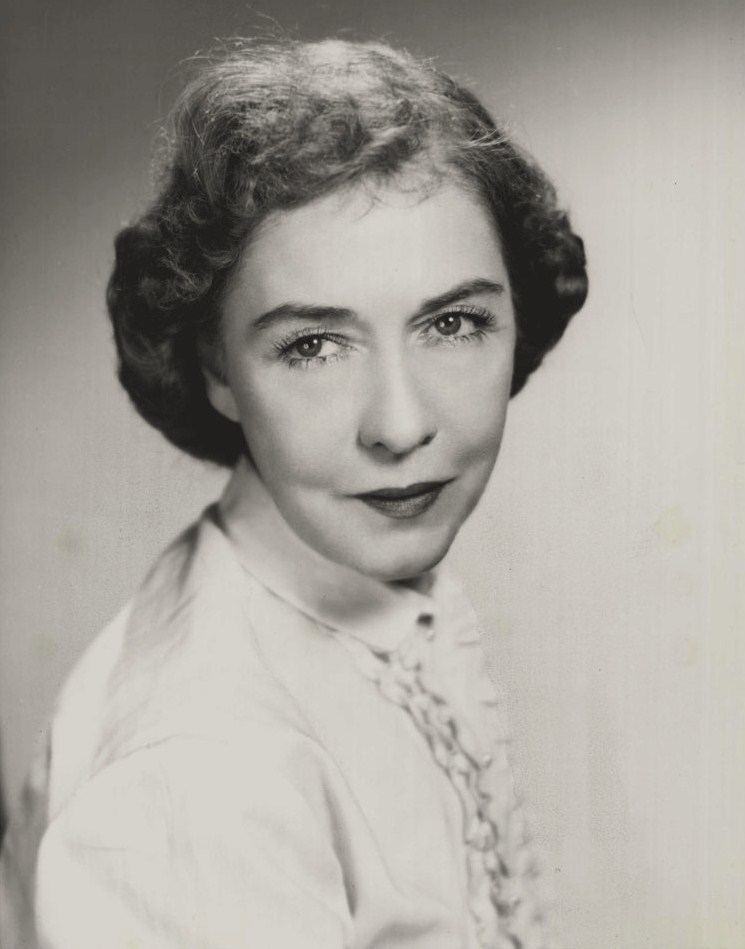 |
Dorothy Elizabeth Gish March 11, 1898 (1898-03-11) Dayton, Ohio, U.S. Actress, director, writer June 4, 1968, Rapallo, Italy James Rennie (m. 1920–1935) Orphans of the Storm, An Unseen Enemy, Hearts of the World, Romola, The Cardinal
Lillian Gish, Mary Pickford, D W Griffith, Mary Gish, Douglas Fairbanks |
Bronchial pneumonia |
Dorothy Elizabeth Gish (March 11, 1898 – June 4, 1968) was an American actress of the screen and stage, as well as a director and writer. Dorothy and her older sister Lillian Gish were major movie stars of the silent era. Dorothy also had great success on the stage, and was inducted into the American Theatre Hall of Fame. Dorothy Gish was noted as a fine comedian, and many of her films were comedies.
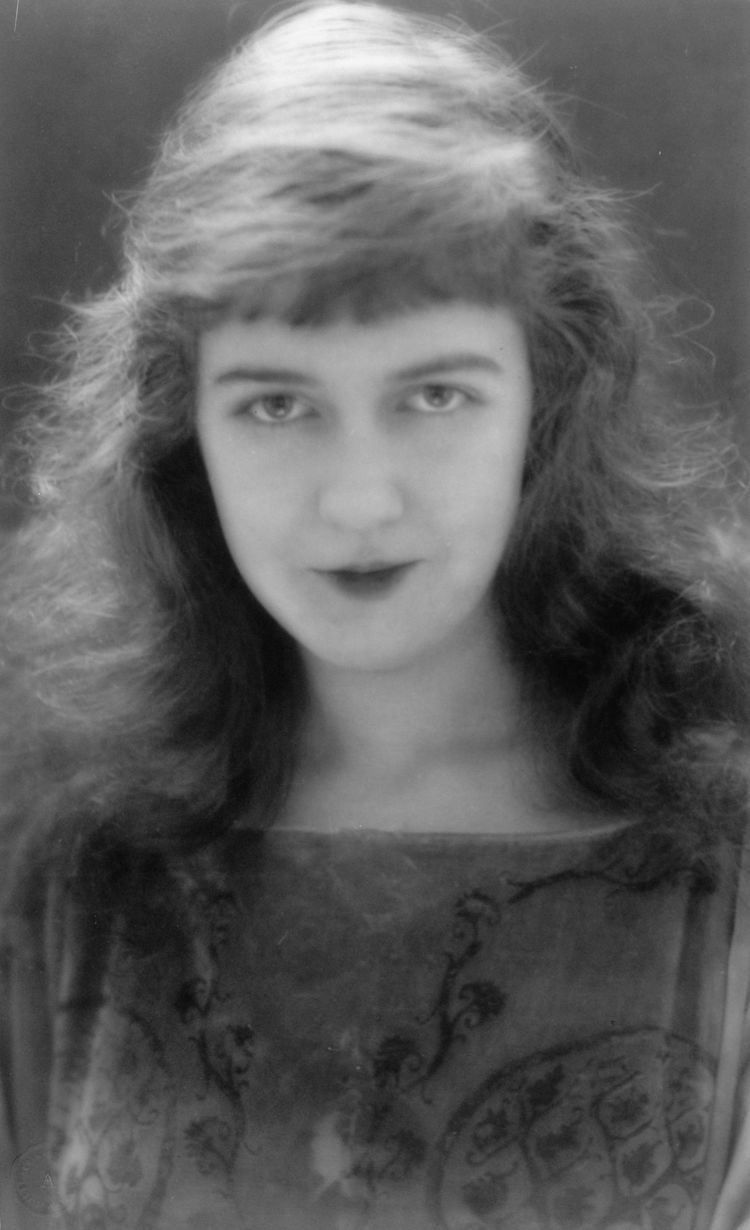
Gish was born in Dayton, Ohio. She had an older sister, Lillian. The Gish sisters' mother, Mary Robinson McConnell Gish, supported the family after her husband, James Leigh Gish, abandoned the family in New York. Mary Gish moved to Indiana where she opened a candy and catering business. In 1910 she heard from her husband's brother, Grant Gish, who lived in Shawnee, Oklahoma, that James was ill. He was in a hospital in nearby Norman, Oklahoma, so Mary sent 17 year old Lillian to see about him. At first Lillian wrote back to her 12 year old sister Dorothy that she planned to stay in Oklahoma and continue her education but after seeing her father she admitted she missed her mother and sister. So after a few months away from them, in the spring of 1912, she traveled back. Soon afterward their childhood friend, actress Mary Pickford, introduced them to director D. W. Griffith, and the sisters began acting at the Biograph Studios. Dorothy and Lillian Gish both debuted in Griffith's An Unseen Enemy. Dorothy would go on to star in over 100 short films and features, many of them with Lillian.
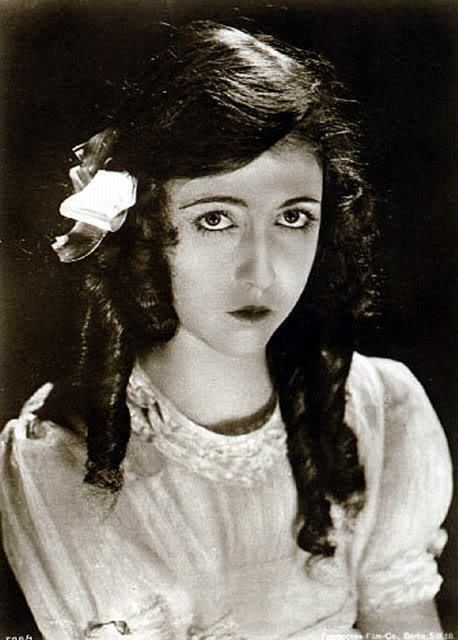
Linda Arvidson, Griffith's wife recalled in her autobiography, When The Movies Were Young:
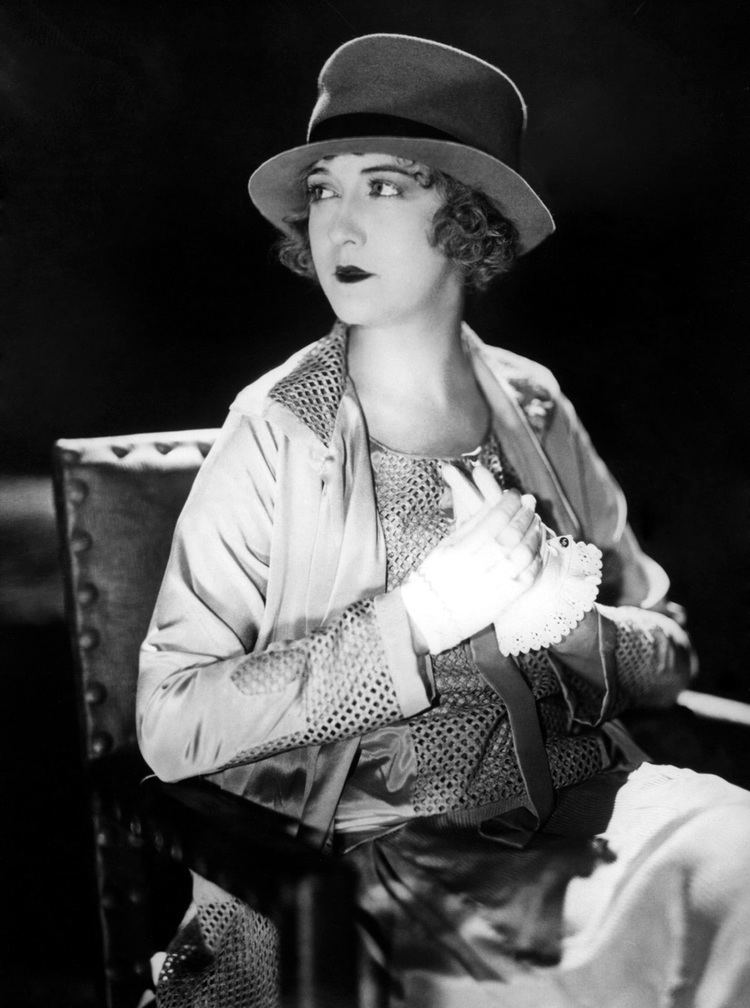
Lillian and Dorothy just melted right into the studio atmosphere without causing a ripple. For quite a long time they merely did extra work in and out of pictures. Especially Dorothy, as Mr. Griffith paid her no attention whatsoever and she kept on crying and trailed along. She also continued to play in many one and two reel Biograph films, learning the difficult technique of silent film acting, and preparing for opportunity when it came. Dorothy was still a person of insignificance, but she was a good sport about it; a likable kid, a bit too perky to interest the big director, so her talents blushed unnoticed by Mr. Griffith. In 'The Unseen Enemy' the sisters made their first joint appearance. Lillian regarded Dorothy with all the superior airs and graces of her rank. At a rehearsal of 'The Wife', of Belasco and DeMille fame, in which picture I played the lead, and Dorothy the ingénue, Lillian was one day an interested spectator. She was watching intently, for Dorothy had had so few opportunities, and now was doing so well, Lillian was unable to contain her surprise, and as she left the scene she said: 'Why, Dorothy is good; she's almost as good as I am.' Many more than myself thought Dorothy was better.
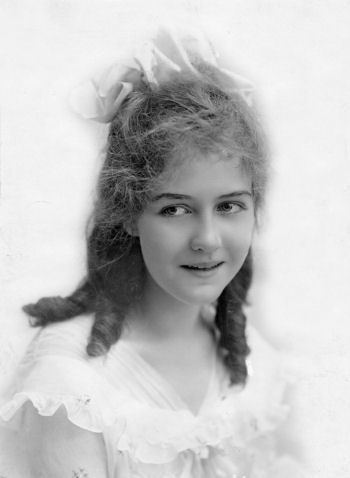
In Hearts of the World (1918), a film about World War I and the devastation of France, Dorothy found her first foothold, striking a personal hit in a comedy role that captured the essence of her sense of humor. As the “little disturber”, a street singer, her performance was the comic highlight of the film, and her characterization in this role catapulted her into a career as a star of comedy films.
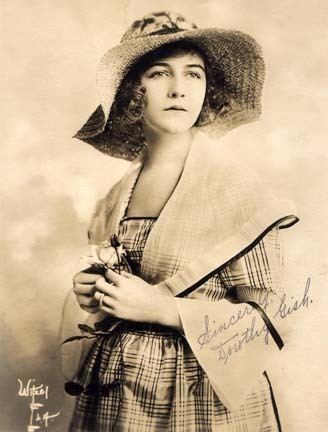
Griffith did not use Dorothy in any of his earliest epics, but while he spent months working on The Birth of a Nation and Intolerance, Dorothy was featured in many feature-length films made under the banner of Triangle and Mutual releases. They were directed by young Griffith protégés such as Donald Crisp, James Kirkwood, and Christy Cabanne. Elmer Clifton directed a series of seven Paramount-Artcraft comedies with Dorothy that were so successful and popular that the tremendous revenue they raked in helped to pay the cost of Griffith’s expensive epics. These films were wildly popular with the public and the critics. She specialised in pantomime and light comedy, while her sister appeared in tragic roles. Dorothy became famous in this long series of Griffith-supervised films for the Triangle-Fine Arts and Paramount companies from 1918 through 1920, comedies that put her in the front ranks of film comedians. Almost all of these films are now considered to be lost films.

"And So I Am a Comedienne", an article published in Ladies Home Journal in July 1925, gave Dorothy a chance to recall her public persona: “And so I am a comedienne, though I, too, once wanted to do heroic and tragic things. Today my objection to playing comedy is that it is so often misunderstood by the audiences, both in the theater and in the picture houses. It is so often thought to be a lesser art and something which comes to one naturally, a haphazard talent like the amateur clowning of some cut-up who is so often thought to be ‘the life of the party’. In the eyes of so many persons comedy is not only the absence of studied effect and acting, but it is not considered an art.”
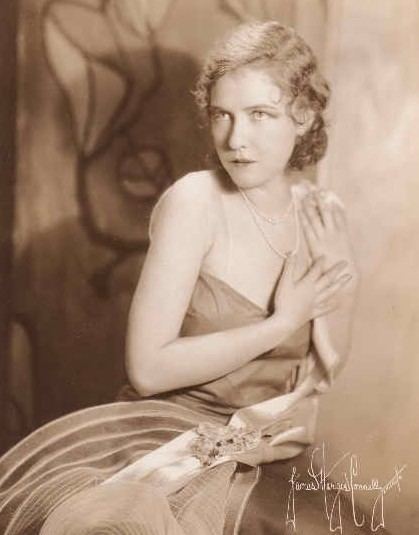
She made a film in England Nell Gwynn which lead to three more films. Gish earned £41,000 for these movies.

When the film industry converted to talking pictures, Dorothy made one, Wolves (1930), but then chose to take a respite from film work and return to the American stage where she had spent her childhood. George Cukor directed her in Young Love, and the light comedy found success with New York audiences as well as those on the road. A London production followed with equal success.
In 1939, both Dorothy and Lillian Gish found the role of a lifetime. “Dorothy and I went to see the New York production of Life With Father, starring Howard Lindsay and Dorothy Stickney,” Lillian wrote in her autobiography. “After the performance I said: ‘This is the play we’ve been waiting for to take through America.’” Lillian predicted the popular play would be a perfect showcase for all the people who had seen the hundreds of films featuring Mary Pickford, Dorothy, and herself. She was introduced to Lindsay backstage, and immediately surprised the producers with her enthusiastic desire to head the first company to go on the road, with Dorothy taking the same part for the second road company, and the movie rights for Mary Pickford. Pickford did not make the film version, but the Gish sisters took the two road companies on extensive tours.
Television in the 1950s offered many actors the opportunity to appear in plays broadcast live. Dorothy ventured into the new medium, appearing on NBC’s Lux Video Theatre on the night of November 24, 1955, in a production of Miss Susie Slagle’s. The play had been a film in 1945 with her sister, Lillian, made for Paramount Pictures Corporation.
“The truth is, that she did not know what she really wanted to do,” wrote her sister, Lillian, in her autobiography. “She had always had trouble making decisions and assuming responsibilities, In some ways she had never grown up. She was such a witty and enchanting child that we enjoyed indulging her. First Mother and I spoiled her and later Reba, her friend, and her husband Jim. Reba called Dorothy ‘Baby’ and so did Jim. With the best intentions in the world, we all helped to keep her a child.”
From 1930 until her death, she only appeared in five more movies. Our Hearts Were Young and Gay (1944) was a hit for Paramount. The Magnificent Yankee (1946) presented Dorothy at the Royale Theater. Lillian noted in her pictorial book, Dorothy and Lillian Gish, John Chapman's review of the film: "Miss [Dorothy] Gish and Mr. Calhern give the finest performances I have ever seen them in. She is a delight and a darling."
Director Otto Preminger cast Dorothy in his 1946 film, Centennial Summer, and she was said to have been amused that she and some of the other stars were allowed to sing Jerome Kern’s music. Mae Marsh appeared in the film in one of her many bit parts. The Whistle at Eaton Falls (1951) was a documentary style film produced by Louis de Rochemont. Dorothy played the widow of a mill owner.
She also made several appearances in anthology television series in the early 1950s. Her final film appearance was in another Otto Preminger film, The Cardinal (1963), in which she portrayed the mother of the title character.
She was married to James Rennie (1890–1965), a Canadian-born actor who was her co-star in Remodeling Her Husband (filmed in 1920, it was directed by Dorothy's older sister, Lillian, in her only directorial outing). They were married in 1920 in a double ceremony with actress Constance Talmadge and businessman John Piagoglou. They divorced in 1935; Dorothy never remarried.
She died in 1968 from bronchial pneumonia at the age of 70 at a clinic in Rapallo, Italy, where she had been a patient for two years, with sister Lillian at her side. Dorothy Gish was entombed in Saint Bartholomew's Episcopal Church in New York City in the columbarium in the undercroft of the church. Her sister Lillian was later interred beside her.
For her contribution as an actress in motion pictures, Dorothy Gish was awarded a star on the Hollywood Walk of Fame at 6385 Hollywood Blvd., Hollywood, California.
"Dorothy was much more talented than I am because she had wit. She could make people laugh. And they said I was as funny as a baby's open grave. I couldn't make people laugh, but Dorothy could make them cry and laugh, so therefore she was the better actress than I was."
Dorothy Gish Wikipedia
نوشته شده در تاريخ پنجشنبه 13 شهريور 1399
توسط elmiraluong
Actor Ethel Green (m. ?–1940) Film actor
|
|
Charles Ogle 1905–1926 |
 |
June 5, 1865 (1865-06-05) Steubenville, Ohio, U.S. October 11, 1940, Long Beach, California, United States Frankenstein, A Christmas Carol, Rebecca of Sunnybrook Farm, Treasure Island, The Young Rajah
J Searle Dawley, James Cruze, Jesse L Lasky, Marshall Neilan, William C deMille |
Forest Lawn Memorial Park |
Charles Stanton Ogle (June 5, 1865 – October 11, 1940), was an American silent film actor.
Born in Steubenville, Ohio, Ogle first performed in live theatre, making his first appearance on Broadway in 1905. He embarked on a career in film with Edison Studios in The Bronx, New York in 1908, appearing in The Boston Tea Party directed by Edwin S. Porter. He went on to portray the monster in the first film version of Frankenstein (1910), and starred in the first ever serial film, What Happened to Mary (1912) Ogle portrayed Long John Silver in the 1920 screen version of Treasure Island, which also featured Lon Chaney. He went on to become a prolific character actor, making the last of his more than 300 film appearances in 1926.
Ogle died in Long Beach, California of arteriosclerosis.
نوشته شده در تاريخ پنجشنبه 13 شهريور 1399
توسط elmiraluong
Actor Justus Barnes
|
|
Film actor |
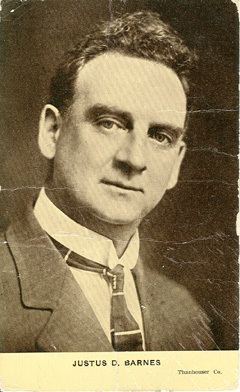 |
| October 2, 1862 (1862-10-02) Little Falls, New York, U.S. Weedsport Rural Cemetery J.D. Barnes Justice Barnes Justus Barnes February 6, 1946, Weedsport, New York, United States The Great Train Robbery, Nicholas Nickleby Edwin S Porter, Edwin Thanhouser, George Nichols |
Justus D. Barnes (October 2, 1862 – February 6, 1946) was an American stage and silent film actor. Barnes is best known for his role as an outlaw in the 1903 short silent Western, The Great Train Robbery.
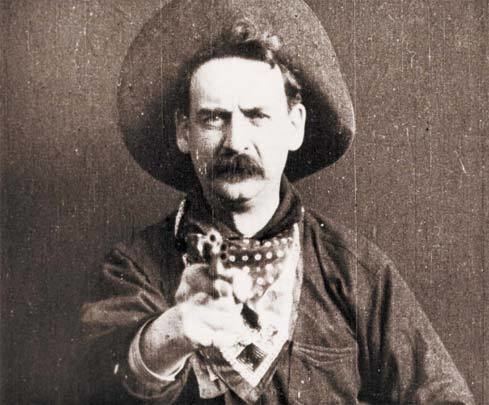
Justus Barnes was born in Little Falls, New York. His father was an immigrant from Scotland, while his mother was born in New York. He was a veteran stage actor before he made his film debut in 1903 in The Great Train Robbery, one of the first American films to emphasize narrative. In a memorable scene, Barnes as an outlaw points his pistol at the camera and fires all six shots at the viewers. The Great Train Robbery became one of the most successful and best known commercial films of the early silent screen era.
In July 1908, Barnes was hired as an actor in the stock company of the Edison Manufacturing Company, the film production company owned by Thomas Edison. In 1910, he signed on with the Thanhouser Company in New Rochelle, New York. Between 1910 and 1917, Justus appeared in more than seventy films for the Thanhouser, usually in the role of a villain. He played Ham Peggotty in David Copperfield, the earliest known film adaption of the 1850 novel by Charles Dickens. He also played supporting roles in Nicholas Nickleby (1912), Aurora Floyd (1912), and A Dog of Flanders (1914).
In 1917, he was released from the Thanhouser Company due to the company's financial issues. Barnes made his final onscreen appearance for the Edison Studio in Cy Whittaker's Ward, in 1917.
After retiring from acting, Barnes moved to Weedsport, New York where he worked as a milkman. He later owned a cigar store.
Barnes died on February 6, 1946 in Weedsport at the age of 83. He is buried in Weedsport Rural Cemetery, in Weedsport, New York.
Justus Barnes appears on a postage stamp issued in 1988 to honor The Great Train Robbery.
نوشته شده در تاريخ پنجشنبه 13 شهريور 1399
توسط elmiraluong
1907-1926 J. Dawley
|
|
Director Grace Manville Owens |
 |
James Searle Dawley May 13, 1877 (1877-05-13) Del Norte, Colorado, USA March 30, 1949, Hollywood, California, United States Frankenstein, Rescued from an Eagle's N, A Christmas Carol, Snow White, A Little Girl Who Did Not Belie
Charles Stanton Ogle, Mary Fuller, Augustus Phillips, Edwin S Porter, Marguerite Clark |
- Rescued from an Eagle's Nest (1908)
- The Boston Tea Party (1908)
- Hansel and Gretel (1909)
- Frankenstein (1910)
- A Christmas Carol (1910)
- Charge of the Light Brigade (1912)
- The Old Monk's Tale (1913)
- The Daughter of the Hills (1913)
- On The Broad Stairway (1913)
- Hulda of Holland (1913)
- Tess of the d'Urbervilles (1913)
- In the Bishop's Carriage (1913)
- Chelsea 7750 (1913)
- An Hour Before Dawn (1913)
- Caprice (1913)
- The Port of Doom (1913)
- Leah Kleschna (1913)
- A Lady of Quality (1913)
- An American Citizen (1914)
- The Pride of Jennico (1914)
- Four Feathers (1915)
- Susie Snowflake (1916)
- The Rainbow Princess (1916)
- Snow White (1916)
- Uncle Tom's Cabin (1918)
- When Men Desire (1919)
- A Virgin Paradise (1921)
- Love's Old Sweet Song (1923) short film made in Phonofilm
- Abraham Lincoln (1924) short film made in Phonofilm
نوشته شده در تاريخ پنجشنبه 13 شهريور 1399
توسط elmiraluong
Jewish Film director Adolph Zukor
|
|
1903–1959 Film producer |
 |
January 7, 1873 (1873-01-07) Ricse, Austria-Hungary founder of Paramount Pictures June 10, 1976, Los Angeles, California, United States Lottie Kaufman (m. 1897–1956) Eugene Zukor, Mildred Zukor Jacob Zukor, Hannah Liebermann Les Amours de la reine E, Shanghai Express, Dr Jekyll and Mr Hyde, The Poor Little Rich Girl, The Last Command
Jesse L Lasky, William Wadsworth Hodkinson, Louis B Mayer, Daniel Frohman, Samuel Goldwyn
|
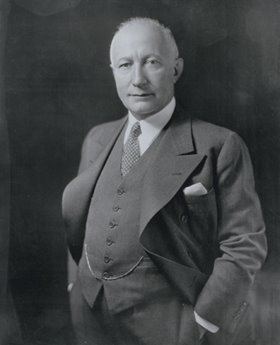
Zukor was born to a Jewish family in Ricse, Hungary, which was then a part of the Austro-Hungarian empire. In 1889, at the age of 16, he promised Mella Baumoel, a girl almost 4 years older, that he would send for her one day and they would be married; he emigrated to the United States. Mella arrived in the U.S. too late to wed him; they never spoke again, but she kept the ring he gave to her and passed it to her granddaughter. Like most immigrants, he began modestly. When he first landed in New York, he stayed with his family and worked in an upholstery shop. A friend got him a job as an apprentice at a furrier.
Zukor stayed there for two years. When he left to become a "contract" worker, sewing fur pieces and selling them himself, he was nineteen years old and an accomplished designer. He was young and adventuresome, and the 1893 Columbian Exposition in Chicago drew him to the Midwest. There he started a fur business. In the second season of operation, Zukor's Novelty Fur Company expanded to 25 men and opened a branch.
Historian Neal Gabler wrote, "one of the stubborn fallacies of movie history is that the men who created the film industry were all impoverished young vulgarians..." Zukor clearly didn't fit this profile. By 1903, he already looked and lived like a wealthy young burgher, and he certainly earned the income of one. He had a commodious apartment at 111th Street and Seventh Avenue in New York City's wealthy German-Jewish section".
In 1918, he moved to New City, Rockland County, New York, where he purchased 300 acres of land from Lawrence Abraham, heir to the A&S Department Stores. Abraham had already built a sizable house, a nine-hole golf course and a swimming pool on this property. Two years later, Zukor bought an additional 500 acres, built a night house, guest house, movie theater, locker room, greenhouses, garages, staff quarters and hired golf architect A.W. Tillinghast to build an 18-hole championship golf course. Today, Zukor's estate is the private country club Paramount Country Club.
He became involved in the motion picture industry when in 1903 his cousin, Max Goldstein approached him for a loan. Mitchell Mark needed investors to expand his chain of similar theaters that began in Buffalo, New York with Edisonia Hall. The arcade salon, the Automatic Vaudeville Company on 14th Street in New York City was to feature Thomas Edison's marvels: phonographs, electric lights and moving pictures. Zukor not only gave Goldstein the money but insisted on forming a partnership to open another one. Another partner in the venture was Marcus Loew.
In 1912, Adolph Zukor established Famous Players Film Company—advertising "Famous Players in Famous Plays"—as the American distribution company for the French film production Les Amours de la reine Élisabeth starring Sarah Bernhardt. The following year he obtained the financial backing of the Frohman brothers, the powerful New York City theatre impresarios. Their primary goal was to bring noted stage actors to the screen and Zukor went on to produce The Prisoner of Zenda (1913). He purchased an armory on 26th Street in Manhattan and converted it into Chelsea Studios, a movie studio that is still used today.
The studio evolved into Famous Players-Lasky with co-producer Jesse L. Lasky. The Paramount Pictures Corporation was formed to distribute films made by Famous Players-Lasky, and a dozen smaller companies pulled into Mr. Zukor's corporate giant. The consolidations led to formation of a nationwide film distribution system. And in 1919, the company bought 135 theaters in the Southern states, making the producing concern the first that guaranteed exhibition of its own product in its own theaters. He revolutionized the film industry by organizing production, distribution, and exhibition within a single company.
Zukor shed most of his early partners; the Frohman brothers, Hodkinson and Goldwyn were out by 1917.
Zukor believed in stars. He signed many of the leading early stars, including Mary Pickford, Marguerite Clark, Pauline Frederick, Douglas Fairbanks, Gloria Swanson, Rudolph Valentino, and Wallace Reid. With so many important players, Zukor also pioneered "block booking" for Paramount Pictures, which meant that an exhibitor who wanted a particular star's films had to buy a year's worth of other Paramount productions. It was this system that gave Paramount a leading position in the 1920s and 1930s, but which led the government to pursue it on antitrust grounds for more than twenty years.
Zukor was the driving force behind Paramount's success. Through the teens and twenties, he also built the Publix Theatres Corporation, a chain of nearly 2,000 screens. He also ran two production studios, one in Astoria, New York (now the Kaufman Astoria Studios) and the other in Hollywood, California.
In 1926, Zukor hired independent producer B. P. Schulberg, who had an unerring eye for new talent, to run the new West Coast operations. They purchased the Robert Brunton Studios, a 26-acre facility at 5451 Marathon Street for US$1 million. In 1927, Famous Players-Lasky took the name Paramount Famous Lasky Corporation. Three years later, because of the importance of the Publix Theatres, it became Paramount Publix Corporation.
Zukor was now turning out 60 features a year. He made deals to show them all in theaters controlled by Loew's Enterprises, and also continued to add more theaters to his own chain. By 1920 he was in a position to charge what he wished for film rentals. Thus he pioneered the concept, now the accepted practice in the film industry, by which the distributor charges the exhibitor a percentage of box-office receipts.
Zukor, ever the impresario, bought a huge plot of ground at Broadway and 43d Street, over objections of his board of directors, to build the Paramount Theater and office building, a 39-story building that had its grand opening in 1926. He managed to keep stars like Pola Negri, Gloria Swanson, and most important of all, Mary Pickford, under contract and happy to stay at Paramount. At one point Miss Pickford told Zukor: "You know, for years I've dreamed of making $20,000 a year before I was 20, and I'll be 20 very soon."
"I could take a hint," Zukor recalled wryly. "She got the $20,000, and before long I was paying her $100,000 a year. Mary was a terrific businessman."
Zukor was, primarily, also a businessman. "He did not take the same personal, down-to- the-last-detail interest in the making of his movies that producer-executives such as Samuel Goldwyn and Louis B. Mayer did," wrote the New York Times in Zukor's obit at the age of 103. He became an early investor in radio, taking a 50% interest in the new Columbia Broadcasting System in 1928, but selling it within a few years.
Partner Lasky hung on until 1932, when Paramount nearly collapsed in the Depression years, and he was blamed for this and tossed out. The following year, Paramount went into receivership. Zukor's over-expansion and use of overvalued Paramount stock for purchases were ultimately at fault. A bank-mandated reorganization team kept the company intact, and, miraculously, Zukor was kept on. In 1935, Paramount-Publix theater chain went bankrupt. In 1936, Barney Balaban became president, and Zukor was bumped up to chairman of the board. In this role, Zukor reorganized the company as Paramount Pictures, Inc. and was able to successfully bring the studio out of bankruptcy.
He eventually spent most of his time in New York, but spent the winter months in Hollywood to check on his studio. He served as president until 1936 when he was elevated to chairman of the board, later followed by honorary chairman.
He retired from Paramount Pictures in 1959 and thereafter assumed Chairman Emeritus status, a position he held up until his death at the age of 103 in Los Angeles.
In 1897, he married Lottie Kaufman; they had two children, Eugene J. Zukor, who became a Paramount executive in 1916, and Mildred Zukor Loew who married Arthur Loew, son of Marcus Loew.
Zukor died at his Los Angeles residence at age 103.
نوشته شده در تاريخ پنجشنبه 13 شهريور 1399
توسط elmiraluong
Academy Honorary Award Film director
|
|
D. Griffith 1908–1931 |
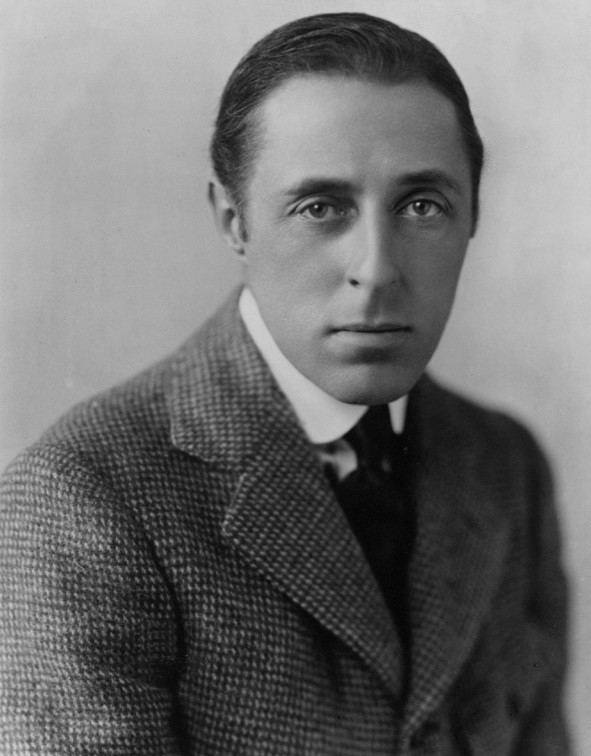 |
David Llewelyn Wark Griffith January 22, 1875 (1875-01-22) LaGrange, Kentucky, United States Mount Tabor Methodist Church Graveyard Film director, film producer July 23, 1948, Hollywood, California, United States Evelyn Baldwin Kunze (m. 1936–1947), Linda Arvidson (m. 1906–1936) The Man who Invented Hollywood: The Autobiography of D. W. Griffith, Intolerance Fs The Birth of a Nation, Intolerance, Broken Blossoms, Way Down East, Orphans of the Storm
Lillian Gish, Mary Pickford, Douglas Fairbanks, Charlie Chaplin, Dorothy Gish |
Cerebral hemorrhage |
David Wark Griffith (January 22, 1875 – July 23, 1948) was an American director, writer, and producer who pioneered modern filmmaking techniques. 
Griffith is best remembered for The Birth of a Nation (1915) and Intolerance (1916). The Birth of a Nation made use of advanced camera and narrative techniques, and its popularity set the stage for the dominance of the feature-length film in the United States. Since its release, the film has sparked significant controversy surrounding race in the United States, focusing on its negative depiction of black people and the glorification of the Ku Klux Klan. Today, it is both noted for its radical technique and condemned for its inherently racist philosophy. The film was subject to boycotts by the NAACP and, after screenings of the film had caused riots at several theaters, the film was censored in many cities, including New York City. Intolerance, his next film, was, in part, an answer to his critics.
Several of Griffith's later films, including Broken Blossoms (1919), Way Down East (1920), and Orphans of the Storm (1921), were also successful, but his high production, promotional, and roadshow costs often made his ventures commercial failures. By the time of his final feature, The Struggle (1931), he had made roughly 500 films.
Griffith is one of the founders of the Academy of Motion Picture Arts and Sciences and widely considered among the most important figures in the history of cinema. He is credited with popularizing the use of the close-up shot.
Griffith was born on a farm in Oldham County, Kentucky, the son of Mary Perkins (née Oglesby) and Jacob Wark "Roaring Jake" Griffith. Jacob was a Confederate Army colonel in the American Civil War and was elected as a Kentucky state legislator. Griffith was raised a Methodist. He attended a one-room schoolhouse where he was taught by his older sister, Mattie. After his father died when he was ten, the family struggled with poverty.
When Griffith was 14, his mother abandoned the farm and moved the family to Louisville, where she opened a boarding house. It failed shortly after. Griffith then left high school to help support the family, taking a job in a dry goods store and later in a bookstore. Griffith began his creative career as an actor in touring companies. Meanwhile, he was learning how to become a playwright, but had little success—only one of his plays was accepted for a performance. Griffith then decided to become an actor, and appeared in many films as an extra.
Griffith began making short films in 1908, and released his first feature film, Judith of Bethulia, in 1914. A few years earlier, in 1907, Griffith, still struggling as a playwright, traveled to New York in an attempt to sell a script to Edison Studios producer Edwin Porter. Porter rejected Griffith's script, but gave him an acting part in Rescued from an Eagle's Nest instead.
Finding this attractive, Griffith began exploring a career as a motion picture actor.
In 1908, Griffith accepted a role as a stage extra in Professional Jealousy for the American Mutoscope and Biograph Company, commonly known as Biograph, where he met his future, favorite cameraman, G. W. "Billy" Bitzer. At Biograph, Griffith's career in the film industry changed forever. In 1908, Biograph's main director Wallace McCutcheon grew ill, and his son, Wallace McCutcheon, Jr., took his place. McCutcheon, Jr. did not bring the studio success. As a result, Biograph co-founder, Henry "Harry" Marvin, gave Griffith the position and the young man made his first short movie for the company, The Adventures of Dollie. Griffith directed 48 shorts for the company that year.
His short In Old California (1910) was the first film shot in Hollywood, California. Four years later he produced and directed his first feature film Judith of Bethulia (1914), one of the earliest to be produced in the US. At the time, Biograph believed that longer features were not viable. According to actress Lillian Gish, the company thought that "a movie that long would hurt [the audience's] eyes".
Because of company resistance to his goals, and his cost overruns on the film (it cost $30,000 to produce), Griffith left Biograph. He took his company of actors with him and joined the Mutual Film Corporation. He formed a studio with the Majestic Studio manager Harry Aitken; it became known as Reliance-Majestic Studios (and was later renamed Fine Arts Studio). His new production company became an autonomous production unit partner in Triangle Film Corporation along with Thomas Ince and Keystone Studios' Mack Sennett; the Triangle Film Corporation was headed by Griffith's partner Harry Aitken, who was released from the Mutual Film Corporation, and his brother Roy.
Through Reliance-Majestic Studios, Griffith directed and produced The Clansman (1915), which would later be known as The Birth of a Nation. Historically, The Birth of a Nation is considered important by film historians as one of the first feature length American films (most previous films were less than one hour), and it changed the industry's standard in a way influential today. Although the film was a success it aroused much controversy due to its depiction of slavery, the Ku Klux Klan, and race relations in both the Civil War and the Reconstruction era.
Like its source material, Thomas Dixon, Jr.'s 1905 novel The Clansman, it depicts Southern pre-Civil War slavery as benign, the enfranchisement of freedmen as a corrupt Republican plot, and the Klan as a band of heroes restoring the rightful order. This view of the era was popular at the time, and was endorsed by historians of the Dunning School for decades, although it met with strong criticism from the National Association for the Advancement of Colored People (NAACP) and other groups.
The NAACP attempted to stop showings of the film. While they were successful in some cities, it was shown widely and became the most successful box office attraction of its time. Considered among the first "blockbuster" motion pictures, it broke virtually all box office records that had been established until then. "They lost track of the money it made", Lillian Gish once remarked in a Kevin Brownlow interview. Some have speculated that an adjustment of box office earnings for inflation would confirm it as the most profitable movie of all time.
Among the people who profited by the film was Louis B. Mayer, who bought the rights to distribute The Birth of a Nation in New England. With the money he made, he was able to begin his career as a producer that culminated in the creation of Metro-Goldwyn-Mayer studios.
After seeing the film, which was filled with action and violence, audiences in some major northern cities rioted over the film's racial content. In his next film, Intolerance, Griffith believed he was responding to critics. He portrayed the effects of intolerance in four different historical periods: the Fall of Babylon; the Crucifixion of Jesus; the events surrounding the St. Bartholomew's Day massacre (during religious persecution of French Huguenots); and a modern story. During its release Intolerance was not a financial success. Although it had good box office turn-outs, the film did not bring in enough profits to cover the lavish road show that accompanied it. Griffith put a huge budget into the film's production, which could not be recovered in its box office. He mostly financed Intolerence, contributing to his financial ruin for the rest of his life.
When his production partnership was dissolved in 1917, Griffith went to Artcraft (part of Paramount), then to First National (1919–1920). At the same time he founded United Artists, together with Charlie Chaplin, Mary Pickford, and Douglas Fairbanks. At United Artists, Griffith continued to make films, but never achieved box office grosses as high as either The Birth of a Nation or Intolerance. He was also a producer on the 1915 film Martyrs of the Alamo.
Though United Artists survived as a company, Griffith's association with it was short-lived. While some of his later films did well at the box office, commercial success often eluded him. Griffith features from this period include Broken Blossoms (1919), Way Down East (1920), Orphans of the Storm (1921), Dream Street (1921), One Exciting Night (1922) and America (1924). Of these, the first three were successes at the box office. Griffith was forced to leave United Artists after Isn't Life Wonderful (1924) failed at the box office.
He made a part-talkie, Lady of the Pavements (1929), and only two full-sound films, Abraham Lincoln (1930) and The Struggle (1931). Neither was successful, and after The Struggle he never made another film.
In 1936, director Woody Van Dyke, who had worked as Griffith's apprentice on Intolerance, asked Griffith to help him shoot the famous earthquake sequence for San Francisco, but did not give him any film credit. Starring Clark Gable, Jeanette MacDonald and Spencer Tracy, it was the top-grossing film of the year.
In 1939, the producer Hal Roach hired Griffith to produce Of Mice and Men (1939) and One Million B.C. (1940). He wrote to Griffith: "I need help from the production side to select the proper writers, cast, etc. and to help me generally in the supervision of these pictures."
Although Griffith eventually disagreed with Roach over the production and parted, Roach later insisted that some of the scenes in the completed film were directed by Griffith. This would make the film the final production in which Griffith was actively involved. But, cast members' accounts recall Griffith directing only the screen tests and costume tests. When Roach advertised the film in late 1939 with Griffith listed as producer, Griffith asked that his name be removed.
Mostly forgotten by movie-goers of the time, Griffith was held in awe by many in the film industry. In the mid-1930s, he was given a special Oscar by the Academy of Motion Picture Arts and Sciences. In 1946, he made an impromptu visit to the film location of David O. Selznick's epic western Duel in the Sun, where some of his veteran actors, Lillian Gish, Lionel Barrymore and Harry Carey, were cast members. Gish and Barrymore found their old mentor's presence distracting and became self-conscious. While the two were filming their scenes, Griffith hid behind set scenery.
On the morning of July 23, 1948, Griffith was discovered unconscious in the lobby at the Knickerbocker Hotel in Los Angeles, California, where he had been living alone. He died of a cerebral hemorrhage at 3:42 PM on the way to a Hollywood hospital. A large public service was held in his honor at the Hollywood Masonic Temple, but few stars came to pay their last respects. He is buried at Mount Tabor Methodist Church Graveyard in Centerfield, Kentucky. In 1950, The Directors Guild of America provided a stone and bronze monument for his gravesite.
Performer and director Charlie Chaplin called Griffith "The Teacher of us All". Filmmakers such as John Ford, Alfred Hitchcock, Orson Welles, Lev Kuleshov, Jean Renoir, Cecil B. DeMille, King Vidor, Victor Fleming, Raoul Walsh, Carl Theodor Dreyer, Sergei Eisenstein, and Stanley Kubrick have spoken of their respect for the director of Intolerance. Welles said "I have never really hated Hollywood except for its treatment of D. W. Griffith. No town, no industry, no profession, no art form owes so much to a single man."
Griffith seems to have been the first to understand how certain film techniques could be used to create an expressive language; it gained popular recognition with the release of his The Birth of a Nation (1915). His early shorts—such as Biograph's The Musketeers of Pig Alley (1912), the first "gangster film"—show that Griffith's attention to camera placement and lighting heightened mood and tension. In making Intolerance, the director opened up new possibilities for the medium, creating a form that seems to owe more to music than to traditional narrative.
- In the 1951 Philco Television Playhouse episode "The Birth of the Movies", events from Griffith's film career were depicted. Griffith was played by John Newland.
- In 1953, the Directors Guild of America (DGA) instituted the D. W. Griffith Award, its highest honor. On December 15, 1999, DGA President Jack Shea and the DGA National Board announced that the award would be renamed as the "DGA Lifetime Achievement Award". They stated that, although Griffith was extremely talented, they felt his film The Birth of a Nation had "helped foster intolerable racial stereotypes", and that it was thus better not to have the top award in his name.
- In 1975, Griffith was honored on a ten-cent postage stamp by the United States.
- D.W. Griffith Middle School in Los Angeles is named after Griffith. Because of the association of Griffith and the racist nature of The Birth of a Nation, attempts have been made to rename the 100% minority-enrolled school.
- In 2008 the Hollywood Heritage Museum hosted a screening of Griffith's earliest films, to commemorate the centennial of his start in film.
- On January 22, 2009 the Oldham History Center in La Grange, Kentucky opened a 15-seat theatre in Griffith's honor. The theatre features a library of available Griffith films.
Griffith has five films preserved in the United States National Film Registry deemed as being "culturally, historically, or aesthetically significant." These are Lady Helen's Escapade (1909), A Corner in Wheat (1909), The Birth of a Nation (1915), Intolerance: Love's Struggle Throughout the Ages (1916), and Broken Blossoms (1919).
نوشته شده در تاريخ پنجشنبه 13 شهريور 1399
توسط elmiraluong
1899–1976 Comic Charlie Chaplin
|
|
charliechaplin.com See Chaplin family |
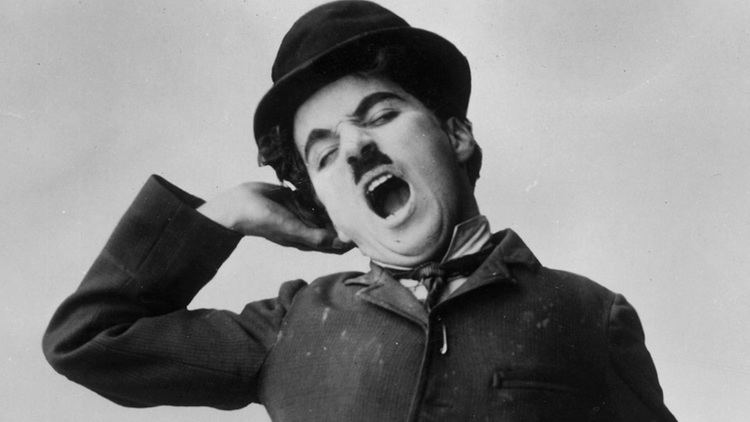 |
Charles Spencer Chaplin 16 April 1889 (1889-04-16) London, England (unverified) Actor director composer screenwriter producer editor December 25, 1977, Corsier-sur-Vevey, Switzerland Geraldine Chaplin, Michael Chaplin, Sydney Chaplin Oona O'Neill (m. 1943–1977) The Kid, The Great Dictator, Modern Times, The Gold Rush, City Lights
Oona O'Neill, Geraldine Chaplin, Oona Chaplin, Buster Keaton, Michael Chaplin |
Sir Charles Spencer "Charlie" Chaplin, (16 April 1889 – 25 December 1977) was an English comic actor, filmmaker, and composer who rose to fame in the era of silent film. Chaplin became a worldwide icon through his screen persona "the Tramp" and is considered one of the most important figures in the history of the film industry. His career spanned more than 75 years, from childhood in the Victorian era until a year before his death in 1977, and encompassed both adulation and controversy.

Chaplin's childhood in London was one of poverty and hardship. As his father was absent and his mother struggled financially, he was sent to a workhouse twice before the age of nine. When he was 14, his mother was committed to a mental asylum. Chaplin began performing at an early age, touring music halls and later working as a stage actor and comedian. At 19, he was signed to the prestigious Fred Karno company, which took him to America. Chaplin was scouted for the film industry and began appearing in 1914 for Keystone Studios. He soon developed the Tramp persona and formed a large fan base. Chaplin directed his own films from an early stage and continued to hone his craft as he moved to the Essanay, Mutual, and First National corporations. By 1918, he was one of the best-known figures in the world.
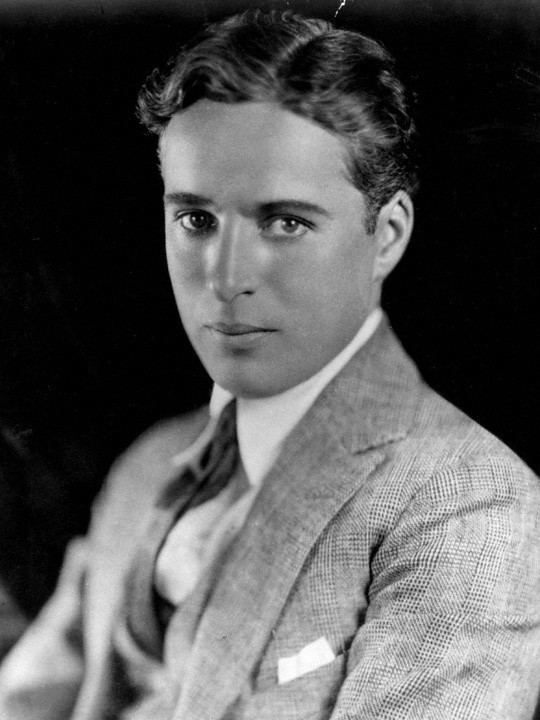
In 1919, Chaplin co-founded the distribution company United Artists, which gave him complete control over his films. His first feature-length was The Kid (1921), followed by A Woman of Paris (1923), The Gold Rush (1925), and The Circus (1928). He refused to move to sound films in the 1930s, instead producing City Lights (1931) and Modern Times (1936) without dialogue. Chaplin became increasingly political, and his next film, The Great Dictator (1940), satirised Adolf Hitler. The 1940s were a decade marked with controversy for Chaplin, and his popularity declined rapidly. He was accused of communist sympathies, while his involvement in a paternity suit and marriages to much younger women caused scandal. An FBI investigation was opened, and Chaplin was forced to leave the United States and settle in Switzerland. He abandoned the Tramp in his later films, which include Monsieur Verdoux (1947), Limelight (1952), A King in New York (1957), and A Countess from Hong Kong (1967).

Chaplin wrote, directed, produced, edited, starred in, and composed the music for most of his films. He was a perfectionist, and his financial independence enabled him to spend years on the development and production of a picture. His films are characterised by slapstick combined with pathos, typified in the Tramp's struggles against adversity. Many contain social and political themes, as well as autobiographical elements. In 1972, as part of a renewed appreciation for his work, Chaplin received an Honorary Academy Award for "the incalculable effect he has had in making motion pictures the art form of this century". He continues to be held in high regard, with The Gold Rush, City Lights, Modern Times, and The Great Dictator often ranked on industry lists of the greatest films of all time.
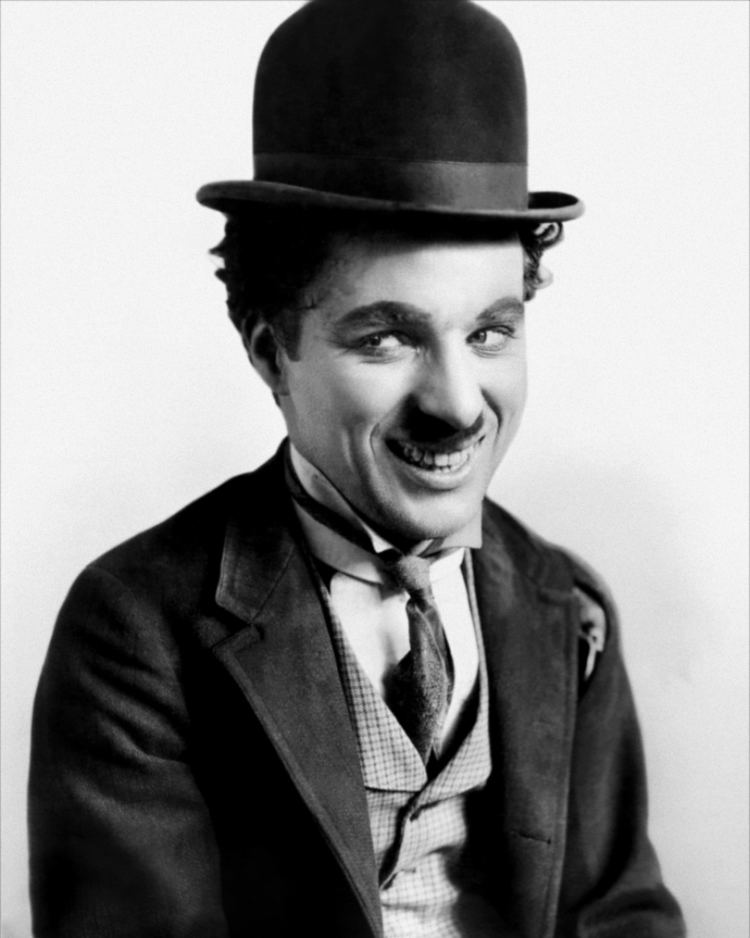
Charles Spencer Chaplin was born on 16 April 1889 to Hannah Chaplin (born Hannah Harriet Pedlingham Hill) and Charles Chaplin Sr. There is no official record of his birth, although Chaplin believed he was born at East Street, Walworth, in South London. His mother and father had married four years previously, at which time Charles Sr. became the legal carer of Hannah's illegitimate son, Sydney John Hill. At the time of his birth, Chaplin's parents were both music hall entertainers. Hannah, the daughter of a shoemaker, had a brief and unsuccessful career under the stage name Lily Harley, while Charles Sr., a butcher's son, was a popular singer. Although they never divorced, Chaplin's parents were estranged by around 1891. The following year, Hannah gave birth to a third son – George Wheeler Dryden – fathered by the music hall entertainer Leo Dryden. The child was taken by Dryden at six months old, and did not re-enter Chaplin's life for 30 years.
Chaplin's childhood was fraught with poverty and hardship, making his eventual trajectory "the most dramatic of all the rags to riches stories ever told" according to his authorised biographer David Robinson. Chaplin's early years were spent with his mother and brother Sydney in the London district of Kennington; Hannah had no means of income, other than occasional nursing and dressmaking, and Chaplin Sr. provided no financial support. As the situation deteriorated, Chaplin was sent to Lambeth Workhouse when he was seven years old. The council housed him at the Central London District School for paupers, which Chaplin remembered as "a forlorn existence". He was briefly reunited with his mother 18 months later, before Hannah was forced to readmit her family to the workhouse in July 1898. The boys were promptly sent to Norwood Schools, another institution for destitute children.
In September 1898, Hannah was committed to Cane Hill mental asylum – she had developed a psychosis seemingly brought on by an infection of syphilis and malnutrition. For the two months she was there, Chaplin and his brother Sydney were sent to live with their father, whom the young boys scarcely knew. Charles Sr. was by then a severe alcoholic, and life there was bad enough to provoke a visit from the National Society for the Prevention of Cruelty to Children. Chaplin's father died two years later, at 38 years old, from cirrhosis of the liver.
Hannah entered a period of remission but, in May 1903, became ill again. Chaplin, then 14, had the task of taking his mother to the infirmary, from where she was sent back to Cane Hill. He lived alone for several days, searching for food and occasionally sleeping rough, until Sydney – who had enrolled in the Navy two years earlier – returned. Hannah was released from the asylum eight months later, but in March 1905, her illness returned, this time permanently. "There was nothing we could do but accept poor mother's fate", Chaplin later wrote, and she remained in care until her death in 1928.
Between his time in the poor schools and his mother succumbing to mental illness, Chaplin began to perform on stage. He later recalled making his first amateur appearance at the age of five years, when he took over from Hannah one night in Aldershot. This was an isolated occurrence, but by the time he was nine Chaplin had, with his mother's encouragement, grown interested in performing. He later wrote: "[she] imbued me with the feeling that I had some sort of talent". Through his father's connections, Chaplin became a member of the Eight Lancashire Lads clog-dancing troupe, with whom he toured English music halls throughout 1899 and 1900. Chaplin worked hard, and the act was popular with audiences, but he was not satisfied with dancing and wished to form a comedy act.
In the years Chaplin was touring with the Eight Lancashire Lads, his mother ensured that he still attended school but, by age 13, he had abandoned education. He supported himself with a range of jobs, while nursing his ambition to become an actor. At 14, shortly after his mother's relapse, he registered with a theatrical agency in London's West End. The manager sensed potential in Chaplin, who was promptly given his first role as a newsboy in Harry Arthur Saintsbury's Jim, a Romance of Cockayne. It opened in July 1903, but the show was unsuccessful and closed after two weeks. Chaplin's comic performance, however, was singled out for praise in many of the reviews.
Saintsbury secured a role for Chaplin in Charles Frohman's production of Sherlock Holmes, where he played Billy the pageboy in three nationwide tours. His performance was so well received that he was called to London to play the role alongside William Gillette, the original Holmes. "It was like tidings from heaven", Chaplin recalled. At 16 years old, Chaplin starred in the play's West End production at the Duke of York's Theatre from October to December 1905. He completed one final tour of Sherlock Holmes in early 1906, before leaving the play after more than two-and-a-half years.
Chaplin soon found work with a new company, and went on tour with his brother – who was also pursuing an acting career – in a comedy sketch called Repairs. In May 1906, Chaplin joined the juvenile act Casey's Circus, where he developed popular burlesque pieces and was soon the star of the show. By the time the act finished touring in July 1907, the 18-year-old had become an accomplished comedic performer. He struggled to find more work, however, and a brief attempt at a solo act was a failure.
Meanwhile, Sydney Chaplin had joined Fred Karno's prestigious comedy company in 1906 and, by 1908, he was one of their key performers. In February, he managed to secure a two-week trial for his younger brother. Karno was initially wary, and considered Chaplin a "pale, puny, sullen-looking youngster" who "looked much too shy to do any good in the theatre." However, the teenager made an impact on his first night at the London Coliseum and he was quickly signed to a contract. Chaplin began by playing a series of minor parts, eventually progressing to starring roles in 1909. In April 1910, he was given the lead in a new sketch, Jimmy the Fearless. It was a big success, and Chaplin received considerable press attention.
Karno selected his new star to join the section of the company, one that also included Stan Laurel, that toured North America's vaudeville circuit. The young comedian headed the show and impressed reviewers, being described as "one of the best pantomime artists ever seen here". His most successful role was a drunk called the "Inebriate Swell", which drew him significant recognition. The tour lasted 21 months, and the troupe returned to England in June 1912. Chaplin recalled that he "had a disquieting feeling of sinking back into a depressing commonplaceness" and was, therefore, delighted when a new tour began in October.
Six months into the second American tour, Chaplin was invited to join the New York Motion Picture Company. A representative who had seen his performances thought he could replace Fred Mace, a star of their Keystone Studios who intended to leave. Chaplin thought the Keystone comedies "a crude mélange of rough and rumble", but liked the idea of working in films and rationalised: "Besides, it would mean a new life." He met with the company and signed a $150-per-week ($3,635 in 2016 dollars) contract in September 1913.
Chaplin arrived in Los Angeles, home of the Keystone studio, in early December 1913. His boss was Mack Sennett, who initially expressed concern that the 24-year-old looked too young. He was not used in a picture until late January, during which time Chaplin attempted to learn the processes of filmmaking. The one-reeler Making a Living marked his film acting debut and was released on 2 February 1914. Chaplin strongly disliked the picture, but one review picked him out as "a comedian of the first water". For his second appearance in front of the camera, Chaplin selected the costume with which he became identified. He described the process in his autobiography:
"I wanted everything to be a contradiction: the pants baggy, the coat tight, the hat small and the shoes large ... I added a small moustache, which, I reasoned, would add age without hiding my expression. I had no idea of the character. But the moment I was dressed, the clothes and the makeup made me feel the person he was. I began to know him, and by the time I walked on stage he was fully born."
The film was Mabel's Strange Predicament, but "the Tramp" character, as it became known, debuted to audiences in Kid Auto Races at Venice – shot later than Mabel's Strange Predicament but released two days earlier. Chaplin adopted the character as his screen persona and attempted to make suggestions for the films he appeared in. These ideas were dismissed by his directors. During the filming of his eleventh picture, Mabel at the Wheel, he clashed with director Mabel Normand and was almost released from his contract. Sennett kept him on, however, when he received orders from exhibitors for more Chaplin films. Sennett also allowed Chaplin to direct his next film himself after Chaplin promised to pay $1,500 ($36,348 in 2016 dollars) if the film was unsuccessful.
Caught in the Rain, issued 4 May 1914, was Chaplin's directorial debut and was highly successful. Thereafter he directed almost every short film in which he appeared for Keystone, at the rate of approximately one per week, a period which he later remembered as the most exciting time of his career. Chaplin's films introduced a slower form of comedy than the typical Keystone farce, and he developed a large fan base. In November 1914, he had a supporting role in the first feature length comedy film, Tillie's Punctured Romance, directed by Sennett and starring Marie Dressler, which was a commercial success and increased his popularity. When Chaplin's contract came up for renewal at the end of the year, he asked for $1,000 a week ($24,232 in 2016 dollars) – an amount Sennett refused as too large.
The Essanay Film Manufacturing Company of Chicago sent Chaplin an offer of $1,250 a week with a signing bonus of $10,000. He joined the studio in late December 1914, where he began forming a stock company of regular players, including Leo White, Bud Jamison, Paddy McGuire and Billy Armstrong. He soon recruited a leading lady – Edna Purviance, whom Chaplin met in a cafe and hired on account of her beauty. She went on to appear in 35 films with Chaplin over eight years; the pair also formed a romantic relationship that lasted into 1917.
Chaplin asserted a high level of control over his pictures and started to put more time and care into each film. There was a month-long interval between the release of his second production, A Night Out, and his third, The Champion. The final seven of Chaplin's 14 Essanay films were all produced at this slower pace. Chaplin also began to alter his screen persona, which had attracted some criticism at Keystone for its "mean, crude, and brutish" nature. The character became more gentle and romantic; The Tramp (April 1915) was considered a particular turning point in his development. The use of pathos was developed further with The Bank, in which Chaplin created a sad ending. Robinson notes that this was an innovation in comedy films, and marked the time when serious critics began to appreciate Chaplin's work. At Essanay, writes film scholar Simon Louvish, Chaplin "found the themes and the settings that would define the Tramp's world."
During 1915, Chaplin became a cultural phenomenon. Shops were stocked with Chaplin merchandise, he was featured in cartoons and comic strips, and several songs were written about him. In July, a journalist for Motion Picture Magazine wrote that "Chaplinitis" had spread across America. As his fame grew worldwide, he became the film industry's first international star. When the Essanay contract ended in December 1915, Chaplin – fully aware of his popularity – requested a $150,000 signing bonus from his next studio. He received several offers, including Universal, Fox, and Vitagraph, the best of which came from the Mutual Film Corporation at $10,000 a week.
A contract was negotiated with Mutual that amounted to $670,000 a year, which Robinson says made Chaplin – at 26 years old – one of the highest paid people in the world. The high salary shocked the public and was widely reported in the press. John R. Freuler, the studio president, explained: "We can afford to pay Mr. Chaplin this large sum annually because the public wants Chaplin and will pay for him."
Mutual gave Chaplin his own Los Angeles studio to work in, which opened in March 1916. He added two key members to his stock company, Albert Austin and Eric Campbell, and produced a series of elaborate two-reelers: The Floorwalker, The Fireman, The Vagabond, One A.M., and The Count. For The Pawnshop, he recruited the actor Henry Bergman, who was to work with Chaplin for 30 years. Behind the Screen and The Rink completed Chaplin's releases for 1916. The Mutual contract stipulated that he release a two-reel film every four weeks, which he had managed to achieve. With the new year, however, Chaplin began to demand more time. He made only four more films for Mutual over the first ten months of 1917: Easy Street, The Cure, The Immigrant, and The Adventurer. With their careful construction, these films are considered by Chaplin scholars to be among his finest work. Later in life, Chaplin referred to his Mutual years as the happiest period of his career. However, Chaplin also felt that those films became increasingly formulaic over the period of the contract and he was increasingly dissatisfied with the working conditions encouraging that.
Chaplin was attacked in the British media for not fighting in the First World War. He defended himself, revealing that he would fight for Britain if called and had registered for the American draft, but he was not summoned by either country. Despite this criticism Chaplin was a favourite with the troops, and his popularity continued to grow worldwide. Harper's Weekly reported that the name of Charlie Chaplin was "a part of the common language of almost every country", and that the Tramp image was "universally familiar". In 1917, professional Chaplin imitators were so widespread that he took legal action, and it was reported that nine out of ten men who attended costume parties dressed as the Tramp. The same year, a study by the Boston Society for Psychical Research concluded that Chaplin was "an American obsession". The actress Minnie Maddern Fiske wrote that "a constantly increasing body of cultured, artistic people are beginning to regard the young English buffoon, Charles Chaplin, as an extraordinary artist, as well as a comic genius".
Mutual were patient with Chaplin's decreased rate of output, and the contract ended amicably. With his aforementioned concern about the declining quality of his films because of contract scheduling stipulations, Chaplin's primary concern in finding a new distributor was independence; Sydney Chaplin, then his business manager, told the press, "Charlie [must] be allowed all the time he needs and all the money for producing [films] the way he wants ... It is quality, not quantity, we are after." In June 1917, Chaplin signed to complete eight films for First National Exhibitors' Circuit in return for $1 million. He chose to build his own studio, situated on five acres of land off Sunset Boulevard, with production facilities of the highest order. It was completed in January 1918, and Chaplin was given freedom over the making of his pictures.
A Dog's Life, released April 1918, was the first film under the new contract. In it, Chaplin demonstrated his increasing concern with story construction and his treatment of the Tramp as "a sort of Pierrot". The film was described by Louis Delluc as "cinema's first total work of art". Chaplin then embarked on the Third Liberty Bond campaign, touring the United States for one month to raise money for the Allies of the First World War. He also produced a short propaganda film, donated to the government for fund-raising, called The Bond. Chaplin's next release was war-based, placing the Tramp in the trenches for Shoulder Arms. Associates warned him against making a comedy about the war but, as he later recalled: "Dangerous or not, the idea excited me." He spent four months filming the 45-minute-long picture, which was released in October 1918 with great success.
After the release of Shoulder Arms, Chaplin requested more money from First National, which was refused. Frustrated with their lack of concern for quality, and worried about rumours of a possible merger between the company and Famous Players-Lasky, Chaplin joined forces with Douglas Fairbanks, Mary Pickford, and D. W. Griffith to form a new distribution company – United Artists, established in January 1919. The arrangement was revolutionary in the film industry, as it enabled the four partners – all creative artists – to personally fund their pictures and have complete control. Chaplin was eager to start with the new company and offered to buy out his contract with First National. They declined this and insisted that he complete the final six films he owed them.
Before the creation of United Artists, Chaplin married for the first time. The 17-year-old actress Mildred Harris had revealed that she was pregnant with his child, and in September 1918, he married her quietly in Los Angeles to avoid controversy. Soon after, the pregnancy was found to be a false alarm. Chaplin was unhappy with the union and, feeling that marriage stunted his creativity, struggled over the production of his film Sunnyside. Harris was by then legitimately pregnant, and on 7 July 1919, gave birth to a son. Norman Spencer Chaplin was born malformed and died three days later. The marriage eventually ended in April 1920, with Chaplin explaining in his autobiography that they were "irreconcilably mismated".
Losing a child is thought to have influenced Chaplin's work, as he planned a film which turned the Tramp into the caretaker of a young boy. For this new venture, Chaplin also wished to do more than comedy and, according to Louvish, "make his mark on a changed world." Filming on The Kid began in August 1919, with four-year-old Jackie Coogan his co-star. It occurred to Chaplin that it was turning into a large project, so to placate First National, he halted production and quickly filmed A Day's Pleasure. The Kid was in production for nine months until May 1920 and, at 68 minutes, it was Chaplin's longest picture to date. Dealing with issues of poverty and parent–child separation, The Kid is thought to have been influenced by Chaplin's own childhood and was one of the earliest films to combine comedy and drama. It was released in January 1921 with instant success, and, by 1924, had been screened in over 50 countries.
Chaplin spent five months on his next film, the two-reeler The Idle Class. Following its September 1921 release, he chose to return to England for the first time in almost a decade. He then worked to fulfil his First National contract, releasing Pay Day in February 1922. The Pilgrim – his final short film – was delayed by distribution disagreements with the studio, and released a year later.
Having fulfilled his First National contract, Chaplin was free to make his first picture as an independent producer. In November 1922, he began filming A Woman of Paris, a romantic drama about ill-fated lovers. Chaplin intended it to be a star-making vehicle for Edna Purviance, and did not appear in the picture himself other than in a brief, uncredited cameo. He wished for the film to have a realistic feel and directed his cast to give restrained performances. In real life, he explained, "men and women try to hide their emotions rather than seek to express them". A Woman of Paris premiered in September 1923 and was acclaimed for its subtle approach, then an innovation. The public, however, seemed to have little interest in a Chaplin film without his presence, and it was a box office disappointment. The filmmaker was hurt by this failure – he had long wanted to produce a dramatic film and was proud of the result – and withdrew A Woman of Paris from circulation as soon as he could.
Chaplin returned to comedy for his next project. Setting his standards high, he told himself: "This next film must be an epic! The Greatest!" Inspired by a photograph of the 1898 Klondike Gold Rush, and later the story of the Donner Party of 1846–47, he made what Geoffrey Macnab calls "an epic comedy out of grim subject matter." In The Gold Rush, the Tramp is a lonely prospector fighting adversity and looking for love. With Georgia Hale as his new leading lady, Chaplin began filming the picture in February 1924. Its elaborate production, costing almost $1 million, included location shooting in the Truckee mountains with 600 extras, extravagant sets, and special effects. The last scene was not shot until May 1925, after 15 months of filming.
Chaplin felt The Gold Rush was the best film he had made to that point. It opened in August 1925 and became one of the highest-grossing films of the silent era with a profit of $5 million. The comedy contains some of Chaplin's most famous sequences, such as the Tramp eating his shoe and the "Dance of the Rolls". Macnab has called it "the quintessential Chaplin film". Chaplin stated, "This is the picture that I want to be remembered by" at the time of the film's release.
While making The Gold Rush, Chaplin married for the second time. Mirroring the circumstances of his first union, Lita Grey was a teenage actress, originally set to star in the film, whose surprise announcement of pregnancy forced Chaplin into marriage. She was 16 and he was 35, meaning Chaplin could have been charged with statutory rape under California law. He therefore arranged a discreet marriage in Mexico on 25 November 1924. Their first son, Charles Spencer Chaplin, Jr., was born on 5 May 1925, followed by Sydney Earl Chaplin on 30 March 1926.
It was an unhappy marriage, and Chaplin spent long hours at the studio to avoid seeing his wife. In November 1926, Grey took the children and left the family home. A bitter divorce followed, in which Grey's application – accusing Chaplin of infidelity, abuse, and of harbouring "perverted sexual desires" – was leaked to the press. Chaplin was reported to be in a state of nervous breakdown, as the story became headline news and groups formed across America calling for his films to be banned. Eager to end the case without further scandal, Chaplin's lawyers agreed to a cash settlement of $600,000 – the largest awarded by American courts at that time. His fan base was strong enough to survive the incident, and it was soon forgotten, but Chaplin was deeply affected by it.
Before the divorce suit was filed, Chaplin had begun work on a new film, The Circus. He built a story around the idea of walking a tightrope while besieged by monkeys, and turned the Tramp into the accidental star of a circus. Filming was suspended for 10 months while he dealt with the divorce scandal, and it was generally a trouble-ridden production. Finally completed in October 1927, The Circus was released in January 1928 to a positive reception. At the 1st Academy Awards, Chaplin was given a special trophy "For versatility and genius in acting, writing, directing and producing The Circus". Despite its success, he permanently associated the film with the stress of its production; Chaplin omitted The Circus from his autobiography, and struggled to work on it when he recorded the score in his later years.
By the time The Circus was released, Hollywood had witnessed the introduction of sound films. Chaplin was cynical about this new medium and the technical shortcomings it presented, believing that "talkies" lacked the artistry of silent films. He was also hesitant to change the formula that had brought him such success, and feared that giving the Tramp a voice would limit his international appeal. He, therefore, rejected the new Hollywood craze and began work on a new silent film. Chaplin was nonetheless anxious about this decision and remained so throughout the film's production.
When filming began at the end of 1928, Chaplin had been working on the story for almost a year. City Lights followed the Tramp's love for a blind flower girl (played by Virginia Cherrill) and his efforts to raise money for her sight-saving operation. It was a challenging production that lasted 21 months, with Chaplin later confessing that he "had worked himself into a neurotic state of wanting perfection". One advantage Chaplin found in sound technology was the opportunity to record a musical score for the film, which he composed himself.
Chaplin finished editing City Lights in December 1930, by which time silent films were an anachronism. A preview before an unsuspecting public audience was not a success, but a showing for the press produced positive reviews. One journalist wrote, "Nobody in the world but Charlie Chaplin could have done it. He is the only person that has that peculiar something called 'audience appeal' in sufficient quality to defy the popular penchant for movies that talk." Given its general release in January 1931, City Lights proved to be a popular and financial success – eventually grossing over $3 million. The British Film Institute cites it as Chaplin's finest accomplishment, and the critic James Agee hails the closing scene as "the greatest piece of acting and the highest moment in movies". City Lights became Chaplin's personal favourite of his films and remained so throughout his life.
City Lights had been a success, but Chaplin was unsure if he could make another picture without dialogue. He remained convinced that sound would not work in his films, but was also "obsessed by a depressing fear of being old-fashioned." In this state of uncertainty, early in 1931, the comedian decided to take a holiday and ended up travelling for 16 months. In his autobiography, Chaplin recalled that on his return to Los Angeles, "I was confused and without plan, restless and conscious of an extreme loneliness". He briefly considered retiring and moving to China.
Chaplin's loneliness was relieved when he met 21-year-old actress Paulette Goddard in July 1932, and the pair began a successful relationship. He was not ready to commit to a film, however, and focused on writing a serial about his travels (published in Woman's Home Companion). The trip had been a stimulating experience for Chaplin, including meetings with several prominent thinkers, and he became increasingly interested in world affairs. The state of labour in America troubled him, and he feared that capitalism and machinery in the workplace would increase unemployment levels. It was these concerns that stimulated Chaplin to develop his new film.
Modern Times was announced by Chaplin as "a satire on certain phases of our industrial life." Featuring the Tramp and Goddard as they endure the Great Depression, it took ten and a half months to film. Chaplin intended to use spoken dialogue but changed his mind during rehearsals. Like its predecessor, Modern Times employed sound effects but almost no speaking. Chaplin's performance of a gibberish song did, however, give the Tramp a voice for the only time on film. After recording the music, Chaplin released Modern Times in February 1936. It was his first feature in 15 years to adopt political references and social realism, a factor that attracted considerable press coverage despite Chaplin's attempts to downplay the issue. The film earned less at the box-office than his previous features and received mixed reviews, as some viewers disliked the politicising. Today, Modern Times is seen by the British Film Institute as one of Chaplin's "great features," while David Robinson says it shows the filmmaker at "his unrivalled peak as a creator of visual comedy."
Following the release of Modern Times, Chaplin left with Goddard for a trip to the Far East. The couple had refused to comment on the nature of their relationship, and it was not known whether they were married or not. Some time later, Chaplin revealed that they married in Canton during this trip. By 1938, the couple had drifted apart, as both focused heavily on their work, although Goddard was again his leading lady in his next feature film, The Great Dictator. She eventually divorced Chaplin in Mexico in 1942, citing incompatibility and separation for more than a year.
The 1940s saw Chaplin face a series of controversies, both in his work and in his personal life, which changed his fortunes and severely affected his popularity in the United States. The first of these was his growing boldness in expressing his political beliefs. Deeply disturbed by the surge of militaristic nationalism in 1930s world politics, Chaplin found that he could not keep these issues out of his work. Parallels between himself and Adolf Hitler had been widely noted: the pair were born four days apart, both had risen from poverty to world prominence, and Hitler wore the same toothbrush moustache as Chaplin. It was this physical resemblance that supplied the plot for Chaplin's next film, The Great Dictator, which directly satirised Hitler and attacked fascism.
Chaplin spent two years developing the script, and began filming in September 1939 – six days after Britain declared war on Germany. He had submitted to using spoken dialogue, partly out of acceptance that he had no other choice, but also because he recognised it as a better method for delivering a political message. Making a comedy about Hitler was seen as highly controversial, but Chaplin's financial independence allowed him to take the risk. "I was determined to go ahead," he later wrote, "for Hitler must be laughed at." Chaplin replaced the Tramp (while wearing similar attire) with "A Jewish Barber", a reference to the Nazi party's belief that he was Jewish. In a dual performance, he also played the dictator "Adenoid Hynkel", who parodied Hitler.
The Great Dictator spent a year in production and was released in October 1940. The film generated a vast amount of publicity, with a critic for The New York Times calling it "the most eagerly awaited picture of the year", and it was one of the biggest money-makers of the era. The ending was unpopular, however, and generated controversy. Chaplin concluded the film with a five-minute speech in which he abandoned his barber character, looked directly into the camera, and pleaded against war and fascism. Charles J. Maland has identified this overt preaching as triggering a decline in Chaplin's popularity, and writes, "Henceforth, no movie fan would ever be able to separate the dimension of politics from [his] star image". The Great Dictator received five Academy Award nominations, including Best Picture, Best Original Screenplay and Best Actor.
In the mid-1940s, Chaplin was involved in a series of trials that occupied most of his time and significantly affected his public image. The troubles stemmed from his affair with an aspirant actress named Joan Barry, with whom he was involved intermittently between June 1941 and the autumn of 1942. Barry, who displayed obsessive behaviour and was twice arrested after they separated, reappeared the following year and announced that she was pregnant with Chaplin's child. As Chaplin denied the claim, Barry filed a paternity suit against him.
The director of the Federal Bureau of Investigation (FBI), J. Edgar Hoover, who had long been suspicious of Chaplin's political leanings, used the opportunity to generate negative publicity about him. As part of a smear campaign to damage Chaplin's image, the FBI named him in four indictments related to the Barry case. Most serious of these was an alleged violation of the Mann Act, which prohibits the transportation of women across state boundaries for sexual purposes. The historian Otto Friedrich has called this an "absurd prosecution" of an "ancient statute", yet if Chaplin was found guilty, he faced 23 years in jail. Three charges lacked sufficient evidence to proceed to court, but the Mann Act trial began in March 1944. Chaplin was acquitted two weeks later. The case was frequently headline news, with Newsweek calling it the "biggest public relations scandal since the Fatty Arbuckle murder trial in 1921."
Barry's child, Carole Ann, was born in October 1944, and the paternity suit went to court in February 1945. After two arduous trials, in which the prosecuting lawyer accused him of "moral turpitude", Chaplin was declared to be the father. Evidence from blood tests which indicated otherwise were not admissible, and the judge ordered Chaplin to pay child support until Carole Ann turned 21. Media coverage of the paternity suit was influenced by the FBI, as information was fed to the prominent gossip columnist Hedda Hopper, and Chaplin was portrayed in an overwhelmingly critical light.
The controversy surrounding Chaplin increased when, two weeks after the paternity suit was filed, it was announced that he had married his newest protégée, 18-year-old Oona O'Neill – daughter of the American playwright Eugene O'Neill. Chaplin, then 54, had been introduced to her by a film agent seven months earlier. In his autobiography, Chaplin described meeting O'Neill as "the happiest event of my life", and claimed to have found "perfect love". Chaplin's son, Charles Jr., reported that Oona "worshipped" his father. The couple remained married until Chaplin's death, and had eight children over 18 years: Geraldine Leigh (b. July 1944), Michael John (b. March 1946), Josephine Hannah (b. March 1949), Victoria (b. May 1951), Eugene Anthony (b. August 1953), Jane Cecil (b. May 1957), Annette Emily (b. December 1959), and Christopher James (b. July 1962).
Chaplin claimed that the Barry trials had "crippled [his] creativeness", and it was some time before he began working again. In April 1946, he finally began filming a project that had been in development since 1942. Monsieur Verdoux was a black comedy, the story of a French bank clerk, Verdoux (Chaplin), who loses his job and begins marrying and murdering wealthy widows to support his family. Chaplin's inspiration for the project came from Orson Welles, who wanted him to star in a film about the French serial killer Henri Désiré Landru. Chaplin decided that the concept would "make a wonderful comedy", and paid Welles $5,000 for the idea.
Chaplin again vocalised his political views in Monsieur Verdoux, criticising capitalism and arguing that the world encourages mass killing through wars and weapons of mass destruction. Because of this, the film met with controversy when it was released in April 1947; Chaplin was booed at the premiere, and there were calls for a boycott. Monsieur Verdoux was the first Chaplin release that failed both critically and commercially in the United States. It was more successful abroad, and Chaplin's screenplay was nominated at the Academy Awards. He was proud of the film, writing in his autobiography, "Monsieur Verdoux is the cleverest and most brilliant film I have yet made."
The negative reaction to Monsieur Verdoux was largely the result of changes in Chaplin's public image. Along with damage of the Joan Barry scandal, he was publicly accused of being a communist. His political activity had heightened during World War II, when he campaigned for the opening of a Second Front to help the Soviet Union and supported various Soviet–American friendship groups. He was also friendly with several suspected communists, and attended functions given by Soviet diplomats in Los Angeles. In the political climate of 1940s America, such activities meant Chaplin was considered, as Larcher writes, "dangerously progressive and amoral." The FBI wanted him out of the country, and launched an official investigation in early 1947.
Chaplin denied being a communist, instead calling himself a "peacemonger", but felt the government's effort to suppress the ideology was an unacceptable infringement of civil liberties. Unwilling to be quiet about the issue, he openly protested against the trials of Communist Party members and the activities of the House Un-American Activities Committee. Chaplin received a subpoena to appear before HUAC but was not called to testify. As his activities were widely reported in the press, and Cold War fears grew, questions were raised over his failure to take American citizenship. Calls were made for him to be deported; in one extreme and widely published example, Representative John E. Rankin, who helped establish HUAC, told Congress in June 1947: "[Chaplin's] very life in Hollywood is detrimental to the moral fabric of America. [If he is deported] ... his loathsome pictures can be kept from before the eyes of the American youth. He should be deported and gotten rid of at once."
Although Chaplin remained politically active in the years following the failure of Monsieur Verdoux, his next film, about a forgotten vaudeville comedian and a young ballerina in Edwardian London, was devoid of political themes. Limelight was heavily autobiographical, alluding not only to Chaplin's childhood and the lives of his parents, but also to his loss of popularity in the United States. The cast included various members of his family, including his five oldest children and his half-brother, Wheeler Dryden.
Filming began in November 1951, by which time Chaplin had spent three years working on the story. He aimed for a more serious tone than any of his previous films, regularly using the word "melancholy" when explaining his plans to his co-star Claire Bloom. Limelight featured a cameo appearance from Buster Keaton, whom Chaplin cast as his stage partner in a pantomime scene. This marked the only time the comedians worked together.
Chaplin decided to hold the world premiere of Limelight in London, since it was the setting of the film. As he left Los Angeles, he expressed a premonition that he would not be returning. At New York, he boarded the RMS Queen Elizabeth with his family on 18 September 1952. The next day, attorney general James P. McGranery revoked Chaplin's re-entry permit and stated that he would have to submit to an interview concerning his political views and moral behaviour in order to re-enter the US. Although McGranery told the press that he had "a pretty good case against Chaplin", Maland has concluded, on the basis of the FBI files that were released in the 1980s, that the US government had no real evidence to prevent Chaplin's re-entry. It is likely that he would have gained entry if he had applied for it. However, when Chaplin received a cablegram informing him of the news, he privately decided to cut his ties with the United States:
Whether I re-entered that unhappy country or not was of little consequence to me. I would like to have told them that the sooner I was rid of that hate-beleaguered atmosphere the better, that I was fed up of America's insults and moral pomposity...
Because all of his property remained in America, Chaplin refrained from saying anything negative about the incident to the press. The scandal attracted vast attention, but Chaplin and his film were warmly received in Europe. In America, the hostility towards him continued, and, although it received some positive reviews, Limelight was subjected to a wide-scale boycott. Reflecting on this, Maland writes that Chaplin's fall, from an "unprecedented" level of popularity, "may be the most dramatic in the history of stardom in America".
Chaplin did not attempt to return to the United States after his re-entry permit was revoked, and instead sent his wife to settle his affairs. The couple decided to settle in Switzerland and, in January 1953, the family moved into their permanent home: Manoir de Ban, a 14-hectare (35-acre) estate overlooking Lake Geneva in Corsier-sur-Vevey. Chaplin put his Beverly Hills house and studio up for sale in March, and surrendered his re-entry permit in April. The next year, his wife renounced her US citizenship and became a British citizen. Chaplin severed the last of his professional ties with the United States in 1955, when he sold the remainder of his stock in United Artists, which had been in financial difficulty since the early 1940s.
Chaplin remained a controversial figure throughout the 1950s, especially after he was awarded the International Peace Prize by the communist-led World Peace Council, and after his meetings with Zhou Enlai and Nikita Khrushchev. He began developing his first European film, A King in New York, in 1954. Casting himself as an exiled king who seeks asylum in the United States, Chaplin included several of his recent experiences in the screenplay. His son, Michael, was cast as a boy whose parents are targeted by the FBI, while Chaplin's character faces accusations of communism. The political satire parodied HUAC and attacked elements of 1950s culture – including consumerism, plastic surgery, and wide-screen cinema. In a review, the playwright John Osborne called it Chaplin's "most bitter" and "most openly personal" film.
Chaplin founded a new production company, Attica, and used Shepperton Studios for the shooting. Filming in England proved a difficult experience, as he was used to his own Hollywood studio and familiar crew, and no longer had limitless production time. According to Robinson, this had an effect on the quality of the film. A King in New York was released in September 1957, and received mixed reviews. Chaplin banned American journalists from its Paris première and decided not to release the film in the United States. This severely limited its revenue, although it achieved moderate commercial success in Europe. A King in New York was not shown in America until 1973.
In the last two decades of his career, Chaplin concentrated on re-editing and scoring his old films for re-release, along with securing their ownership and distribution rights. In an interview he granted in 1959, the year of his 70th birthday, Chaplin stated that there was still "room for the Little Man in the atomic age". The first of these re-releases was The Chaplin Revue (1959), which included new versions of A Dog's Life, Shoulder Arms, and The Pilgrim.
In America, the political atmosphere began to change and attention was once again directed to Chaplin's films instead of his views. In July 1962, The New York Times published an editorial stating that "we do not believe the Republic would be in danger if yesterday's unforgotten little tramp were allowed to amble down the gangplank of a steamer or plane in an American port". The same month, Chaplin was invested with the honorary degree of Doctor of Letters by the universities of Oxford and Durham. In November 1963, the Plaza Theater in New York started a year-long series of Chaplin's films, including Monsieur Verdoux and Limelight, which gained excellent reviews from American critics. September 1964 saw the release of Chaplin's memoirs, My Autobiography, which he had been working on since 1957. The 500-page book, which focused on his early years and personal life, became a worldwide best-seller, despite criticism over the lack of information on his film career.
Shortly after the publication of his memoirs, Chaplin began work on A Countess from Hong Kong (1967), a romantic comedy based on a script he had written for Paulette Goddard in the 1930s. Set on an ocean liner, it starred Marlon Brando as an American ambassador and Sophia Loren as a stowaway found in his cabin. The film differed from Chaplin's earlier productions in several aspects. It was his first to use Technicolor and the widescreen format, while he concentrated on directing and appeared on-screen only in a cameo role as a seasick steward. He also signed a deal with Universal Pictures and appointed his assistant, Jerome Epstein, as the producer. Chaplin was paid $600,000 director's fee as well as a percentage of the gross receipts. A Countess from Hong Kong premiered in January 1967, to unfavourable reviews, and was a box-office failure. Chaplin was deeply hurt by the negative reaction to the film, which turned out to be his last.
Chaplin suffered a series of minor strokes in the late 1960s, which marked the beginning of a slow decline in his health. Despite the setbacks, he was soon writing a new film script, The Freak, a story of a winged girl found in South America, which he intended as a starring vehicle for his daughter, Victoria. His fragile health prevented the project from being realised. In the early 1970s, Chaplin concentrated on re-releasing his old films, including The Kid and The Circus. In 1971, he was made a Commander of the National Order of the Legion of Honour at the Cannes Film Festival. The following year, he was honoured with a special award by the Venice Film Festival.
In 1972, the Academy of Motion Picture Arts and Sciences offered Chaplin an Honorary Award, which Robinson sees as a sign that America "wanted to make amends". Chaplin was initially hesitant about accepting but decided to return to the US for the first time in 20 years. The visit attracted a large amount of press coverage and, at the Academy Awards gala, he was given a twelve-minute standing ovation, the longest in the Academy's history. Visibly emotional, Chaplin accepted his award for "the incalculable effect he has had in making motion pictures the art form of this century".
Although Chaplin still had plans for future film projects, by the mid-1970s he was very frail. He experienced several further strokes, which made it difficult for him to communicate, and he had to use a wheelchair. His final projects were compiling a pictorial autobiography, My Life in Pictures (1974) and scoring A Woman of Paris for re-release in 1976. He also appeared in a documentary about his life, The Gentleman Tramp (1975), directed by Richard Patterson. In the 1975 New Year Honours, Chaplin was awarded a knighthood by Queen Elizabeth II, though he was too weak to kneel and received the honour in his wheelchair.
By October 1977, Chaplin's health had declined to the point that he needed constant care. In the early morning of 25 December 1977, Chaplin died at home after suffering a stroke in his sleep. He was 88 years old. The funeral, on 27 December, was a small and private Anglican ceremony, according to his wishes. Chaplin was interred in the Corsier-sur-Vevey cemetery. Among the film industry's tributes, director René Clair wrote, "He was a monument of the cinema, of all countries and all times ... the most beautiful gift the cinema made to us." Actor Bob Hope declared, "We were lucky to have lived in his time."
On 1 March 1978, Chaplin's coffin was dug up and stolen from its grave by two unemployed immigrants, Roman Wardas, from Poland, and Gantcho Ganev, from Bulgaria. The body was held for ransom in an attempt to extort money from Oona Chaplin. The pair were caught in a large police operation in May, and Chaplin's coffin was found buried in a field in the nearby village of Noville. It was re-interred in the Corsier cemetery surrounded by reinforced concrete.
Chaplin believed his first influence to be his mother, who entertained him as a child by sitting at the window and mimicking passers-by: "it was through watching her that I learned not only how to express emotions with my hands and face, but also how to observe and study people." Chaplin's early years in music hall allowed him to see stage comedians at work; he also attended the Christmas pantomimes at Drury Lane, where he studied the art of clowning through performers like Dan Leno. Chaplin's years with the Fred Karno company had a formative effect on him as an actor and filmmaker. Simon Louvish writes that the company was his "training ground", and it was here that Chaplin learned to vary the pace of his comedy. The concept of mixing pathos with slapstick was learnt from Karno, who also used elements of absurdity that became familiar in Chaplin's gags. From the film industry, Chaplin drew upon the work of the French comedian Max Linder, whose films he greatly admired. In developing the Tramp costume and persona, he was likely inspired by the American vaudeville scene, where tramp characters were common.
Chaplin never spoke more than cursorily about his filmmaking methods, claiming such a thing would be tantamount to a magician spoiling his own illusion. Little was known about his working process throughout his lifetime, but research from film historians – particularly the findings of Kevin Brownlow and David Gill that were presented in the three-part documentary Unknown Chaplin (1983) – has since revealed his unique working method.
Until he began making spoken dialogue films with The Great Dictator, Chaplin never shot from a completed script. Many of his early films began with only a vague premise – for example "Charlie enters a health spa" or "Charlie works in a pawn shop." He then had sets constructed and worked with his stock company to improvise gags and "business" using them, almost always working the ideas out on film. As ideas were accepted and discarded, a narrative structure would emerge, frequently requiring Chaplin to reshoot an already-completed scene that might have otherwise contradicted the story. From A Woman of Paris onward Chaplin began the filming process with a prepared plot, but Robinson writes that every film up to Modern Times "went through many metamorphoses and permutations before the story took its final form."
Producing films in this manner meant Chaplin took longer to complete his pictures than almost any other filmmaker at the time. If he was out of ideas, he often took a break from the shoot, which could last for days, while keeping the studio ready for when inspiration returned. Delaying the process further was Chaplin's rigorous perfectionism. According to his friend Ivor Montagu, "nothing but perfection would be right" for the filmmaker. Because he personally funded his films, Chaplin was at liberty to strive for this goal and shoot as many takes as he wished. The number was often excessive, for instance 53 takes for every finished take in The Kid. For The Immigrant, a 20 minute-short, Chaplin shot 40,000 feet of film – enough for a feature-length.
Describing his working method as "sheer perseverance to the point of madness", Chaplin would be completely consumed by the production of a picture. Robinson writes that even in Chaplin's later years, his work continued "to take precedence over everything and everyone else." The combination of story improvisation and relentless perfectionism – which resulted in days of effort and thousands of feet of film being wasted, all at enormous expense – often proved taxing for Chaplin who, in frustration, would lash out at his actors and crew.
Chaplin exercised complete control over his pictures, to the extent that he would act out the other roles for his cast, expecting them to imitate him exactly. He personally edited all of his films, trawling through the large amounts of footage to create the exact picture he wanted. As a result of his complete independence, he was identified by the film historian Andrew Sarris as one of the first auteur filmmakers. Chaplin did receive help, notably from his long-time cinematographer Roland Totheroh, brother Sydney Chaplin, and various assistant directors such as Harry Crocker and Charles Reisner.
While Chaplin's comedic style is broadly defined as slapstick, it is considered restrained and intelligent, with the film historian Philip Kemp describing his work as a mix of "deft, balletic physical comedy and thoughtful, situation-based gags". Chaplin diverged from conventional slapstick by slowing the pace and exhausting each scene of its comic potential, with more focus on developing the viewer's relationship to the characters. Unlike conventional slapstick comedies, Robinson states that the comic moments in Chaplin's films centre on the Tramp's attitude to the things happening to him: the humour does not come from the Tramp bumping into a tree, but from his lifting his hat to the tree in apology. Dan Kamin writes that Chaplin's "quirky mannerisms" and "serious demeanour in the midst of slapstick action" are other key aspects of his comedy, while the surreal transformation of objects and the employment of in-camera trickery are also common features.
Chaplin's silent films typically follow the Tramp's efforts to survive in a hostile world. The character lives in poverty and is frequently treated badly, but remains kind and upbeat; defying his social position, he strives to be seen as a gentleman. As Chaplin said in 1925, "The whole point of the Little Fellow is that no matter how down on his ass he is, no matter how well the jackals succeed in tearing him apart, he's still a man of dignity." The Tramp defies authority figures and "gives as good as he gets", leading Robinson and Louvish to see him as a representative for the underprivileged – an "everyman turned heroic saviour". Hansmeyer notes that several of Chaplin's films end with "the homeless and lonely Tramp [walking] optimistically ... into the sunset ... to continue his journey".
The infusion of pathos is a well-known aspect of Chaplin's work, and Larcher notes his reputation for "[inducing] laughter and tears". Sentimentality in his films comes from a variety of sources, with Louvish pinpointing "personal failure, society's strictures, economic disaster, and the elements." Chaplin sometimes drew on tragic events when creating his films, as in the case of The Gold Rush (1925), which was inspired by the fate of the Donner Party. Constance B. Kuriyama has identified serious underlying themes in the early comedies, such as greed (The Gold Rush) and loss (The Kid). Chaplin also touched on controversial issues: immigration (The Immigrant, 1917); illegitimacy (The Kid, 1921); and drug use (Easy Street, 1917). He often explored these topics ironically, making comedy out of suffering.
Social commentary was a feature of Chaplin's films from early in his career, as he portrayed the underdog in a sympathetic light and highlighted the difficulties of the poor. Later, as he developed a keen interest in economics and felt obliged to publicise his views, Chaplin began incorporating overtly political messages into his films. Modern Times (1936) depicted factory workers in dismal conditions, The Great Dictator (1940) parodied Adolf Hitler and Benito Mussolini and ended in a speech against nationalism, Monsieur Verdoux (1947) criticised war and capitalism, and A King in New York (1957) attacked McCarthyism.
Several of Chaplin's films incorporate autobiographical elements, and the psychologist Sigmund Freud believed that Chaplin "always plays only himself as he was in his dismal youth". The Kid is thought to reflect Chaplin's childhood trauma of being sent into an orphanage, the main characters in Limelight (1952) contain elements from the lives of his parents, and A King in New York references Chaplin's experiences of being shunned by the United States. Many of his sets, especially in street scenes, bear a strong similarity to Kennington, where he grew up. Stephen M. Weissman has argued that Chaplin's problematic relationship with his mentally ill mother was often reflected in his female characters and the Tramp's desire to save them.
Regarding the structure of Chaplin's films, the scholar Gerald Mast sees them as consisting of sketches tied together by the same theme and setting, rather than having a tightly unified storyline. Visually, his films are simple and economic, with scenes portrayed as if set on a stage. His approach to filming was described by the art director Eugène Lourié: "Chaplin did not think in 'artistic' images when he was shooting. He believed that action is the main thing. The camera is there to photograph the actors". In his autobiography, Chaplin wrote, "Simplicity is best ... pompous effects slow up action, are boring and unpleasant ... The camera should not intrude." This approach has prompted criticism, since the 1940s, for being "old fashioned", while the film scholar Donald McCaffrey sees it as an indication that Chaplin never completely understood film as a medium. Kamin, however, comments that Chaplin's comedic talent would not be enough to remain funny on screen if he did not have an "ability to conceive and direct scenes specifically for the film medium".
Chaplin developed a passion for music as a child and taught himself to play the piano, violin, and cello. He considered the musical accompaniment of a film to be important, and from A Woman of Paris onwards he took an increasing interest in this area. With the advent of sound technology, Chaplin began using a synchronised orchestral soundtrack – composed by himself – for City Lights (1931). He thereafter composed the scores for all of his films, and from the late 1950s to his death, he scored all of his silent features and some of his short films.
As Chaplin was not a trained musician, he could not read sheet music and needed the help of professional composers, such as David Raksin, Raymond Rasch and Eric James, when creating his scores. Musical directors were employed to oversee the recording process, such as Alfred Newman for City Lights. Although some critics have claimed that credit for his film music should be given to the composers who worked with him, Raksin – who worked with Chaplin on Modern Times – stressed Chaplin's creative position and active participation in the composing process. This process, which could take months, would start with Chaplin describing to the composer(s) exactly what he wanted and singing or playing tunes he had improvised on the piano. These tunes were then developed further in a close collaboration among the composer(s) and Chaplin. According to film historian Jeffrey Vance, "although he relied upon associates to arrange varied and complex instrumentation, the musical imperative is his, and not a note in a Chaplin musical score was placed there without his assent."
Chaplin's compositions produced three popular songs. "Smile", composed originally for Modern Times (1936) and later set to lyrics by John Turner and Geoffrey Parsons, was a hit for Nat King Cole in 1954. For Limelight, Chaplin composed "Terry's Theme", which was popularised by Jimmy Young as "Eternally" (1952). Finally, "This Is My Song", performed by Petula Clark for A Countess from Hong Kong (1967), reached number one on the UK and other European charts. Chaplin also received his only competitive Oscar for his composition work, as the Limelight theme won an Academy Award for Best Original Score in 1973 following the film's re-release.
In 1998, the film critic Andrew Sarris called Chaplin "arguably the single most important artist produced by the cinema, certainly its most extraordinary performer and probably still its most universal icon". He is described by the British Film Institute as "a towering figure in world culture", and was included in Time magazine's list of the "100 Most Important People of the 20th Century" for the "laughter [he brought] to millions" and because he "more or less invented global recognizability and helped turn an industry into an art".
The image of the Tramp has become a part of cultural history; according to Simon Louvish, the character is recognisable to people who have never seen a Chaplin film, and in places where his films are never shown. The critic Leonard Maltin has written of the "unique" and "indelible" nature of the Tramp, and argued that no other comedian matched his "worldwide impact". Praising the character, Richard Schickel suggests that Chaplin's films with the Tramp contain the most "eloquent, richly comedic expressions of the human spirit" in movie history. Memorabilia connected to the character still fetches large sums in auctions: in 2006 a bowler hat and a bamboo cane that were part of the Tramp's costume were bought for $140,000 in a Los Angeles auction.
As a filmmaker, Chaplin is considered a pioneer and one of the most influential figures of the early twentieth century. He is often credited as one of the medium's first artists. Film historian Mark Cousins has written that Chaplin "changed not only the imagery of cinema, but also its sociology and grammar" and claims that Chaplin was as important to the development of comedy as a genre as D.W. Griffith was to drama. He was the first to popularise feature-length comedy and to slow down the pace of action, adding pathos and subtlety to it. Although his work is mostly classified as slapstick, Chaplin's drama A Woman of Paris (1923) was a major influence on Ernst Lubitsch's film The Marriage Circle (1924) and thus played a part in the development of "sophisticated comedy". According to David Robinson, Chaplin's innovations were "rapidly assimilated to become part of the common practice of film craft." Filmmakers who cited Chaplin as an influence include Federico Fellini (who called Chaplin "a sort of Adam, from whom we are all descended"), Jacques Tati ("Without him I would never have made a film"), René Clair ("He inspired practically every filmmaker"), Michael Powell, Billy Wilder, Vittorio De Sica, and Richard Attenborough. Russian filmmaker Andrei Tarkovsky praised Chaplin as "the only person to have gone down into cinematic history without any shadow of a doubt. The films he left behind can never grow old."
Chaplin also strongly influenced the work of later comedians. Marcel Marceau said he was inspired to become a mime artist after watching Chaplin, while the actor Raj Kapoor based his screen persona on the Tramp. Mark Cousins has also detected Chaplin's comedic style in the French character Monsieur Hulot and the Italian character Totò. In other fields, Chaplin helped inspire the cartoon characters Felix the Cat and Mickey Mouse, and was an influence on the Dada art movement. As one of the founding members of United Artists, Chaplin also had a role in the development of the film industry. Gerald Mast has written that although UA never became a major company like MGM or Paramount Pictures, the idea that directors could produce their own films was "years ahead of its time".
In the 21st century, several of Chaplin's films are still regarded as classics and among the greatest ever made. The 2012 Sight & Sound poll, which compiles "top ten" ballots from film critics and directors to determine each group's most acclaimed films, saw City Lights rank among the critics' top 50, Modern Times inside the top 100, and The Great Dictator and The Gold Rush placed in the top 250. The top 100 films as voted on by directors included Modern Times at number 22, City Lights at number 30, and The Gold Rush at number 91. Every one of Chaplin's features received a vote. In 2007, the American Film Institute named City Lights the 11th greatest American film of all time, while The Gold Rush and Modern Times again ranked in the top 100. Books about Chaplin continue to be published regularly, and he is a popular subject for media scholars and film archivists. Many of Chaplin's film have had a DVD and Blu-Ray release. Chaplin's final home, Manoir de Ban in Corsier-sur-Vevey, Switzerland, has been converted into a museum named "Chaplin's World". It opened on 17 April 2016 after 15 years of development, and is described by Reuters as "an interactive museum showcasing the life and works of Charlie Chaplin". On the 128th anniversary of his birth, a record-setting 662 people dressed as the Tramp in an event organised by the museum. Previously, the Museum of the Moving Image in London held a permanent display on Chaplin, and hosted a dedicated exhibition to his life and career in 1988. The London Film Museum hosted an exhibition called Charlie Chaplin – The Great Londoner, from 2010 until 2013. In London, a statue of Chaplin as the Tramp, sculpted by John Doubleday and unveiled in 1981, is located in Leicester Square. The city also includes a road named after him in central London, "Charlie Chaplin Walk", which is the location of the BFI IMAX. There are nine blue plaques memorialising Chaplin in London, Hampshire, and Yorkshire. The Swiss town of Vevey named a park in his honour in 1980 and erected a statue there in 1982. In 2011, two large murals depicting Chaplin on two 14-storey buildings were also unveiled in Vevey. Chaplin has also been honoured by the Irish town of Waterville, where he spent several summers with his family in the 1960s. A statue was erected in 1998; since 2011, the town has been host to the annual Charlie Chaplin Comedy Film Festival, which was founded to celebrate Chaplin's legacy and to showcase new comic talent. In other tributes, a minor planet, 3623 Chaplin – discovered by Soviet astronomer Lyudmila Karachkina in 1981 – is named after Chaplin. Throughout the 1980s, the Tramp image was used by IBM to advertise their personal computers. Chaplin's 100th birthday anniversary in 1989 was marked with several events around the world, and on 15 April 2011, a day before his 122nd birthday, Google celebrated him with a special Google Doodle video on its global and other country-wide homepages. Many countries, spanning six continents, have honoured Chaplin with a postal stamp. Chaplin's legacy is managed on behalf of his children by the Chaplin office, located in Paris. The office represents Association Chaplin, founded by some of his children "to protect the name, image and moral rights" to his body of work, Roy Export SAS, which owns the copyright to most of his films made after 1918, and Bubbles Incorporated S.A., which owns the copyrights to his image and name. Their central archive is held at the archives of Montreux, Switzerland and scanned versions of its contents, including 83,630 images, 118 scripts, 976 manuscripts, 7,756 letters, and thousands of other documents, are available for research purposes at the Chaplin Research Centre at the Cineteca di Bologna. The photographic archive, which includes approximately 10,000 photographs from Chaplin's life and career, is kept at the Musée de l'Elysée in Lausanne, Switzerland. The British Film Institute has also established the Charles Chaplin Research Foundation, and the first international Charles Chaplin Conference was held in London in July 2005. Chaplin is the subject of a biographical film, Chaplin (1992) directed by Richard Attenborough, and starring Robert Downey Jr. in the title role. He is also a character in the period drama film The Cat's Meow (2001), played by Eddie Izzard, and in the made-for-television movie The Scarlett O'Hara War (1980), played by Clive Revill. A television series about Chaplin's childhood, Young Charlie Chaplin, ran on PBS in 1989, and was nominated for an Emmy Award for Outstanding Children's Program. Chaplin's life has also been the subject of several stage productions. Two musicals, Little Tramp and Chaplin, were produced in the early 1990s. In 2006, Thomas Meehan and Christopher Curtis created another musical, Limelight: The Story of Charlie Chaplin, which was first performed at the La Jolla Playhouse in San Diego in 2010. It was adapted for Broadway two years later, re-titled Chaplin – A Musical. Chaplin was portrayed by Robert McClure in both productions. In 2013, two plays about Chaplin premiered in Finland: Chaplin at the Svenska Teatern, and Kulkuri (The Tramp) at the Tampere Workers' Theatre.
Chaplin has also been characterised in literary fiction. He is the protagonist of Robert Coover's short story "Charlie in the House of Rue" (1980; reprinted in Coover's 1987 collection A Night at the Movies), and of Glen David Gold's Sunnyside (2009), a historical novel set in the First World War period. A day in Chaplin's life in 1909 is dramatised in the chapter entitled "Modern Times" in Alan Moore's Jerusalem (2016), a novel set in the author's home town of Northampton, England.
Chaplin received many awards and honours, especially later in life. In the 1975 New Year Honours, he was appointed a Knight Commander of the Most Excellent Order of the British Empire (KBE). He was also awarded honorary Doctor of Letters degrees by the University of Oxford and the University of Durham in 1962. In 1965, he and Ingmar Bergman were joint winners of the Erasmus Prize and, in 1971, he was appointed a Commander of the National Order of the Legion of Honour by the French government.
From the film industry, Chaplin received a special Golden Lion at the Venice Film Festival in 1972, and a Lifetime Achievement Award from the Lincoln Center Film Society the same year. The latter has since been presented annually to filmmakers as The Chaplin Award. Chaplin was given a star on the Hollywood Walk of Fame in 1972, having been previously excluded because of his political beliefs.
Chaplin received three Academy Awards: an Honorary Award for "versatility and genius in acting, writing, directing, and producing The Circus" in 1929, a second Honorary Award for "the incalculable effect he has had in making motion pictures the art form of this century" in 1972, and a Best Score award in 1973 for Limelight (shared with Ray Rasch and Larry Russell). He was further nominated in the Best Actor, Best Original Screenplay, and Best Picture (as producer) categories for The Great Dictator, and received another Best Original Screenplay nomination for Monsieur Verdoux. In 1976, Chaplin was made a Fellow of the British Academy of Film and Television Arts (BAFTA).
Six of Chaplin's films have been selected for preservation in the National Film Registry by the United States Library of Congress: The Immigrant (1917), The Kid (1921), The Gold Rush (1925), City Lights (1931), Modern Times (1936), and The Great Dictator (1940).
Directed features:
- The Kid (1921)
- A Woman of Paris (1923)
- The Gold Rush (1925)
- The Circus (1928)
- City Lights (1931)
- Modern Times (1936)
- The Great Dictator (1940)
- Monsieur Verdoux (1947)
- Limelight (1952)
- A King in New York (1957)
- A Countess from Hong Kong (1967)
Charlie Chaplin Wikipedia
نوشته شده در تاريخ پنجشنبه 13 شهريور 1399
توسط elmiraluong
Film actress Mary Pickford
|
|
1905–1949 Canadian American |
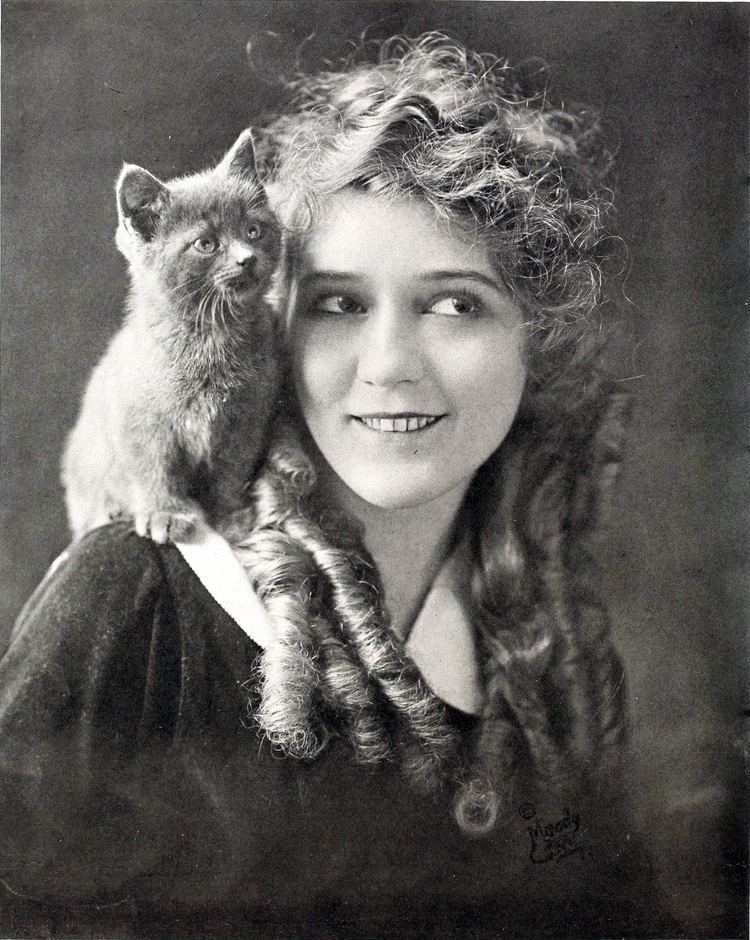 |
Gladys Louise Smith April 8, 1892 (1892-04-08) Toronto, Ontario, Canada Forest Lawn Memorial Park, Glendale, California Pickfair, Beverly Hills, California, U.S. Actress, producer, screenwriter May 29, 1979, Santa Monica, California, United States Charles "Buddy" Rogers (m. 1937–1979), Douglas Fairbanks (m. 1920–1936), Owen Moore (m. 1911–1920) Roxanne Rogers, Ronald Charles Rogers The Poor Little Rich Girl, Coquette, Sparrows, My Best Girl, Tess of the Storm Country
Douglas Fairbanks, Charlie Chaplin, Lillian Gish, D W Griffith, Charles "Buddy" Rogers |
Cerebral hemorrhage |
Gladys Louise Smith (April 8, 1892 – May 29, 1979), known professionally as Mary Pickford, was a prolific Canadian-American film actress and producer. She was a co-founder of both the Pickford-Fairbanks Studio (along with Douglas Fairbanks) and, later, the United Artists film studio (with Fairbanks, Charlie Chaplin and D.W. Griffith), and one of the original 36 founders of the Academy of Motion Picture Arts and Sciences who present the yearly "Oscar" award ceremony.
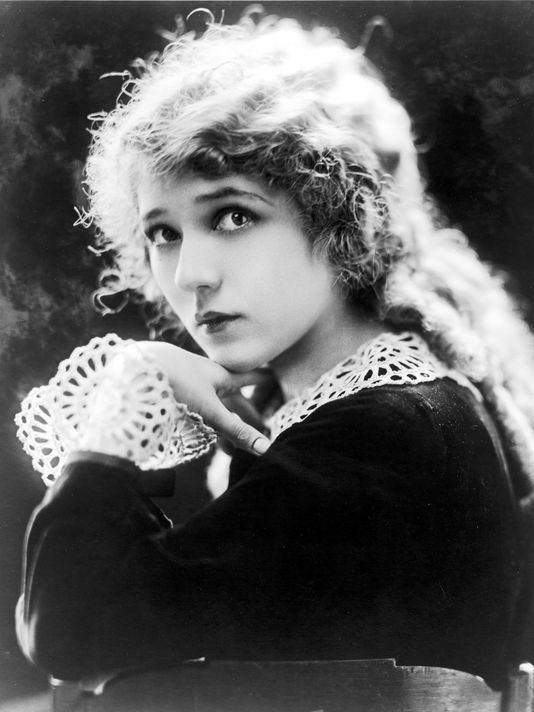
Known in her prime as "America's Sweetheart" and the "girl with the curls", Pickford was one of the Canadian pioneers in early Hollywood and a significant figure in the development of film acting. Pickford was one of the earliest stars to be billed under her name (film performers until that time were usually unbilled), and was one of the most popular actresses of the 1910s and 1920s, earning the nickname "Queen of the Movies".

She was awarded the second ever Academy Award for Best Actress for her first sound-film role in Coquette (1929) and also received an honorary Academy Award in 1976. In consideration of her contributions to American cinema, the American Film Institute ranked Pickford as 24th in its 1999 list of greatest female stars of classic Hollywood Cinema.
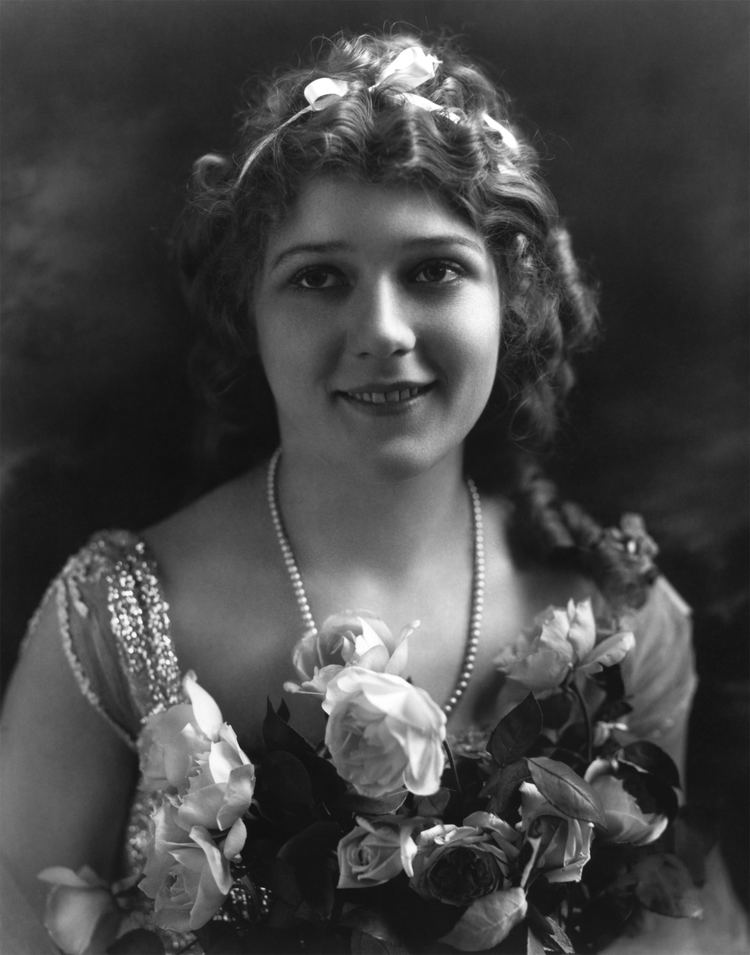
Mary Pickford was born Gladys Louise Smith in 1892 (although she would later claim 1893 or 1894 as her year of birth) at 211 University Avenue,A Toronto, Ontario. Her father, John Charles Smith, was the son of English Methodist immigrants, and worked a variety of odd jobs. Her mother, Charlotte Hennessey, was of Irish Catholic descent and worked for a time as a seamstress. She had two younger siblings, Charlotte, called "Lottie" (born 1893), and John Charles, called "Jack" (born 1896), who also became actors. To please her husband's relatives, Pickford's mother baptized her children as Methodists, the faith of their father. John Charles Smith was an alcoholic; he abandoned the family and died on February 11, 1898, from a fatal blood clot caused by a workplace accident when he was a purser with Niagara Steamship.
When Gladys was age four, her household was under infectious quarantine, a public health measure. Their devoutly Catholic maternal grandmother (Catherine Faeley Hennessey) asked a visiting Roman Catholic priest to baptize the children. Pickford was at this time baptized as Gladys Marie Smith.
Charlotte Smith began taking in boarders after being widowed. One of these was a theatrical stage manager. At his suggestion, Gladys (age 7) was given two small roles, one as a boy and the other as a girl, in a stock company production of The Silver King at Toronto's Princess Theatre. She subsequently acted in many melodramas with Toronto's Valentine Company, finally playing the major child role in their version of The Silver King. She capped her short career in Toronto with the starring role of Little Eva in their production of Uncle Tom's Cabin, adapted from the 1852 novel by United States writer and abolitionist Harriet Beecher Stowe. Stowe's novel was, coincidentally, based on the memoirs of another Ontarian, Josiah Henson.
By the early 1900s, theatre had become a family enterprise. Gladys, her mother and two younger siblings toured the United States by rail, performing in third-rate companies and plays. After six impoverished years, Pickford allowed one more summer to land a leading role on Broadway, planning to quit acting if she failed. In 1906 Gladys, Lottie and Jack Smith supported singer Chauncey Olcott on Broadway in Edmund Burke. Gladys finally landed a supporting role in a 1907 Broadway play, The Warrens of Virginia. The play was written by William C. deMille, whose brother, Cecil, appeared in the cast. David Belasco, the producer of the play, insisted that Gladys Smith assume the stage name Mary Pickford. After completing the Broadway run and touring the play, however, Pickford was again out of work.
On April 19, 1909, the Biograph Company director D. W. Griffith screen-tested her at the company's New York studio for a role in the nickelodeon film, Pippa Passes. The role went to someone else but Griffith was immediately taken with Pickford. She quickly grasped that movie acting was simpler than the stylized stage acting of the day. Most Biograph actors earned $5 a day but, after Pickford's single day in the studio, Griffith agreed to pay her $10 a day against a guarantee of $40 a week.
Pickford, like all actors at Biograph, played both bit parts and leading roles, including mothers, ingenues, charwomen, spitfires, slaves, Native Americans, spurned women, and a prostitute. As Pickford said of her success at Biograph:
I played scrubwomen and secretaries and women of all nationalities ... I decided that if I could get into as many pictures as possible, I'd become known, and there would be a demand for my work.
She appeared in 51 films in 1909 – almost one a week. While at Biograph, she suggested to Florence La Badie to "try pictures", invited her to the studio and later introduced her to D. W. Griffith, who launched La Badie's career.
In January 1910, Pickford traveled with a Biograph crew to Los Angeles. Many other film companies wintered on the West Coast, escaping the weak light and short days that hampered winter shooting in the East. Pickford added to her 1909 Biographs (Sweet and Twenty, They Would Elope, and To Save Her Soul, to name a few) with films made in California.
Actors were not listed in the credits in Griffith's company. Audiences noticed and identified Pickford within weeks of her first film appearance. Exhibitors in turn capitalized on her popularity by advertising on sandwich boards that a film featuring "The Girl with the Golden Curls", "Blondilocks", or "The Biograph Girl" was inside.
Pickford left Biograph in December 1910. The following year, she starred in films at Carl Laemmle's Independent Moving Pictures Company (IMP). IMP was absorbed into Universal Pictures in 1912, along with Majestic. Unhappy with their creative standards, Pickford returned to work with Griffith in 1912. Some of her best performances were in his films, such as Friends, The Mender of Nets, Just Like a Woman, and The Female of the Species. That year Pickford also introduced Dorothy and Lillian Gish (both friends from her days in touring melodrama) to Griffith. Both became major silent stars, in comedy and tragedy, respectively. Pickford made her last Biograph picture, The New York Hat, in late 1912.
She returned to Broadway in the David Belasco production of A Good Little Devil (1912). This was a major turning point in her career. Pickford, who had always hoped to conquer the Broadway stage, discovered how deeply she missed film acting. In 1913, she decided to work exclusively in film. The previous year, Adolph Zukor had formed Famous Players in Famous Plays. It was later known as Famous Players-Lasky and then Paramount Pictures, one of the first American feature film companies.
Pickford left the stage to join Zukor's roster of stars. Zukor believed film's potential lay in recording theatrical players in replicas of their most famous stage roles and productions. Zukor first filmed Pickford in a silent version of A Good Little Devil. The film, produced in 1913, showed the play's Broadway actors reciting every line of dialogue, resulting in a stiff film that Pickford later called "one of the worst [features] I ever made ... it was deadly". Zukor agreed; he held the film back from distribution for a year.
Pickford's work in material written for the camera by that time had attracted a strong following. Comedy-dramas, such as In the Bishop's Carriage (1913), Caprice (1913), and especially Hearts Adrift (1914), made her irresistible to moviegoers. Hearts Adrift was so popular that Pickford asked for the first of her many publicized pay raises based on the profits and reviews. The film marked the first time Pickford’s name was featured above the title on movie marquees. Tess of the Storm Country was released five weeks later. Biographer Kevin Brownlow observed that the film "sent her career into orbit and made her the most popular actress in America, if not the world".
Her appeal was summed up two years later by the February 1916 issue of Photoplay as "luminous tenderness in a steel band of gutter ferocity". Only Charlie Chaplin, who reportedly slightly surpassed Pickford's popularity in 1916, had a similarly spellbinding pull with critics and the audience. Each enjoyed a level of fame far exceeding that of other actors. Throughout the 1910s and 1920s, Pickford was believed to be the most famous woman in the world, or, as a silent-film journalist described her, "the best known woman who has ever lived, the woman who was known to more people and loved by more people than any other woman that has been in all history".
Pickford starred in 52 features throughout her career. On June 24, 1916, Pickford signed a new contract with Zukor that granted her full authority over production of the films in which she starred, and a record-breaking salary of $10,000 a week. In addition, Pickford's compensation was half of a film's profits, with a guarantee of $1,040,000 (US$ 17,330,000 in 2017). Occasionally, she played a child, in films such as The Poor Little Rich Girl (1917), Rebecca of Sunnybrook Farm (1917), Daddy-Long-Legs (1919) and Pollyanna (1920). Pickford's fans were devoted to these "little girl" roles, but they were not typical of her career.
In August 1918, Pickford's contract expired and, when refusing Zukor's terms for a renewal, she was offered $250,000 to leave the motion picture business. She declined, and went to First National Pictures, which agreed to her terms. In 1919, Pickford, along with D.W. Griffith, Charlie Chaplin, and Douglas Fairbanks, formed the independent film production company United Artists. Through United Artists, Pickford continued to produce and perform in her own movies; she could also distribute them as she chose. In 1920, Pickford's film Pollyanna grossed around $1,100,000. The following year, Pickford's film Little Lord Fauntleroy was also a success, and in 1923, Rosita grossed over $1,000,000 as well. During this period, she also made Little Annie Rooney (1925), another film in which Pickford played a child, Sparrows (1926), which blended the Dickensian with newly minted German expressionist style, and My Best Girl (1927), a romantic comedy featuring her future husband Buddy Rogers.
The arrival of sound was her undoing. Pickford underestimated the value of adding sound to movies, claiming that "adding sound to movies would be like putting lipstick on the Venus de Milo".
She played a reckless socialite in Coquette (1929), a role for which her famous ringlets were cut into a 1920s' bob. Pickford had already cut her hair in the wake of her mother's death in 1928. Fans were shocked at the transformation. Pickford's hair had become a symbol of female virtue, and when she cut it, the act made front-page news in The New York Times and other papers. Coquette was a success and won her an Academy Award for Best Actress, although this was highly controversial. The public failed to respond to her in the more sophisticated roles. Like most movie stars of the silent era, Pickford found her career fading as talkies became more popular among audiences.
Her next film, The Taming of The Shrew, made with husband Douglas Fairbanks, was not well received at the box office. Established Hollywood actors were panicked by the impending arrival of the talkies. On March 29, 1928, The Dodge Brothers Hour was broadcast from Pickford's bungalow, featuring Fairbanks, Chaplin, Norma Talmadge, Gloria Swanson, John Barrymore, D.W. Griffith, and Dolores del Rio, among others. They spoke on the radio show to prove that they could meet the challenge of talking movies.
A transition in the roles Pickford selected came when she was in her late 30s, no longer able to play the children, teenage spitfires, and feisty young women so adored by her fans, and was not suited for the glamorous and vampish heroines of early sound. In 1933, she underwent a Technicolor screen test for an animated/live action film version of Alice in Wonderland, but Walt Disney discarded the project when Paramount released its own version of the book. Only one Technicolor still of her screen test still exists. She retired from acting in 1933; her last acting film was released in 1934. She continued to produce for others, however, including Sleep, My Love (1948; with Claudette Colbert) and Love Happy (1949), with the Marx Brothers).
Pickford used her stature in the movie industry to promote a variety of causes. Although her image depicted fragility and innocence, Pickford proved to be a worthy businesswoman who took control of her career in a cutthroat industry.
During World War I, she promoted the sale of Liberty Bonds, making an intensive series of fund-raising speeches that kicked off in Washington, D.C., where she sold bonds alongside Charles Chaplin, Douglas Fairbanks, Theda Bara, and Marie Dressler. Five days later she spoke on Wall Street to an estimated 50,000 people. Though Canadian-born, she was a powerful symbol of Americana, kissing the American flag for cameras and auctioning one of her world-famous curls for $15,000. In a single speech in Chicago she sold an estimated five million dollars' worth of bonds. She was christened the U.S. Navy's official "Little Sister"; the Army named two cannons after her and made her an honorary colonel.
At the end of World War I, Pickford conceived of the Motion Picture Relief Fund, an organization to help financially needy actors. Leftover funds from her work selling Liberty Bonds were put toward its creation, and in 1921, the Motion Picture Relief Fund (MPRF) was officially incorporated, with Joseph Schenck voted its first president and Pickford its vice president. In 1932, Pickford spearheaded the "Payroll Pledge Program", a payroll-deduction plan for studio workers who gave one half of one percent of their earnings to the MPRF. As a result, in 1940, the Fund was able to purchase land and build the Motion Picture Country House and Hospital, in Woodland Hills, California.
An astute businesswoman, Pickford became her own producer within three years of her start in features. According to her Foundation, "she oversaw every aspect of the making of her films, from hiring talent and crew to overseeing the script, the shooting, the editing, to the final release and promotion of each project". She demanded (and received) these powers in 1916, when she was under contract to Zukor's Famous Players In Famous Plays (later Paramount). Zukor acquiesced to her refusal to participate in block-booking, the widespread practice of forcing an exhibitor to show a bad film of the studio's choosing to also be able to show a Pickford film. In 1916, Pickford's films were distributed, singly, through a special distribution unit called Artcraft. The Mary Pickford Corporation was briefly Pickford's motion-picture production company.
In 1919, she increased her power by co-founding United Artists (UA) with Charlie Chaplin, D. W. Griffith, and her soon-to-be husband, Douglas Fairbanks. Before UA's creation, Hollywood studios were vertically integrated, not only producing films but forming chains of theaters. Distributors (also part of the studios) arranged for company productions to be shown in the company's movie venues. Filmmakers relied on the studios for bookings; in return they put up with what many considered creative interference.
United Artists broke from this tradition. It was solely a distribution company, offering independent film producers access to its own screens as well as the rental of temporarily unbooked cinemas owned by other companies. Pickford and Fairbanks produced and shot their films after 1920 at the jointly owned Pickford-Fairbanks studio on Santa Monica Boulevard. The producers who signed with UA were true independents, producing, creating and controlling their work to an unprecedented degree. As a co-founder, as well as the producer and star of her own films, Pickford became the most powerful woman who has ever worked in Hollywood. By 1930, Pickford's acting career had largely faded. After retiring three years later, however, she continued to produce films for United Artists. She and Chaplin remained partners in the company for decades. Chaplin left the company in 1955, and Pickford followed suit in 1956, selling her remaining shares for three million dollars.
Pickford was married three times. She married Owen Moore, an Irish-born silent film actor, on January 7, 1911. It is rumored she became pregnant by Moore in the early 1910s and had a miscarriage or an abortion. Some accounts suggest this resulted in her later inability to have children. The couple had numerous marital problems, notably Moore's alcoholism, insecurity about living in the shadow of Pickford's fame, and bouts of domestic violence. The couple lived together on-and-off for several years.
Pickford became secretly involved in a relationship with Douglas Fairbanks. They toured the U.S. together in 1918 to promote Liberty Bond sales for the World War I effort. Around this time, Pickford also suffered from the flu during the 1918 flu pandemic. Pickford divorced Moore on March 2, 1920, after she agreed to his $100,000 demand for a settlement. She married Fairbanks just days later on March 28, 1920. They went to Europe for their honeymoon; fans in London and in Paris caused riots trying to get to the famous couple. The couple's triumphant return to Hollywood was witnessed by vast crowds who turned out to hail them at railway stations across the United States.
The Mark of Zorro (1920) and a series of other swashbucklers gave the popular Fairbanks a more romantic, heroic image. Pickford continued to epitomize the virtuous but fiery girl next door. Even at private parties, people instinctively stood up when Pickford entered a room; she and her husband were often referred to as "Hollywood royalty". Their international reputations were broad. Foreign heads of state and dignitaries who visited the White House often asked if they could also visit Pickfair, the couple's mansion in Beverly Hills.
Dinners at Pickfair included a number of notable guests. Charlie Chaplin, Fairbanks' best friend, was often present. Other guests included George Bernard Shaw, Albert Einstein, Elinor Glyn, Helen Keller, H. G. Wells, Lord Mountbatten, Fritz Kreisler, Amelia Earhart, F. Scott Fitzgerald, Noël Coward, Max Reinhardt, Baron Nishi, Vladimir Nemirovich-Danchenko, Sir Arthur Conan Doyle, Austen Chamberlain, Sir Harry Lauder, and Meher Baba, among others. The public nature of Pickford's second marriage strained it to the breaking point. Both she and Fairbanks had little time off from producing and acting in their films. They were also constantly on display as America's unofficial ambassadors to the world, leading parades, cutting ribbons, and making speeches. When their film careers both began to flounder at the end of the silent era, Fairbanks' restless nature prompted him to overseas travel (something which Pickford did not enjoy). When Fairbanks' romance with Sylvia, Lady Ashley became public in the early 1930s, he and Pickford separated. They divorced January 10, 1936. Fairbanks' son by his first wife, Douglas Fairbanks Jr., claimed his father and Pickford long regretted their inability to reconcile.
On June 24, 1937, Pickford married her third and last husband, actor and band leader Buddy Rogers. They adopted two children: Roxanne (born 1944, adopted 1944) and Ronald Charles (born 1937, adopted 1943, a.k.a. Ronnie Pickford Rogers). As a PBS American Experience documentary noted, Pickford's relationship with her children was tense. She criticized their physical imperfections, including Ronnie's small stature and Roxanne's crooked teeth. Both children later said their mother was too self-absorbed to provide real maternal love. In 2003, Ronnie recalled that "Things didn't work out that much, you know. But I'll never forget her. I think that she was a good woman."
After retiring from the screen, Pickford became an alcoholic, as her father had been. Her mother Charlotte died of breast cancer in March 1928. Her siblings, Lottie and Jack, both died of alcohol-related causes. These deaths, her divorce from Fairbanks, and the end of silent films left Pickford deeply depressed. Her relationship with her children, Roxanne and Ronald, was turbulent at best. Pickford withdrew and gradually became a recluse, remaining almost entirely at Pickfair and allowing visits only from Lillian Gish, her stepson Douglas Fairbanks, Jr., and few other people. She appeared in court in 1959, in a matter pertaining to her co-ownership of North Carolina TV station WSJS-TV. The court date coincided with the date of her 67th birthday; under oath, when asked to give her age, Pickford replied: "I'm 21, going on 20."
In the mid-1960s, Pickford often received visitors only by telephone, speaking to them from her bedroom. Buddy Rogers often gave guests tours of Pickfair, including views of a genuine western bar Pickford had bought for Douglas Fairbanks, and a portrait of Pickford in the drawing room. A print of this image now hangs in the Library of Congress. In addition to her Oscar as best actress for Coquette (1929), Mary Pickford received an Academy Honorary Award in 1976 for lifetime achievement. The Academy sent a TV crew to her house to record her short statement of thanks – offering the public a very rare glimpse into Pickfair Manor.
Pickford had become an American citizen upon her marriage to Fairbanks in 1920. Toward the end of her life, Pickford made arrangements with the Department of Citizenship to regain her Canadian citizenship because she wished to "die as a Canadian". Her request was approved and she became a dual Canadian-American citizen.
On May 29, 1979, Pickford died at a Santa Monica, California, hospital of complications from a cerebral hemorrhage she had suffered the week before. She was interred in the Garden of Memory of the Forest Lawn Memorial Park cemetery in Glendale, California.
- Pickford was awarded a star in the category of motion pictures on the Hollywood Walk of Fame at 6280 Hollywood Blvd.
- Her handprints and footprints are displayed at Grauman's Chinese Theatre in Hollywood, California.
- Pickford Film Center in Bellingham, Washington is a three-screen, two-venue art house cinema dedicated to showing the best in independent, foreign and documentary film and world class performing arts in high definition.
- The Pickford Center for Motion Picture Study at 1313 Vine Street in Hollywood, constructed by the Academy of Motion Picture Arts and Sciences, opened in 1948 as a radio and television studio facility.
- The Mary Pickford Theater at the James Madison Memorial Building of the Library of Congress is named in her honor.
- The Mary Pickford Auditorium at Claremont McKenna College is named in her honor.
- A first-run movie theatre in Cathedral City, California, is called The Mary Pickford Theatre. The theater is a grand one with several screens and is built in the shape of a Spanish Cathedral, complete with bell tower and three-story lobby. The lobby contains a historic display with original artifacts belonging to Pickford and Buddy Rogers, her last husband. Among them are a rare and spectacular beaded gown she wore in the film Dorothy Vernon of Haddon Hall (1924) designed by Mitchell Leisen, her special Oscar, and a jewelry box.
- The 1980 stage musical The Biograph Girl, about the silent film era, features the character of Pickford.
- In 2007, the Academy of Motion Picture Arts and Sciences sued the estate of the deceased Buddy Rogers' second wife, Beverly Rogers, in order to stop the public sale of one of Pickford's Oscars.
- A bust and historical plaque marks her birthplace in Toronto, now the site of the Hospital for Sick Children. The plaque was unveiled by her husband Buddy Rogers in 1973. The bust by artist Eino Gira was added ten years later. Her date of birth on the plaque is April 8, 1893. This can only be assumed to be because her date of birth was never registered – and throughout her life, beginning as a child, she led many people to believe that she was a year younger so she would appear to be more of an acting prodigy and continue to be cast in younger roles, which were more plentiful in the theatre.
- The family home had been demolished in 1943, and many of the bricks delivered to Pickford in California. Proceeds from the sale of the property were donated by Pickford to build a bungalow in East York, Ontario, then a Toronto suburb. The bungalow was the first prize in a lottery in Toronto to benefit war charities, and Pickford unveiled the home on May 26, 1943.
- In 1993, a Golden Palm Star on the Palm Springs Walk of Stars was dedicated to her.
- Pickford received a posthumous star on Canada's Walk of Fame in Toronto in 1999.
- Pickford was featured on a Canadian postage stamp in 2006.
- From January 2011 until July 2011, the Toronto International Film Festival exhibited a collection of Mary Pickford memorabilia in the Canadian Film Gallery of the TIFF Bell LightBox building.
- In February 2011, the Spadina Museum, dedicated to the 1920s and 1930s era in Toronto, staged performances of Sweetheart: The Mary Pickford Story, a one-woman musical based on the life and career of Pickford.
- In 2013, a copy of an early Pickford film that was thought to be lost (Their First Misunderstanding) was found by Peter Massie, a carpenter tearing down an abandoned barn in New Hampshire. It was donated to Keene State College and is currently undergoing restoration by the Library of Congress for exhibition. The film is notable as being the first in which Pickford was credited by name.
- On August 29, 2014, while presenting Behind The Scenes (1914) at Cinecon, film historian Jeffrey Vance announced he is working with the Mary Pickford Foundation on what will be her official biography.
- The Google Doodle of April 8, 2017 commemorates Mary Pickford's 125th birthday.
Mary Pickford Wikipedia
نوشته شده در تاريخ پنجشنبه 13 شهريور 1399
توسط elmiraluong
Edwin Porter
|
|
Pioneer |
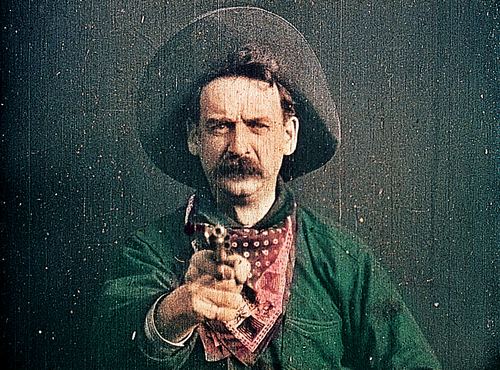 |
April 21, 1870 (1870-04-21) Connellsville, Pennsylvania Film director, film producer April 30, 1941, New York City, New York, United States Caroline Ridinger (m. 1893–1941) Thomas Richard Porter, Mary Jane Porter The Great Train Robbery, Life of an American Fireman, Dream of a Rarebit Fiend, Rescued from an Eagle's N, Jack and the Beanstalk
D W Griffith, Broncho Billy Anderson, J Searle Dawley, Mary Pickford, Adolph Zukor |
Edwin Stanton Porter (April 21, 1870 – April 30, 1941) was an American film pioneer, most famous as a producer, director, studio manager and cinematographer with the Edison Manufacturing Company and the Famous Players Film Company. Of over 250 films created by Porter, his most important include Jack and the Beanstalk (1902), Life of an American Fireman (1903), The Great Train Robbery (1903), The Kleptomaniac (1905), Life of a Cowboy (1906), Rescued from an Eagle's Nest (1908), and The Prisoner of Zenda (1913) .
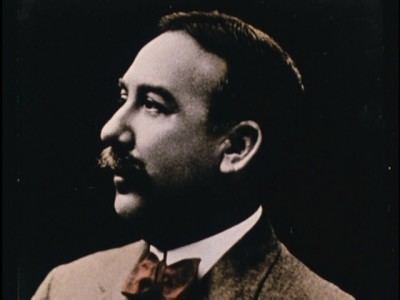

Porter was born and raised in Connellsville, Pennsylvania to Thomas Richard Porter, a merchant, and Mary (Clark) Porter; he was the fourth of seven children with four brothers (Charles W., Frank, John and Everett Melbourne) and two sisters (Mary and Ada). Named Edward at birth, he later changed his name to Edwin Stanton, after Edwin Stanton, the Democratic politician from Ohio who had served as Abraham Lincoln's Secretary of War. After attending public schools in Connellsville, Porter worked, among other odd jobs, as an exhibition skater, a sign painter, and a telegraph operator. He developed an interest in electricity at a young age, and shared a patent at age 21 for a lamp regulator. Eventually becoming a merchant tailor, Porter was battered by the Panic of 1893. He filed for bankruptcy on June 15 and enlisted in the United States Navy four days later on June 19.

He was employed initially in the electrical department of William Cramp & Sons, a Philadelphia ship and engine building company. During his three years' service he showed aptitude as an inventor of electrical devices to improve communications.

Porter entered motion picture work in 1896, the first year movies were commercially projected on large screens in the United States. He was briefly employed in New York City by Raff & Gammon, agents for the films and viewing equipment made by Thomas Edison, and then left to become a touring projectionist with a competing machine, Kuhn & Webster's Projectorscope. He traveled through the West Indies and South America, showing films at fairgrounds and in open fields. He later made a second tour through Canada and the United States.
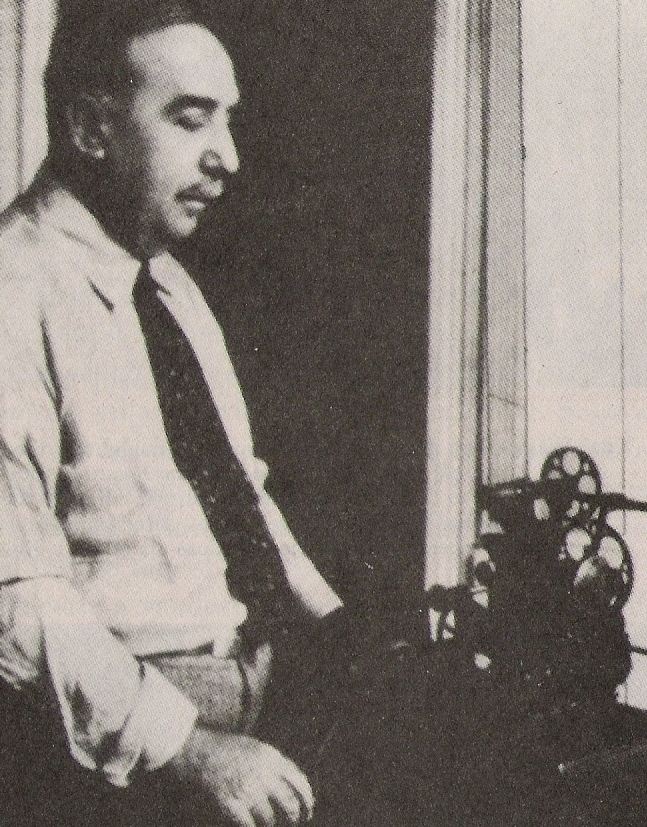
Returning to New York City in early 1898, Porter found work at the Eden Musée, a Manhattan wax museum and amusement hall which had become a center for motion picture exhibition and production and licensee of the Edison Manufacturing Company. While at Eden Musée, Porter worked assembling programs of Edison films, most particularly exhibitions of films of the Spanish–American War, Edison productions which helped stir an outbreak of patriotic fever in New York City. As an exhibitor, Porter had tremendous creative control over these programs, presenting a slate of films accompanied by a selection of music and live narration.
In 1899 Porter joined the Edison Manufacturing Company. Soon afterward he took charge of motion picture production at Edison's New York studios, operating the camera, directing the actors, and assembling the final print. He collaborated with several other filmmakers, including George S. Fleming. During the next decade Porter became the most influential filmmaker in the United States. From his experience as a touring projectionist, Porter knew what pleased crowds, and he began by making trick films and comedies for Edison. One of his early films was Terrible Teddy, the Grizzly King, a satire made in February 1901 about the then Vice President-elect, Theodore Roosevelt. Like all early filmmakers, he took ideas from others, but rather than simply copying films he tried to improve on what he borrowed. In his Jack and the Beanstalk (1902) and Life of an American Fireman (1903) he followed earlier films by France's Georges Méliès and members of England's Brighton School, such as James Williamson. Instead of using abrupt splices or cuts between shots, however, Porter created dissolves, gradual transitions from one image to another. In Life of an American Fireman particularly, the technique helped audiences follow complex outdoor movement.
Porter's next film, The Great Train Robbery (1903) took the archetypal American Western story, already familiar to audiences from dime novels and stage melodrama, and made it an entirely new visual experience. The one-reel film, with a running time of twelve minutes, was assembled in twenty separate shots, along with a startling close-up of a bandit firing at the camera. It used as many as ten different indoor and outdoor locations and was groundbreaking in its use of "cross-cutting" in editing to show simultaneous action in different places. No earlier film had created such swift movement or variety of scene. The Great Train Robbery was enormously popular. For several years it toured throughout the United States, and in 1905 it was the premier attraction at the first nickelodeon. Its success firmly established motion pictures as commercial entertainment in the United States.
After The Great Train Robbery Porter continued to try out new techniques. He presented two parallel stories in The Kleptomaniac (1905), a film of social commentary like his technically more conventional film of 1904, The Ex-Convict. In The Seven Ages (1905) he used side lighting, close-ups, and changed shots within a scene, one of the earliest examples of a filmmaker departing from the theatrical analogy of a single shot for each scene. He also directed trick films such as Dream of a Rarebit Fiend (1906), based on the comic strip by Winsor McCay. Between 1903 and 1905 he successfully demonstrated most of the techniques that were to become the basic modes of visual communication through film. For instance, he helped to develop the modern concept of continuity editing, and is often credited with discovering that the basic unit of structure in film was the "shot" rather than the scene (the basic unit on the stage), paving the way for D. W. Griffith's advances in editing and screen storytelling. Yet he seemed to regard them only as separate experiments and never brought them together in a unified filmmaking style. Porter directed future filmmaker Griffith in Rescued from an Eagle's Nest (1908).
In 1909 after tiring of the industrial system set up to feed the booming nickelodeon business, Porter left Edison and founded a company to manufacture Simplex motion picture projectors. In 1910 he founded Defender Film Company, which folded after one year. In 1911 he joined with others in organizing the Rex Motion Picture Company. In 1912 he sold out and accepted an offer from Adolph Zukor to become chief director of the new Famous Players Film Company, the first American company that regularly produced feature-length films. He directed stage actor James K. Hackett in their first feature film, The Prisoner of Zenda (1913). He also directed Mary Pickford in her first feature film, A Good Little Devil (1913), also directing Pauline Frederick and John Barrymore.
But his directorial skills had not kept pace with rapid changes in motion picture art, although his technical skills were piqued by 3D. Porter's last film premiered on June 10, 1915, Niagara Falls, the first anaglyph 3D movie. In 1916 he left Famous Players during a reorganization.
From 1917 to 1925 Porter served as president of the Precision Machine Company, manufacturers of the Simplex projectors. After his retirement in 1925 he continued to work on his own as an inventor and designer, securing several patents for still cameras and projector devices. During the 1930s he was employed by an appliance corporation.
Aged 71, he died in 1941 at the Hotel Taft in New York City and was buried in Husband Cemetery, Somerset, Pennsylvania. He was survived by his wife, Caroline Ridinger, whom he had married on June 5, 1893; they had no children.
Porter remains an enigmatic figure in motion picture history. Though his significance as director of The Great Train Robbery and other innovative early films is undeniable, he rarely repeated an innovation after he had used it successfully, never developed a consistent directorial style, and in later years never protested when others rediscovered his techniques and claimed them as their own. He was a modest, quiet, cautious man who felt uncomfortable working with the famous stars he directed starting in 1912. Zukor said of Porter that he was more an artistic mechanic than a dramatic artist, a man who liked to deal with machines better than with people.
نوشته شده در تاريخ چهارشنبه 12 شهريور 1399
توسط elmiraluong
Actor Leading man
|
|
Tom Santschi Paul Santschi |
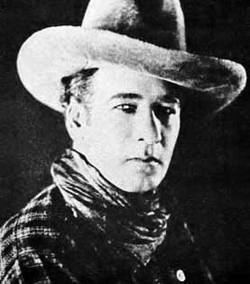 |
Paul William Santschi October 24, 1880 (1880-10-24) Crystal City, Missouri, U.S. April 9, 1931, Los Angeles, California, United States Lola May (m. 1914–1931), Marion B (m. ?–1914) Florence Santschi, Minnie Santschi 3 Bad Men, Ten Nights in a Barroom, In Old Arizona, The Phantom of the West, Paths to Paradise
Francis Boggs, William Nicholas Selig, Ray Enright, William S Hart, John Ford |
Paul William "Tom" Santschi (October 24, 1880, Crystal City, Missouri - April 9, 1931, Los Angeles, California) was an American leading man and character actor of the silent film era.
Santschi acted in over 245 films during the period 1907-1931, and directed 28 during 1914-1916. He wrote one screen play in 1914. A 1915 two-reeler In the King's Service, in which he starred with Marion Warner, surfaced at a yard sale in Maine, and was shown along with The Spoilers (1914) at a Northeast Historic Film Festival at Bucksport, Maine in 2002.
Santschi died in his sleep from a heart attack at the age of 52. He was interred at Hollywood Forever Cemetery. His gravestone gives his year of birth as 1880.
- Ben's Kid (1909)
- Pride of the Range (1910)
- Across the Plains (1910)
- Davy Crockett (1910)
- The New Superintendent (1911)
- Alas! Poor Yorick! (1913)
- The Spoilers (1914)
- The Crisis (1916)
- The Hell Cat (1918)
- Shadows (1919)
- Eve in Exile (1919)
- Two Kinds of Women (1922)
- Is Divorce A Failure? (1923)
- The Plunderer (1924)
- Paths to Paradise (1925)
- Beyond the Border (1925)
- Jim, the Conqueror (1926)
- The Third Degree (1926)
- 3 Bad Men (1926)
- The Desert's Toll (1926)
- Her Honor, the Governor (1926)
- Eyes of the Totem (1927)
- When a Man Loves (1927)
- Old San Francisco (1927)
- Tracked by the Police (1927)
- Vultures of the Sea (1928)
- The Utah Kid (1930)
- King of the Wild (1931)
- The Phantom of the West (1931)
Tom Santschi Wikipedia
نوشته شده در تاريخ چهارشنبه 12 شهريور 1399
توسط elmiraluong
Vitagraph Studios, also known as the Vitagraph Company of America, was a United States motion picture studio. It was founded by J. Stuart Blackton and Albert E. Smith in 1897 in Brooklyn, New York, as the American Vitagraph Company. By 1907 it was the most prolific American film production company, producing many famous silent films. It was bought by Warner Bros. in 1925.
In 1896, English émigré Blackton was moonlighting as a reporter/artist for the New York Evening World when he was sent to interview Thomas Edison about his new film projector. The inventor talked the entrepreneurial reporter into buying a set of films and a projector. A year later, Blackton and business partner Smith founded the American Vitagraph Company in direct competition with Edison. A third partner, distributor William "Pop" Rock, joined in 1899. The company's first studio was located on the rooftop of a building on Nassau Street in Manhattan. Operations were later moved to the Midwood neighborhood of Brooklyn, New York.
The company's first claim to fame came from newsreels: Vitagraph cameramen were on the scene to film events from the Spanish–American War of 1898. These shorts were among the first works of motion-picture propaganda, and a few had that most characteristic fault of propaganda, studio re-enactments being passed off as footage of actual events (The Battle of Santiago Bay was filmed in an improvised bathtub, with the "smoke of battle" provided by Mrs. Blackton's cigar). In 1897 Vitagraph produced The Humpty Dumpty Circus, which was the first film to use the stop-motion technique.
Vitagraph was not the only company seeking to make money from Edison's motion picture inventions, and Edison's lawyers were very busy in the 1890s and 1900s filing patents and suing competitors for patent infringement. Blackton did his best to avoid lawsuits by buying a special license from Edison in 1907 and by agreeing to sell many of his most popular films to Edison for distribution.
The American Vitagraph Company made many contributions to the history of movie-making. In 1903 the director Joseph Delmont started his career by producing westerns; he later became famous by using "wild carnivores" in his movies—a sensation for that time.
In 1909 it was one of the original ten production companies included in Edison's attempt to corner movie-making, the Motion Picture Patents Company. Major stars included Florence Turner (the Vitagraph Girl, one of the world's first movie stars), Maurice Costello (the first of the matinee idols), Harry T. Morey, Jean (the Vitagraph Dog and the first animal star of the Silent Era) and such future stars as Helen Hayes, Viola Dana, Dolores Costello, Norma Talmadge, Constance Talmadge, and Moe Howard. Larry Trimble was a noted director of films for Turner and Jean (he was also the dog's owner).
The first "Les Miserables" film adaptation, a short silent historical drama starring Maurice Costello as Jean Valjean and William V. Ranous as Javert, is distributed by the Vitagraph Company of America. The film consists of four reels, each released over the course of three months beginning on 4 September to 27 November 1909.
John Bunny made films for Vitagraph in the 1910s most of them co-starring Flora Finch, and was the most popular film comedian in the world in the years before Chaplin; his death in 1915 was observed worldwide. In 1910 a number of movie houses showed the five parts of the Vitagraph serial The Life of Moses consecutively (a total length of almost 90 minutes), making it one of many to claim the title of "the first feature film." A long series of Shakespeare adaptations were the first done of the Bard's works in the U.S.
In 1911, Vitagraph produced the first aviation film, The Military Air-Scout, directed by William J. Humphrey, with future General of the Air Force Hap Arnold as the stunt flier.
The 1915 feature The Battle Cry of Peace (written and directed by Blackton) was one of the great propaganda films of World War I. Ironically, after America declared war, the film was modified for re-release because it was seen as not being sufficiently pro-war, thus it also earns a place in the history of censorship.
World War I spelled the beginning of the end for Vitagraph. With the loss of foreign distributors and the rise of the monopolistic Studio system, Vitagraph was slowly but surely squeezed out of the business. On January 28, 1925, it left the Motion Picture Producers and Distributors of America (later MPAA); the owner, Albert E. Smith, explained:
Vitagraph withdraws because it does not believe that justice to the distributors and to the public and to those independent producers who are not theater owning exhibitors, can be obtained through the labors of the Motion Picture Producers and Distributors of America.
On April 22, 1925, Smith finally gave up and sold the company to Warner Bros. for a comfortable profit. The Flatbush studio (renamed Vitaphone) was later used as an independent unit within Warner Bros., specializing in early sound shorts. Among those performers who made early film appearances in Vitaphone shorts filmed at the Flatbush studios include Al Jolson, Humphrey Bogart, Jimmy Stewart, Bob Hope, Spencer Tracy, Jack Benny, Sammy Davis Jr., Sylvia Sidney, Pat O'Brien, Ruth Etting, Mischa Elman, Frances Langford, Betty Hutton, Burns and Allen, Giovanni Martinelli, Xavier Cugat, Bill Robinson, Lillian Roth, Joan Blondell, Ethel Merman, Abbe Lane, Eleanor Powell, Helen Morgan, The Nicholas Brothers, Milton Berle, Leo Carillo, Harriet Nelson, Brian Donlevy, Jane Froman, Jack Haley, Phil Silvers, Judy Canova, Nina Mae McKinney, Marjorie Main, Rose Marie, Joe Penner, Ethel Waters, June Allyson, Shemp Howard, Lanny Ross, Lionel Stander, Edgar Bergen, and Cyd Charisse among others.
The Vitagraph name was briefly resurrected from 1960 to 1969 at the end of Warner Bros.' Looney Tunes cartoons (starting with 1960's Hopalong Casualty), with the end titles reading "A Warner Bros. Cartoon / A Vitagraph Release". Merrie Melodies of the same period (starting with that same year's From Hare to Heir) had the same end title, with the last line being "A Vitaphone Release." (From August 1968 to the end of the original series in 1969, Merrie Melodies had the last line reading "A Vitagraph Release" while Looney Tunes of that same one-year period read "A Vitaphone Release.") This may have been done to protect the studio's ownership of the two largely defunct trade names.
Founder Albert E. Smith, in collaboration with coauthor Phil A. Koury, wrote an autobiography, "Two Reels and a Crank" in 1952 It includes a very detailed history of Vitagraph and a lengthy list of people who had been in the Vitagraph Family which included Billy Anderson, Florence Lawrence, Florence Turner, Richard Barthelmess, John Bunny, Francis X. Bushman, Dolores Costello, Maurice Costello, Sidney Drew, Dustin Farnum, Flora Finch, Hoot Gibson, Corinne Griffith, Alan Hale, Oliver Hardy, Mildred Harris, Hedda Hopper, Rex Ingram, Alice Joyce, Boris Karloff, J. Warren Kerrigan, Rod La Rocque, E.K. Lincoln, Bessie Love, May McAvoy, Victor McLaglen, Adolphe Menjou, Antonio Moreno, Conrad Nagel, Mabel Normand, Lottie Pickford, Billy Quirk, Wallace Reid, May Robson, Wesley Ruggles, George Stevens, Anita Stewart, Constance Talmadge, Natalie Talmadge, Norma Talmadge, William Desmond Taylor, Alice Terry, George Terwilliger, Florence Vidor, Earle Williams, Clara Kimball Young, and hundreds of other people are listed. In the text of the book he also refers to hiring a 17-year-old Rudolph Valentino into the set-decorating department, but within a week he was being used by directors as an extra in foreign parts, mainly as a Russian Cossack..
Vitagraph's first office was in Lower Manhattan, on the corner of Nassau St. and Beekman St., where they shot their first film, The Burglar on the Roof, in 1897. They subsequently opened the first modern film studio in the U.S., built in 1906, at the corner of East 14th St. and Locust Ave. (near Avenue M) in the Midwood section of Brooklyn. They created a second film studio in Santa Monica, California, in 1911, and a year later moved to a 29-acre sheep ranch at 4151 Prospect Street in the Los Feliz district of Los Angeles, a studio subsequently owned by ABC and currently Disney Studios.
The Big Bad Voodoo Daddy "Mr. Pinstripe" music video is about the making of a Vitagraph film.
Vitagraph Studios Wikipedia
نوشته شده در تاريخ چهارشنبه 12 شهريور 1399
توسط elmiraluong
J. Blackton
|
|
Film producer |
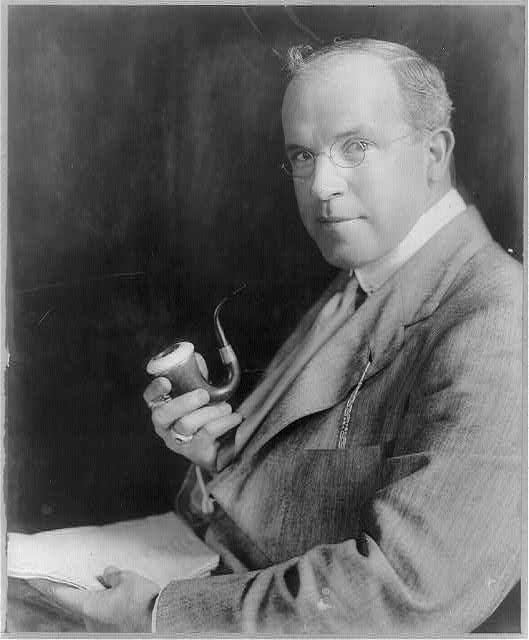 |
January 5, 1875 (1875-01-05) Sheffield, England August 13, 1941, Hollywood, California, United States Evangeline Wood (m. 1936–1941) Violet Virginia Blackton, Charles Stuart Blackton, Gloria Bowers, Marian Blackton Trimble, J. Stuart Blackton Jr. Henry Blacktin, Jessie Stuart Humorous Phases of Funny Fa, The Enchanted Drawing, Winsor McCay - the Famous, Princess Nicotine, The Battle Cry of Peace
Albert E Smith, Winsor McCay, Charles Kent, Maurice Costello, Florence Lawrence |
James Stuart Blackton (January 5, 1875 – August 13, 1941), usually known as J. Stuart Blackton, was an Anglo-American film producer and director of the silent era. One of the pioneers of motion pictures, he founded Vitagraph Studios in 1897. He was one of the first filmmakers to use the techniques of stop-motion and drawn animation, is considered the father of American animation, and was the first to bring many classic plays and books to the screen. Blackton was also the commodore of the Atlantic Yacht Club.
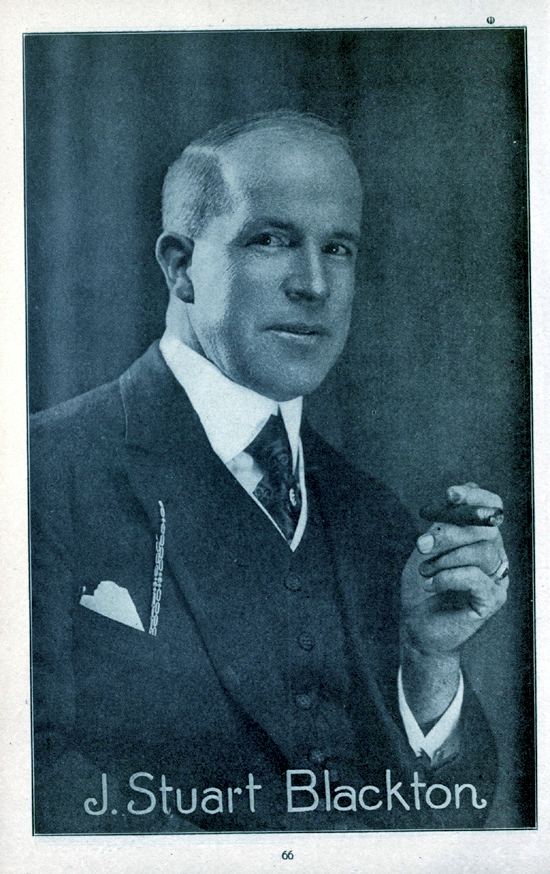

James Stuart Blackton was born on January 5, 1875, in Sheffield, Yorkshire, England, to Henry Blacktin and Jessie Stuart. He emigrated with his family to the United States in 1885 and changed the family name to Blackton.
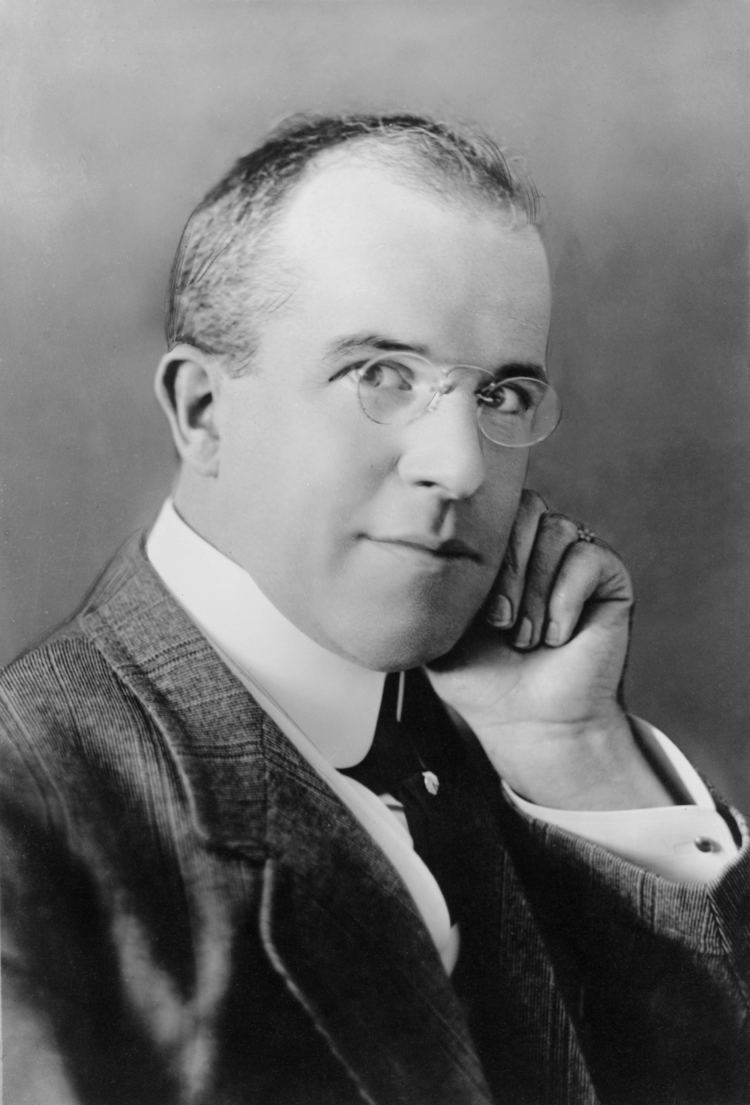
He worked as a reporter and illustrator for the New York Evening World, and performed regularly on stage with conjuror Albert Smith. In 1896, Thomas Edison publicly demonstrated the Vitascope, one of the first film projectors, and Blackton was sent to interview Edison and provide drawings of how his films were made. Eager for good publicity, Edison took Blackton to his Black Maria, the special cabin he used to do his filming, and created a film on the spot of Blackton doing a lightning portrait of Edison. The inventor did such a good job selling the art of moviemaking that he talked Blackton and partner Smith into buying a print of the new film, as well as prints of nine other films, plus a Vitascope to show them to paying audiences.

The new act was a great success, despite the various things Blackton and Smith were doing between the Edison films. The next step was to start making films of their own. In this way the American Vitagraph Company was born.
During this period, J. Stuart Blackton not only ran the Vitagraph studio, but also produced, directed, wrote, and even starred in his films, playing the comic strip character "Happy Hooligan" in a series of shorts. Since profits were constantly increasing, Blackton felt that he could try any idea that sprang to his head. In a series of films, Blackton developed the concepts of animation.
The first of his animation films is The Enchanted Drawing, with a copyright date of 1900 but probably made at least a year earlier. In this film, Blackton sketches a face, cigars, and a bottle of wine. He appears to remove the last drawings as real objects, and the face appears to react. The "animation" here is of the stop-action variety, where the camera is stopped, a single change is made, and the camera is then started again. The process was first used by Georges Méliès and others.
The transition to stop-motion was apparently accidental, and occurred around 1905. According to Albert Smith, one day the crew was filming a complex series of stop-action effects on the roof while steam from the building's generator was billowing in the background. On playing the film back, Smith noticed the odd effect created by the steam puffs scooting across the screen and decided to reproduce it deliberately. A few films (some of which are lost) use this effect to represent invisible ghosts, or to have toys come to life. In 1906, Blackton directed Humorous Phases of Funny Faces, which uses stop-motion as well as stick puppetry to produce a series of effects. After Blackton's hand draws two faces on a chalkboard, they appear to come to life and engage in antics. Most of the film uses live action effects instead of animation, but nevertheless this film had a huge effect in stimulating the creation of animated films in America. In Europe, the same effect was had from "The Haunted Hotel" (1907), another Vitagraph short directed by Blackton. The "Haunted Hotel" was mostly live-action, about a tourist spending the night in an inn run by invisible spirits. Most of the effects are also live-action (wires and such), but one scene of a dinner making itself was done using stop-motion, and was presented in a tight close-up that allowed budding animators to study it for technique.
Blackton made another animated film that has survived, 1907's "Lightning Sketches", but it has nothing to add to the art of animation. In 1908 he made the first American film version of Romeo and Juliet, filmed in New York City's Central Park and The Thieving Hand, filmed in Flatbush, Brooklyn. By 1909, Blackton was too absorbed in the business of running Vitagraph to have time for filmmaking. He came to regard his animation experiments in particular as being rather juvenile (they receive no mention in his unpublished autobiography).
Stuart Blackton believed that the US should join the Allies involved in World War I overseas and in 1915 produced The Battle Cry of Peace. Former President Theodore Roosevelt was one of the film's staunchest supporters and convinced Gen. Leonard Wood to loan Blackton an entire regiment of marines to use as extras. Upon its release, the film generated a controversy rivaling that of Birth of a Nation because it was considered as militaristic propaganda.
Blackton left Vitagraph to go independent in 1917, but returned in 1923 as junior partner to Albert Smith. In 1925, Smith sold the company to Warner Brothers for a comfortable profit.
Blackton did quite well with his share until the Stock Market Crash of 1929, which destroyed his savings. He spent his last years on the road, showing his old films and lecturing about the days of silent movies. His daughter Violet Virginia Blackton (1910–1965) married writer Cornell Woolrich in 1930 but their marriage was annulled in 1933.
He married Evangeline Russell de Rippeteau in 1936.
Blackton died August 13, 1941, a few days after he was hit by a car while crossing the street with his son. At the time of his death he was working for Hal Roach on experiments to improve color process backgrounds. Blackton was cremated and interred at Forest Lawn Memorial Park Cemetery in Glendale, California.
J. Stuart Blackton Wikipedia
نوشته شده در تاريخ چهارشنبه 12 شهريور 1399
توسط elmiraluong
Albert Smith Film director
|
|
Academy Honorary Award |
 |
August 1, 1958, Hollywood, California, United States Jean Paige (m. 1920–1958), Hazel Neason (m. 1913–1920), May Smith (m. ?–1912) David Smith, W. Steve Smith Jr. Captain Blood, Tearing Down the Spanish, Frauds and Frenzies, The Sawmill, The Burglar on the Roof
J Stuart Blackton, Jean Paige, Thomas Armat, Larry Semon, George Kirke Spoor |
Albert Edward Smith (4 June 1875 – 1 August 1958) was an English stage magician, film director and producer, and a naturalized American. He founded Vitagraph Studios with his business partner James Stuart Blackton in 1897.
Smith was born 4 June 1874 or 1875 in Faversham, Kent. His family immigrated to the United States when he was still a child. He eventually teamed up with fellow English emigrants J. Stuart Blackton and Ronald Reader to form a touring performance, presenting magic, magic lanterns, drawings, ventriloquism, and recitations.
In 1896, they acquired an Edison Vitascope, and in 1897 Blackton and Smith began producing silent films under the names 'Edison Vitagraph', then the 'Commercial Advertising Bureau'. As 'American Vitagraph', Blackton and Smith came to prominence in 1898 with such films as The Battle of Manilla Bay and Tearing Down the Spanish Flag (both propaganda shorts inspired by the Spanish–American War), as well as the short film animation The Humpty Dumpty Circus. In addition to director and producer, he was also an actor and screenwriter in his films. Smith married three times, including the actress Lucille Smith, who used the screen name Jean Paige.
In 1952 Albert E. Smith, along with coauthor Phil A. Koury, published Smith's autobiography, Two Reels and a Crank. The book gives a detailed account of the founding and evolution of Vitagraph Studios, and Smith's many adventures turning the crank on Vitagraph films which included filming the assassination of President William McKinley, covering the Boer War in South Africa, and filming Teddy Roosevelt at San Juan Hill in Cuba. He gives an insider's account of the Motion Picture Patents Company and the General Film Company, both monopolies accused by independent filmmakers of breaking antitrust laws. He describes the expansion of Vitagraph to foreign sales and the building of a laboratory in Paris, France that quickly expanded to processing four times the amount of film as the US laboratory, up until World War I when their foreign sales all but vanished. 1n 1910, Vitagraph sent a permanent company to California including actors, directors, writers crafts people, and Albert's older brother, W. S. Smith, as business manager. The company shot at locations across the country including Ausable Chasm in upper New York State, and they made the first movie ever shot in the Grand Canyon. In February, 1911 they arrived in Los Angeles and took up housing in a Santa Monica mansion. The frequently overcast skies by the beach quickly led to the establishment of Vitagraph's lot in East Hollywood. The lot is still active in production, and owned by the Walt Disney Company, at the intersection of Prospect and Talmadge Avenues under the name The Prospect Studios. The last chapter includes a long list of people who worked for Vitagraph. March, 1948, Smith received an Oscar Award at the 20th annual awards ceremony. It was presented by Jean Hersholt. The inscription on the base of the Oscar reads: "One of the small group of pioneers whose belief in a new medium, and whose contributions to its development, blazed the trail along which the motion picture has progressed, in their lifetime, from obscurity to world-wide acclaim."
After early legal issues with the Edison company, Vitagraph Studios was very successful in the early silent era, moving to the Flatbush area of Brooklyn in 1905. However, it became financially unstable during World War I and in 1925, Smith sold the company to Warner Brothers and retired.
He died on 1 August 1958 in Los Angeles, California.
Albert E. Smith (producer) Wikipedia
نوشته شده در تاريخ چهارشنبه 12 شهريور 1399
توسط elmiraluong
Actor Film director George Hobart Bosworth Film actor
|
|
Hobart Bosworth 1908–1942 |
 |
August 11, 1867 (1867-08-11) Marietta, Ohio, U.S. December 30, 1943, Glendale, California, United States Cecile Kibre (m. 1920–1943), Adele Farrington (m. ?–1919) The Big Parade, The Sea Lion, The Wonderful Wizard of, Joan the Woman, A Woman of Affairs
Francis Boggs, Myrtle Stedman, William Nicholas Selig, Elmer Clifton, Owen Moore |
Hobart Van Zandt Bosworth (August 11, 1867 – December 30, 1943) was an American film actor, director, writer, and producer.
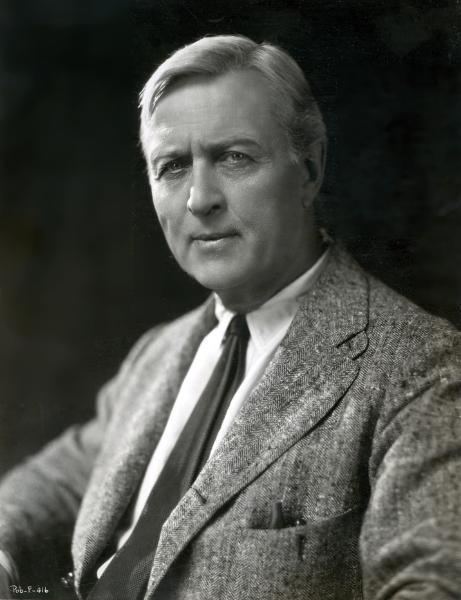
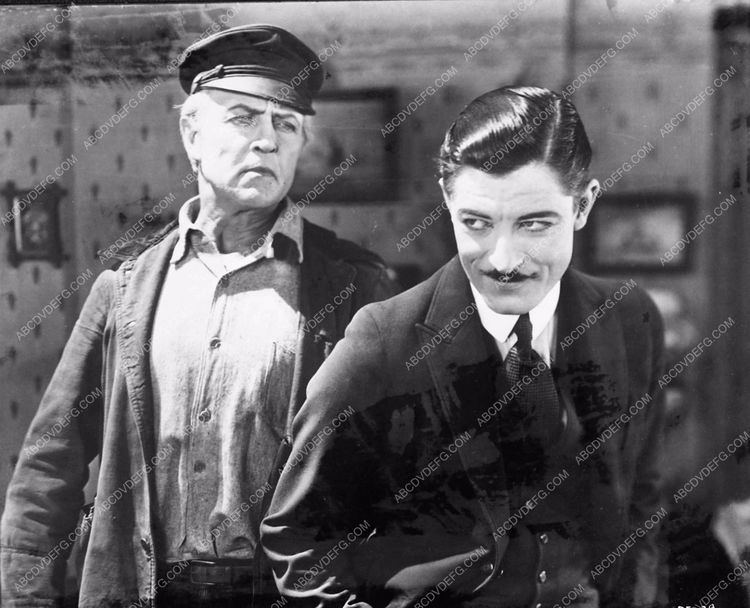
He was born on August 11, 1867, in Marietta, Ohio. He was a descendant of Miles Standish and John and Priscilla Alden on his father's side and of New York's Van Zandt family, the first Dutch settlers to land in the New World, on his mother's side. Bosworth was always proud of his lineage.
After his mother died, his father remarried and young Hobart took a dislike to his stepmother. Considering himself "ill used and cruelly treated", as he told an interviewer in 1914, he ran away to New York City. There he signed on as a cabin boy aboard the Sovereign of the Seas, a clipper ship, and was soon out to sea.
After his first voyage, a five-month trip that took him from New York to San Francisco, Hobart spent his wages on candy. (Sleeping it off on a bench in the park in back of Trinity Church, the young boy didn't know when dozing off that the organ music was being played by his own uncle. A Captain Roberts, who found stevedore work for young Hobart, told him of his uncle's presence in San Francisco.) He continued as a sailor as the sea was in his family's blood, eventually spending three years at sea.
He once told an interviewer, "All my people were of the sea and my father was a naval officer". He spent eleven months on an old fashioned whaler plying the Arctic. Back in San Francisco, he found work at odd jobs. When not otherwise occupied becoming a semi-professional boxer and wrestler, Bosworth tried ranching in Southern California and Mexico, where he learned to become an expert horseman. Finally, his interest in the arts led him to the stage.
Thinking he would like to become a landscape painter, a friend suggested that he work as a stage manager to raise the money to study art. Acting on his friend's advice, Bosworth obtained a job with McKee Rankin as a stage manager at the California Theatre in San Francisco. Earning some money, he undertook the study of painting. Eventually, he was pressed into duty as an actor in a small part with three lines. Though he botched the lines, he was given other small roles. Bosworth was eighteen years old, and on the cusp of a life in the theater.
Hobart signed on with Louis Morrison to be part of a road company for a season as both an actor and as Morrison's dresser, playing Shakespeare's Cymbeline and Measure for Measure. During his time with the company, Hobart and another writer wrote a version of Faust that Morrison used for twenty years in repertory. By 1887, he was acting at the Alcazar Theatre in San Francisco. He became proficient enough on stage to give Shakespearean canon by the time he was twenty-one years old, though he admitted that he was the worst Macbeth ever.
Bosworth eventually wound up in Park City, Utah, where he worked in a mine, pushing an ore wagon in order to raise money. He escaped the pits to tour with the magician Hermann the Great as the conjurer's assistant for a tour through Mexico.
For the first time in eleven years, the 21-year-old Bosworth met his father. Hobart recalled, "He looked at me and said, "Hum! I couldn't lick you now, son." They never met again.
He arrived back in New York in December 1888, and was hired by Augustine Daly to play "Charles the Wrestler" in As You Like It. He did so well in the role, Daly kept him on. Bosworth remained with Daly's company for ten years, in which he played mostly minor parts. Seven times while he was with the company they made foreign tours, playing in Berlin, Cologne, London, Paris and other European cities. Playing exclusively small parts eroded his confidence, and Bosworth left Daly to sign on with Julia Marlowe, who cast him in leads in Shakespearean plays.
Just as Bosworth began to taste stage stardom in New York, he was stricken with tuberculosis, a disease often fatal in the 19th and early 20th centuries. Bosworth was forced to give up the stage, and he was not allowed to exert himself indoors. Though he made a rapid recovery, he returned to the stage too quickly and suffered a relapse. For the rest of his working life, he balanced his acting with periods of rest so as to keep his tuberculosis in remission.
Bosworth re-established himself as a lead actor on the New York stage, appearing in the 1903 Broadway revival of Henrik Ibsen's Hedda Gabler. He also appeared that year on the Great White Way as the lead in Marta of the Lowlands. This role propelled him to Broadway stardom. However, he was forced again to give up the stage when he lost seventy pounds in ten weeks due to his illness.
Bosworth moved to Tempe, Arizona, to partake of the climate to improve his health. Eventually, he got the disease under control again. While not severely handicapped, he was forced to remain in a warm climate lest he suffer a relapse. The disease robbed him of his voice as well, but there was a new medium for actors: silent films.
Bosworth moved to San Diego, and in 1908 he was contracted to make a motion picture by the Selig Polyscope Company. Shooting was to be done in the outdoors, and he did not have to use his voice, which was in poor condition. Bosworth once said, "I believe, after all, that it is the motion pictures that have saved my life. How could I have lived on and on, without being able to carry out any of my cherished ambitions? What would my life have meant? Here, in pictures, I am realizing my biggest hopes." Signing with the Selig Polyscope Co., Hobart eventually convinced the movie company to move to Los Angeles. Bosworth is widely credited with being the star of the first movie made on the West Coast.
Due to his role in pioneering the film industry in California, Bosworth often was referred to as the "Dean of Hollywood". He wrote the scenarios for the second and third pictures he acted in, and directed the third. According to his own count, he eventually wrote 112 scenarios and produced eighty-four pictures with Selig. Bosworth was attracted to Jack London's work due to his out-of-doors filming experience and the requirements of his health, which precluded acting in studios.
In 1913, he started his own company, Hobart Bosworth Productions Company, to produce a series of Jack London melodramas. He produced and directed the company's first picture, playing Wolf Larsen in The Sea Wolf. London himself appeared as a sailor. The movie was released in the U.S. by The W.W. Hodkinson Corp. and States Right Independent Exchanges.
D.W. Griffith also released a Jack London picture that year, Two Men of the Desert, but Hobart followed up The Sea Wolf with The Chechako. The Chechako and some other Bosworth-London pictures were distributed through Paramount Pictures.
Bosworth directed the follow-up, The Valley of the Moon, in which he also had a supporting role as an actor. He also appeared as an actor in John Barleycorn, which he co-directed with J. Charles Haydon. He produced, directed, wrote, and acted in Martin Eden and An Odyssey of the North, playing the lead in the latter, which was released by Paramount. He finished up the series by producing, directing, and playing the lead in the two-part "Burning Daylight" series, The Adventures of Burning Daylight. Both were released by Paramount.
Soon Bosworth joined the Oliver Photography Company. Subsequently, Bosworth Inc. and Oliver Morosco Productions released a total of thirty-one pictures, most which starred Bosworth. The company ceased operations after producing The Sea Lion.
The merger with Paramount ended the period in Bosworth's creative life where he was a major force in the motion picture industry, which was undergoing changes as the industry matured and solidified. He directed one other picture before the merger, The White Scar, which he also wrote and starred in for the Universal Film Manufacturing Company. After his own production company closed, Hobart wound up playing supporting roles as an actor.
He divorced his first wife, Adele Farrington, in 1919. On 22 December 1920 he married Cecile Kibre, widow of G. Harold Percival, who had been art director at Ince Studio and who had died of influenza in 1918. Cecile Kibre had a son by Percival, named George, whom Hobart Bosworth later adopted as his son.
Bosworth survived motion pictures' transition to sound, or "talkies". Aside from appearing in Warner Brothers' showcase, The Show of Shows (1929), his talking debut proper was in the film short A Man in Peace, for Vitaphone, while his first sound feature was Vitaphone's Ruritanian romance General Crack, starring John Barrymore. Although he appeared in small roles in A-list films, Bosworth primarily made his living as a prominently billed character actor in B-Westerns and serials churned out by Poverty Row studios. In all his roles in A and B pictures, he usually was typecast in a fatherly role, as a clergyman, judge, grandparent, etc.
Hobart Bosworth died of pneumonia in Glendale, California, aged 76.
He was survived by his second wife, Cecile and his son George. He was entombed in Glendale's Forest Lawn Memorial Park with a private mausoleum.
.:
Weblog Themes By
Pichak
:.
|
|

